ADVANCING KIGALI AGOALS






































































Copy Editor
Maria Cristina
Secretariat
Daniela
Editor Centro Studi Galileo via Alessandria, 26 15033 Casale Monferrato
+39 0142 452403
E-mail: media@centrogalileo.it Phone: +39 0142 452403
Website of CSG activity www.centrogalileo.it www.industriaeformazione.it
Website of the Italian Association of Refrigeration Technicians www.associazioneatf.org
Website of REI activity www.renewableinstitute.org
Forewords
P. Kameri-Mbote | UNEP D. Coulomb | IIR M. Buoni | AREA
Integrated Approaches in Developing Countries D. Coulomb | IIR
Upgrade to EU F-Gas Regulation 3.0 B. Tranholm-Schwarz | EU Commission
Proposal for a Revision of the F-Gas Regulation C. van de Sande | AREA
The Future of F-Gas Refrigerants in Europe - Takeaways from 2022 EPEE’s HFC Outlook EU F. Franz, F. Rizzo | EPEE
What Can a Decade Teach Us About How to Keep Cool Without HFCs in a Warming World and How Can We Prepare for the Next Turbulent Decade? F. Walravens, C. Perry | EIA
Progress on Refrigerant Transition, but Work Remains H. Walter-Terrinoni | AHRI
The Benefits and Challenges of Using Low-GWP Refrigerants R. Rajendran | ASHRAE
Situation of Refrigerants in the HVACR Field N. Kagawa | JSRAE

Refrigerant Policies and Management in Australia Stepping Up the Phase-Down W. Aliento | AIRAH
Towards the Adoption of New Technologies Based on Low-GWP Refrigerants Y. Hammami | National Ozone Unit,Tunisia
A Comprehensive Regulatory Model for Managing Refrigerant and Servicing Sector in Bahrain H. Mubarak | National Ozone Unit, Bahrain
The Power of Partnership in the Development of Kigali Implementation Plans L. Ghahramanyan | National Ozone Unit, Armenia
Education and Civil Society Engagement in Residential Air Conditioning Sector in Brazil S. Machado Carvalho, K. Borges Cunha | ICS R. Gomes | IEI Brazil
Addressing the Needs of Women in Cooling at Global Level C. Marques | LSBU, CaRe I. Colombo | IIR, CaRe S. Wagner | UNEP OzonAction
Speeding Ghana’s Transition to Low-GWP and Energy-Efficient Cooling K. A. Agyarko, H. Zan | REEECC, Ghana Energy Commission E. Osae-Quansah | National Ozone Unit, Ghana EPA R. “Tad” Ferris, S. O. Andersen, M. R. Derder | IGSD L. Olonyi Bosire | Independent Legal Consultant - Africa
India’s Decarbonising Strategies for the Built Environment V. Murthy | ISHRAE, ASHRAE

Mobile Air Conditioning Energy Efficiency C. Malvicino | RTOC
Upskilling for Sustainability: Building a Green Workforce on Alternative Refrigerants K. Monaco, F. Menten | UNIDO
Mandatory Training on Low-GWP Refrigerants K. Kelly | ACRIB
Cooling Keeps Food Fresh: Chefs Promote Cooling’s Benefits to the Public W. S. Comstock | WRD
Autorizzazione del Tribunale di Casale M. n. 123 del 13.6.1977 - Spedizione in a. p. - 70% - Filiale di Alessandria - ITALY. This magazine has been produced with paper E.C.F. (Elementary Chlorine Free)
The icons on the cover are intellectual property of the IIF-IIR
Refrigeration for Sustainable Socio-Economic Development in Africa M. Sakandé | U-3ARC

Cold Chain in Latin America; Progression and Challenges O. de Almeida | FAIAR, EFRIARC
Pathways to Net Zero: Issues Related to Decarbonization by 2050 and the Impact on the RACHP Sector L. Kuijpers | A/gent Environmental Consultancy F. Polonara | Università Politecnica delle Marche N. Kochova | UNIDO A. Vonsild | Vonsild Consultancy

The Montreal Protocol for Substances that Deplete the Ozone Layer is heralded as the most successful multilateral environmental agreement (MEA) in earth system governance with universal ratification. It showed that multilateralism and effective global cooperation worked and phased out 99 per cent of these gases. Now the ozone layer is on a path to recovery.
In 2016, the Montreal Protocol expanded its original mandate (protecting the ozone layer), to address powerful greenhouse gases inducing climate change. The Kigali Amendment created a strong link between ozone protection and climate and set a clear path in protecting our planet’s environment: by eliminating HFCs, up to 0.4 ºC of global warming could be avoided by the end of this century, while continued ozone protection is ensured.





The science-based decision-making process of the Montreal Protocol is also exemplary where it includes, in addition to the scientific assessment, a technology and economic assessment mechanism supported by several technical option committees that regularly, and over last 30 years, produce robust and impartial technology assessment reports about all sectors using controlled substances by the Montreal Protocol and its amendments.
Thanks to the unique political, financial, and technical structure of the Montreal Protocol, refrigeration, air-conditioning, and heat-pumps industry evolved rapidly over the last three decades deploying zero-ODP (ozone depleting potential) and lower-GWP (global warming potential) substances and products in markets worldwide.
In the last few years, the linkage with energy efficiency became inevitable dimension to ensure that moving away from ozone-depleting substances or high-GWP ones doesn’t come at the cost of more carbon emissions due to inefficient products. The advancement of the cooling sector has also become connected, most recently, with some strategic topics to the international community such as food security, health, and digital transformation.

While focussing on the availability and feasibility of the cooling sector state-of-art technologies, the human dimension shouldn’t be overlooked. UNEP, through its OzonAction programme, started few years back an endeavour to address the gender equality issue within the cooling sector. Gender mainstreaming is becoming more attended and better structured now within the Montreal Protocol family including incorporation in the projects supported by the Multilateral Fund (MLF) as well the launching of several special initiatives as part of UNEP clearinghouse mandate.
UNEP seeks to overcome the triple planetary crisis of climate, of nature loss, and of pollution and waste. The Montreal Protocol and its Kigali Amendment stand ready to provide more: continuing to protect all life on Earth, creating a cooler environment, safeguarding biodiversity to help feeding growing populations, and contributes to the 2030 international sustainable development agenda.

 Patricia Kameri-Mbote,
Patricia Kameri-Mbote,
 Director - Law Division, United Nations Environment Programme (UNEP)
Director - Law Division, United Nations Environment Programme (UNEP)








The International Institute of Refrigeration (IIR) is an independent intergovernmental organisation whose mission is to disseminate knowledge on all refrigeration technologies and uses. Key domains include:
- Food quality and safety from farm to consumer - Comfort in homes and commercial buildings
- Healthcare products and services
- Low temperature and liquefied gas technologies
- Energy efficiency







The latest item is of course at the top of the agenda at international, regional and national levels, since the Kigali amendment and the beginning of the Hydrofluorocarbons (HFCs) phase-down. The IIR itself published numerous documents on this key topic and updated in June 2022 its Informatory Note for policy makers on low GWP refrigerants for that purpose, please read it at bit.ly/IIFIIR_LowGwp and read the various papers on policies on that topic in this special issue.
But the issue of energy efficiency is also essential and should be at least at the same level of importance. According to our estimation, 63% of the refrigeration impact on climate change is due to the electricity consumption and 37% to leakages of refrigerants. In addition, electricity grids are not reliable enough in many countries. We need to reduce the refrigeration indirect impact (including air conditioning, the cold chain, heat pumps, cryogenics) on global warming.
Some articles illustrate this topic in the special issue. The IIR recently published numerous Informatory Notes:

- Solar cooling (December 2020)

- Air source heat pumps for space heating and cooling (January 2021) - State of the art of new technologies applied for chillers (March 2021) - Air to air energy recovery equipment (June 2021)
- Energy recovery in mechanical ventilation systems (June 2021) - High temperature heat pumps for industrial applications (October 2021)
- Thermal energy storage (January 2022)
- Passive cooling technologies (April 2022)
Please read at least the summaries for policy makers, available for free on the IIR website.






And of course, do not forget the major issue of the cold
chain, which is so necessary for food security and health (nutrition but also vaccines…). Moreover, according to the IIR Informatory Note on the carbon footprint of the cold chain (April 2021), an improved cold chain (same capacity level in developing countries than in developed countries) would allow a reduction of almost 50% in CO2 emissions of the current cold chain due to reduced food losses.
Refrigeration is at the heart of sustainable development. All countries should develop refrigeration strategies in order to mitigate climate change while ensuring food security and health. Technologies exist. Please read what countries and organisations have written in this document and keep informed: the situation is changing fast.
Didier Coulomb,
Director General - International Institute of Refrigeration (IIF-IIR)










Since 2006, Europe has required technicians to be certified in order to handle F-gases. To this day the training programmes vary among countries and are not mandatory, while the certification is. In Europe, half a million technicians are already certified to handle F-gases, and this increase of qualified technicians generally correlates to improvements in equipment installations and repairs. Equipment performance is higher, leak rates are lower, and grocers and retailers are happier.
However, we can already see that there are far more technicians qualified to service existing, traditional systems than those qualified to service newer, emerging technologies. In other words, there is a gap between the skill level of the technicians and the speed at which new technologies are entering the market. This is logical: the technicians can’t get ahead of innovation. They are always behind because the demand for technicians to become trained on a new technology only happens after the new technology is in-market and requires servicing – not before. It’s a circle, or a loop, where we are always trying to help technicians catch up to the speed of innovation.
In the coming years, this will result in a very critical situation: the new regulations of the European Union (probably the rest of the world will follow its example in a few years) are absolutely great on paper when it comes to achieving some of the ambitious ecological goals promised by the Kigali amendment to the Montreal Protocol and by many other international climate deals, but they are not considering that the Technicians may not be ready in time to make those ambitions concrete. It’s a really basic problem: many of the newer and greener technologies are based on natural refrigerants, but they are absolutely more challenging than the classic HFC, mostly because of their flammability. Technicians must be trained once more, in order to work in complete safety with these kind of gases, and this can be done only with a new cooperation between private companies and national institutions.





The HVAC sector is ready for a new mandatory certification for the technicians, for their own safety. No one is willing to work on a dangerous system with a not-fully-trained colleague, and nobody should.
In the last years, together with other 20 EU Associations, AREA has worked on a project called REAL Alternatives, which has been initially funded by the European Commission and is now self-sustained. This project aims to increase visibility of new and emerging technologies, and by extension, demonstrate their adoption by the industry and the need to become trained to service them. We have certified more than 2,000 technicians (and counting!) on new technologies through this programme, which is free of charge and available online – although it is highly recommended to join real-life training classes by Official Training Providers (https://realalternatives.eu/training-providers). The practical part of the training must be held in a qualified training center that is fully and specifically equipped. Training is available in 20 countries worldwide and in 17 different languages. The hands-on practice is especially critical because, as stated before, some new refrigerants require high operating pressures or have different toxicity and flammability properties. If equipment is not properly installed or serviced by competent contractors, it could pose health and safety risks to the end user and the technician. Also, it’s absolutely critical to tackle the illegal trades that are actually a scourge on the market. Right now, a car boot could be filled outside the EU with canisters of an HFC blend, R404A, that would sell, hours later, for ten times as much in Poland. Margins have since shrunk as legions have got in on the action. But contraband hfcs are still so valuable that canisters are sometimes given space on boats trafficking migrants from north Africa to Europe: this must stop right now. This phenomenon is endangering people, the climate and also the honest sellers.
2050, the “net-zero carbon emission year” is just around the corner. We’re working every day to ensure that the “coolest sector” will be ready to switch as soon as possible to a completely green new suit, but it’s up to us and to the authorities support companies and technicians to make sure to succeed. Time is running out: to achieve every goal, we must act right now.

 Marco Buoni, Former President w/ “International Affairs” Mandate - Air conditioning and Refrigeration European Association (AREA) CEO Chief Executive Officer - Centro Studi Galileo (CSG)
Marco Buoni, Former President w/ “International Affairs” Mandate - Air conditioning and Refrigeration European Association (AREA) CEO Chief Executive Officer - Centro Studi Galileo (CSG)




Refrigeration capacities are not sufficient in developing countries. They will in any case continue to increase, as they are vital. One of the main international challenges we face in mitigating and adapting to global warming is clearly the possibility of implementing sustainable development in these countries. Actions are underway.
1. Numerous uses
The most important and well-known refrigeration use is the ability to preserve and transport food in good sanitary conditions. The cold chain comprises food production and processing, refrigerated transport, cold storage and refrigerated warehouses, commercial, professional, and domestic refrigeration. 46% of food production should be refrigerated (fruits and vegetables, dairy products, meat and seafood) but less than half actually is, resulting in losses amounting to 13% of food production(1). The need for refrigeration for food security, nutrition, and health purposes (to avoid disease and death) has existed for thousands of years, even if it started with natural refrigeration technologies.
health and not just comfort: for instance, one study(3) suggests that the impact on mortality of days with mean temperatures above 27°C has declined by about 75% during the 20th century in the United States, and that air conditioning is mainly responsible for this decrease. Air conditioning is used for space cooling, in vehicles and also in many factories where a constant temperature is required (information technologies, biotechnologies…). There are other important uses in industry and in the energy sector. However, this paper will focus on these two main uses, which are both necessary and increasing in most developing countries.
have access to additional resources by clicking or scanning here

The cold chain is also necessary for plants, flowers, seeds but healthcare products are also in great need: one out of two medicines(2) on the market is currently heat-sensitive and this proportion is increasing since they are biological products (vaccines, etc.). Other health uses are developing: cryosurgery, cryotherapy, scanners… Air conditioning is also a refrigeration equipment used to preserve human
2. Increasing uses Population is growing in developing countries, where refrigeration capacities are low. There are more than 800 million undernourished people in the world, particularly in Africa and Asia(4), and these countries are expected to have an additional 2 billion people before 2050. Refrigerated warehouse capacity can be more than 10 times lower in developing countries than in developed countries: see figure 1(5). The same applies to other parts of the cold chain: refrigerated transport, commercialisation, domestic refrigeration. Implementing in these countries a cold chain similar to that of developed countries could theoretically feed 950 million inhabitants per year(1) thanks to the reduction of food losses, i.e. 1/3 of future needs.
There is no doubt that it will be a worldwide priority in the next decades. In addition, it would have a positive environmental impact, with a reduction of more than 47% of the total carbon footprint of the current cold chain (600Mt CO2 equivalent)(6)
Besides its beneficial effect on nutrition and avoiding dangerous bacteria (salmonella, listeria….), the cold chain is vital for health. From 2011 to 2017, the number of heat-sensitive health products increased by 47%(2) and the example of Covid-19 vaccines shows the need for refrigerating equipment everywhere.
Household ownership of space air conditioners varies enormously across countries, from around 4% in India, less than 10% in Europe, 60% in China to over 90% in the United States and Japan, and almost 100% in some Middle Eastern countries. Space air conditioning is expanding dramatically, as is mobile air conditioning: almost all new vehicles sold today are air-conditioned. Africa and South-Asia, currently poorly equipped but situated in warm climates and with the fastest population growth, will certainly have to develop cooling technologies for their populations.




The International Institute of Refrigeration (IIR) recently launched many initiatives and projects, with various partners, in all countries but especially in South Asia and Africa, where needs are greatest. The IIR has published and will publish updated versions of its various guides and Informatory Notes on suitable technologies such as solar cooling. The IIR published with the United Nations Environment Program (UNEP) six Cold Chain Briefs: Refrigeration in food production and processing; Cold storage and refrigerated warehouse; Transport refrigeration; Commercial; Professional and domestic refrigeration; Fishing vessel application; Vaccines. The IIR, jointly with the World Bank, will soon publish a new guide particularly focused on small off-grid cold storage facilities in developing countries.
The IIR, along with other scientific and technical partners in the United Kingdom and in the countries concerned, helped the World Bank to implement strategies on the development of a better cold chain
in Bangladesh and West Bengal (India).
The project in Bangladesh has just been completed. The objective was to propose a strategy to improve and develop the cold chain for meat and dairy products, for smallholder farmers and agro-entrepreneurs.
A leaflet “Environmentally sustainable cold chains for the livestock sector in Bangladesh” co-published by the IIR and the World Bank is now available on our website and the conclusions were presented to the government.
The project in West Bengal has also just been completed.
The aim was to develop a cold chain based on the use of the rivers of the Ganges delta.
Another project in India, currently underway, was initiated by the Norwegian University of Science and Technology and financed by the Norwegian government. The aim is to identify the best and most economically viable technology solutions to implement CO2 as a refrigerant in India.

As a first action within the project, three CO2 condensing units were shipped from Norway to the three Indian institutions taking part in the project. The objective of this shipment is to demonstrate CO2 refrigeration technology in India for high energy demanding sectors (a supermarket, a hotel and a fish processing industry), overcoming the high ambient temperatures in this country. The prototypes will provide knowledge on the technology to Indian PhDs and Postdoc candidates. Later on, the project will convince local actors to adopt this technology on a full scale. A new project dedicated to subSaharan African countries was launched last year thanks to funding from the European Commission: SophiA - Sustainable off-grid solutions for pharmacies and hospitals in Africa.
The Covid-19 pandemic has shown that most recent health products, and especially vaccines, depend on refrigeration. Indeed, for these products to be effective, they must be stored at low or very low temperatures in special devices.
Covid-19 vaccines must be stored between -70°C and +8°C depending on the type. Storage is not the only stage of the cold chain that poses some problems: so do transport, logistics and distribution.
The wide range of vaccine storage temperatures represents a real technical challenge, particularly for African countries that lack adequate storage facilities. In addition to their high cost, there are problems linked to the characteristics of these countries, such as power outages and dust that disrupt the operation of freezers.
The SophiA project directly addresses these issues by providing African people with access to carbonneutral off-grid electricity, heating and cooling of medicine and food, and safe and clean drinking water, thereby improving quality of life in a sustainable way. SophiA will develop and locally manufacture innovative, modular, flexible, affordable, and efficient solar containers to provide the local population with:
• Clean drinking water
• Hot water for showers and sanitation
• Cooling of building rooms (waiting and surgery rooms)
• Cooling of medicines to +5 °C, also possible for food cooling
• Low temperature storage of blood plasma from -30°C to -40°C
• Very low temperature storage of sensitive drugs (e.g. Covid-19 vaccines) at -70°C
SophiA multifunctional systems
will use photovoltaic panels, solar thermal modules, water purification and natural low global warming potential (GWP) refrigerants in a cascade refrigeration system incorporating highly efficient thermal energy storage.
The large-scale implementation of these systems will bring many environmental, economic, social, and especially health benefits. The project will design, build, install and monitor demonstrators in four rural health centres in Burkina Faso, Cameroon, Uganda and Malawi, i.e. where help is most needed, in four different climatic regions, offering sustainable solutions adapted to the African context and then transferable to the whole of sub-Saharan Africa. Other projects in Africa are being studied. It is time to implement national refrigeration strategies there and it is a clear priority for the IIR.
Particularly since the Rome Declaration in 2019, signed by 76 countries, recognising the importance of the cold chain for sustainable development, it has also become a priority of the United Nations agencies and programmes (UNEP, FAO, World Bank, etc.). We are working in partnership with them as well as with various developed countries that are launching initiatives (European Union and others).
To help meet its declared climate targets, the EU is upgrading its rules on fluorinated greenhouse gases (F-gases) as part of a comprehensive review of all climate relevant legislation. These changes are needed because the EU has stepped up its level of ambition, committing to reduce net greenhouse gas emissions by at least 55% by 2030 compared to 1990 and to reaching climate neutrality in 2050. This can only happen if everyone ups their effort.
Still, it is important to recognise the relative success of that the existing F-gas Regulation (EU) No 517/2014. It has been a driver of technological progress in climatefriendly technologies and has already significantly reduced the use and emissions of highly climatewarming F-gases in the EU.
From 2015-2020 the supply of the most common F-gas, hydrofluorocarbons (HFCs), was almost halved and the total F-gas emissions in the 27 Member States fell by 15.7% .
In addition to raising ambition in the future F-gas rules, the EU needs to align them more closely with the Kigali Amendment to the Montreal Protocol regarding the reduction of consumption and production of HFCs (HFC phase-down).
Current EU rules predate the Kigali Amendment obligations by two years, and so there are some small alignments to be ironed out. Finally, the new EU rules should also improve enforcement and monitoring as well as ’fix a few bugs’.
The hope is that the new rules would apply from January 2024. EU Regulations must be adopted
by a majority of the European Parliament’s 705 MEPs and agreed to by ministers from the 27 Member States in the Council of the European Union.
Both the Parliament and Council will negotiate and agree on an updated Regulation on the basis of the European Commission‘s F-gas proposal presented on 5 April 2022. The proposal already provides a very good indication of what is coming, namely that HFCs will become extremely scarce in the EU very soon and that within the next few years new products and equipment should only contain F-gases where no alternative can be used.
Stakeholders are therefore advised to start making changes to align with the F-gas Regulation 3.0 as soon as possible.
Don’t lose out by delaying: this is a great opportunity to seize a first mover advantage in a growing market in the EU and elsewhere.
The upgrade builds on the success of existing F-gas measures. Finetuning these measures will:
• further reduce the use and emissions of F-gases by including sectors that have so far only been marginally affected;
• improve the alignment of EU rules with Montreal Protocol (Kigali Amendment) obligations; and
• ensure better implementation, enforcement, and monitoring.
The current HFC phase-down, which is gradually reducing the volume of hydrofluorocarbons placed on the

Figure 1: The baseline has been adjusted to cover the same sectors and countries as the new phase-down.

EU market, will become steeper. It is proposed that the climate impact of the amount of HFCs placed on the market (including in equipment) is reduced by around 95% in 2030 and almost 98% in 2050 compared to 2015.
This is a significant change compared to the current F-gas Regulation (see baseline in the graph below).
As it is often difficult for all stakeholders to stay informed and fully understand what the phasedown limits mean for them, the steeper phase-down is accompanied by additional prohibitions of certain F-gas equipment.
The refrigeration sector is already making substantial progress on developing refrigerants with a very low impact on climate change. Instead a large proportion of air-conditioning and heat pump equipment has shifted to an intermediate solution that is reducing the climate impact to one third of the refrigerant that was typically used in 2015.
While this is indeed a positive change, there is still a need to adopt more climate-friendly solutions for these products.
This is particularly urgent in the light of the EU climate and energy policy to accelerate the deployment of heat pumps in the EU. As such, these bans would give a clear signal to the sector to shift
towards climate friendly technologies and complement the phase-down. Below is an overview of prohibitions targeting air-conditioning and heat pump equipment in the proposed Regulation.
Those in italic are already foreseen in the current F-gas Regulation.
The steep phase-down will result in higher HFC prices and encourage all those that can to switch over to climate-friendly alternatives, including those that have no specific prohibition on certain types of F-gas equipment.
Thus, sectors using HFCs are never off the hook.
There are also new bans that target the use of sulphur hexafluoride (SF6) in switchgear. In this case, a prohibition is the only way to increase the adoption of climate friendly alternatives because SF6 is not covered by any phase-down. Thus, between 2026 and 2031 –depending on the voltage level –the Commission is proposing that it would only be possible to place switchgear on the market if it is using a gas with a GWP below 10. However, there are exemptions for the use of gases with a higher GWP where it is required for technical reasons.

Finally, requirements to prevent emissions have been extended to more activities and gases, and it will become obligatory to recover F-gases from certain foam panels
and boards when buildings are renovated or demolished.
The higher ambition level is expected to almost double the F-gas emissions prevented by 2050.
It is estimated that the F-gas proposal could save 310 million tonnes of CO2 equivalent in addition to the 430 million tonnes of CO2 equivalent that the current rules are estimated to prevent by 2050.
To safeguard long-term EU compliance with the Protocol, some alignment of the EU rules is needed. This predominantly concerns the inclusion of HFCs supplied for use in metered dose inhalers (e.g. asthma spays) under the phasedown (HFCs supplied to this sector is currently exempted from the EU phase-down).
The EU will also make a separate phase-down for HFC producers in the EU to mirror the Protocol. Furthermore, whereas relatively small HFC amounts are not currently being covered by the quota system and reporting, it is proposed to cover those in the future.
In a few years from now new refrigeration, air-conditioning and
heat pumps should only use very low GWP gases. Consequently, all installers and maintenance personnel must be able to work with alternatives to F-gases. The Commission is therefore proposing that the current
certification and training programmes in the EU Member States are extended to cover skills related to alternatives to F-gases. It is strongly recommended that all service companies acquire the skills needed to handle alternatives to
F-gases as soon as possible. This would enable them to seize a huge opportunity in the new and growing market for climate-friendly equipment, notably heat pumps. Without these skills, their services would gradually become obsolete.
To support this process the EU has financed a project to develop multilingual training material under the EU LIFE Programme.
To improve enforcement, the proposal will enable effective, automatic checks of all shipments when goods are imported and released for circulation in any of the 27 EU Member States.
The proposed Regulation also spells out specific rules for customs and strengthens penalties.
Furthermore, the proposal would put in place an upfront charge for quota allocated (€ 3 for each tonne of CO2 equivalent). Finally the reporting rules will be streamlined and cover more gases.
Don’t delay. Start your own upgrade to F-gas Regulation 3.0 now!
access to additional resources by clicking

scanning
During the 19th European Conference, the European Commission presented the results of the consultation and the impact assessment. As far as training on alternative refrigerants is concerned, the new F-Gas Regulation seems satisfactory and in line with the recommendations of ATF, CSG.

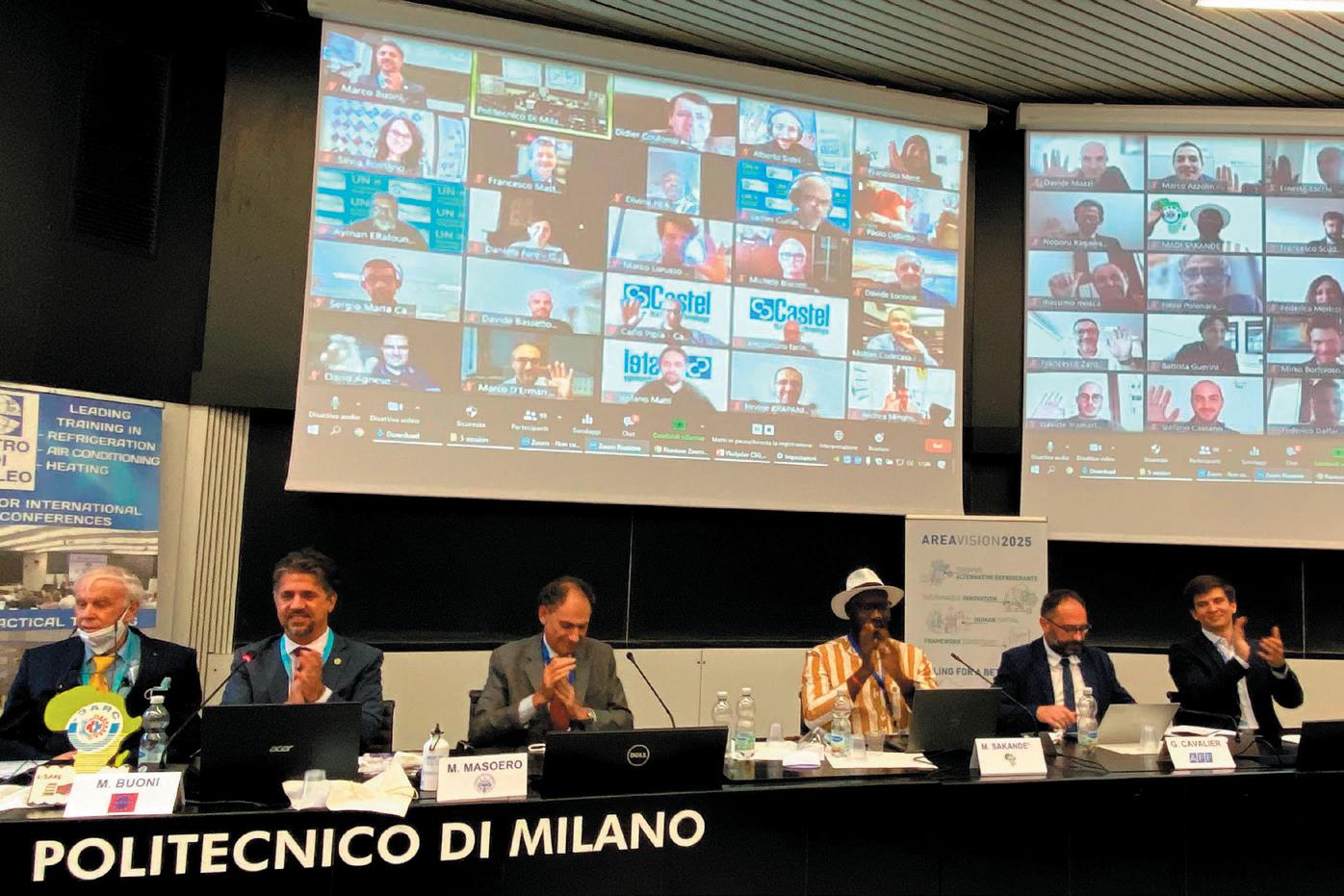


AREA represents European refrigeration, air conditioning and heat pump (RACHP) contractors. RACHP contractors are the essential link between end users and manufacturers. They design, install and maintain RACHP equipment using every available solution with complete neutrality towards equipment and refrigerants, in the sole aim of ensuring the highest level of reliability, energy efficiency and cost-effectiveness.
The European RACHP contracting industry fully subscribes to the EU’s decarbonisation and climate neutrality aspirations set out in the European Green Deal and, more recently, in the Fit-for-55 package.
In this spirit, AREA also stands by the F-Gas Regulation’s objectives of reducing emissions of fluorinated greenhouse gases, and in particular those with high global warming potential (GWP). In this respect, our members play an important role in the transition to climate-friendly RACHP solutions, bearing in mind that the overall environmental impact of RACHP systems needs to be considered beyond refrigerants’ GWP, with a particular focus on energy efficiency and circularity of applied materials.
have access to additional resources by clicking or scanning here
The F-gas Regulation is arguably the most important and impactful piece of EU legislation for our sector.
Its provisions dictate the conditions under which our contractors - the immense majority of whom are very small companies with a local market - carry out most of their operations.
As concluded by the European Commission’s review, the current F-Gas Regulation has successfully achieved its objectives, setting a gold standard for the rest of the world.
The Regulation has also had a tremendous impact on our industry, bringing opportunities but also unprecedented challenges that put many of our companies - in particular the smallest ones - to a tough test as regards refrigerants prices, available technical alternatives, and of course competence and skills. Despite the Regulation’s proven success, the proposal for a revision substantially toughens two of its core provisions - the phase-down scheme and the placing on the market prohibitions - with the stated goal of further accelerating the market penetration of alternatives, and in particular natural refrigerants. Yet, the proposal ignores the actual ability of the RACHP contracting sector to cope with such a surge. More worryingly, it fails to ensure that equipment working with alternative refrigerants can only be handled by competent contractors, thereby leaving the door wide open to widespread safety hazards and energy inefficient equipment. European RACHP contractors represented by AREA remain fully committed to the transition to climatefriendly alternatives to f-gases. For such a transition to be a success, several conditions ought to be met: the timing needs to be aligned with market and technological realities, equipment obsolescence should not be unduly forced, and alternative refrigerants – most of which are also greenhouse gases – should be properly regulated. It is also necessary that national authorities are ready. Indeed, they are in charge of setting and implementing some of the administrative framework surrounding many of the legal provisions, as well as enforcing those. Their readiness is a prerequisite so that market operators can fulfill their own respective requirements.
With this in mind, AREA would like to give its opinion on the proposal for a revision and make concrete suggestions for changes to ensure that the overall EU ambition is preserved.
The transition towards climatefriendly alternatives to HFCs can only happen provided the conditions for the safe and efficient use of those alternatives are set. Whilst the proposal rightfully aims to “facilitate the use of alternative substances” and includes HFOs, it falls short of translating this objective into a concrete framework actually allowing it to be achieved. This would be the case if the Regulation – or at least parts thereof – was to apply to all types of refrigerants. That would make the Regulation more comprehensive and coherent. Indeed, there is an intrinsic connection between fluorinated greenhouse gases and alternative refrigerants. EU policies on the former have an immediate impact on the latter, and ultimately it is the same market. Moreover, there is an obvious environmental rationale since most alternative refrigerants also are greenhouse gases with a GWP. An extension is therefore fully in line with the Regulation’s scope and legal base. Concretely, AREA suggests extending to ‘alternative refrigerant greenhouse gases’ the following requirements: - Training and certification scheme: whilst the proposal clarifies for the inclusion of alternative refrigerants in training and certification schemes, it does not mandate the installation and maintenance of RACHP equipment with alternative refrigerants by certified installers only, as is the case now with HFCs. Concretely, this means that anybody can install RACHP equipment running with hydrocarbons (flammable) or with CO2 (high pressures). Correlated with the fact that the new phase-down and bans will push the use of hydrocarbons for small air conditioning and heat
pump solutions in households, the proposal generates unnecessary safety (potential accidents) and environmental (lower energy efficiency) risks.
- Leak checks: as a complement to the point above, it is necessary to extend periodical inspections and leak checks to prevent safety risks on technicians, personnel and endusers. Since they were introduced in the 2006 F-gas Regulation, leak check requirements have proven to be effective and efficient, bringing lower leakage rates with positive climate and energy consumption impacts. With the increased use of alternative refrigerants, all of which present safety issues and many of which are flammable, regular leak checks are necessary to ensure safe and energy-efficient system operation. Countries such as Spain have already mandated leak checks on all types of refrigerants. - Sale of refrigerants: the existing requirements on the sale of fluorinated greenhouse gases, whether in bulk or pre-charged in non-hermetically sealed equipment, should be extended to alternative refrigerant greenhouse gases.
The current phase-down scheme has been a source of opportunities but also great challenges for small RACHP contractors, who were faced with shortages and sharp price increases. As it is proposed, the new stricter phase-down will pose enormous challenges for the entire heating and cooling industry, and this for several reasons:
- Threatens the full roll-out of heat pumps required as per RePowerEU - Already from 2027 onwards, difficulty to find refrigerant to service equipment
- With hundreds of thousands of technicians needing to be upskilled to safely handle highly flammable refrigerants, the installer base will just not manage to make the conversion in time unless there is concerted action from EU and national authorities to alleviate the shortage of both training facilities and trainers across Europe as there
remains a shortage of both training facilities and trainers across the EU. This is likely to amplify the already existing issue of unskilled companies and personnel installing equipment.
The complementary bans proposed seem almost redundant since the stricter phase-down will effectively prevent the use of virgin refrigerant for new equipment from 2027 onwards. Moreover, a number of terms used in the definitions of the bans are unclear and will lead to inconsistent interpretations: ‘self-contained’, ‘when required to meet safety standards’. Finally, the inclusion of “parts thereof” affects spare parts and components, meaning that it will be impossible to maintain and repair existing equipment. Not only does it go against the EU Circular Economy Strategy and EU Sustainable Product Initiative (SPI), but it also encourages extended use of inefficient equipment.
On specific bans proposed, AREA welcomes the comprehensive ban on non-refillable containers. On the other hand, ban 18 on stationary split air-conditioning equipment and split heat pump equipment comes too soon. An additional minimum of 3 years would be necessary for the market to adjust. In practice, the ban would push hydrocarbons solutions. Despite hydrocarbons’ high flammability, in the absence of mandatory certification, these units could then be installed by anybody and there would be no obligation to have them leak checked.
AREA supports the provisions aimed at addressing illegal trade and generally improving enforcement. We also welcome the possibility for Member States to enable electronic logbooks / electronic central database for record keeping obligations.
For the sake of transparency and consistency, the European Commission should be empowered to either develop such a tool at European level or establish a framework for national logbooks to be shared at European level.
Europe is simultaneously facing a climate change ‘emergency’ and a geo-political challenge of rapidly decreasing its reliance on imported fossil fuels.
Folker Franz Director General European Partnership for Energy and the Environment (EPEE)
Two fundamental strategic questions where a massive rollout of heat pumps is seen by policy makers as large part of the solution. However, the latest modelling by EPEE raises serious questions on whether there will in fact be sufficient HFC refrigerants available to make the heat pump rollout a reality.
On 5 April, the European Commission published its Proposal for the revision of the 2014 F-gas Regulation, to promote the reduction of the amount of HFCs placed on the EU market by 98% by 2050, as compared to 2015 levels.
Regulation, as an essential tool to further prevent and reduce emissions into the environment and to tackle the global climate change crisis, through the reduction of consumption of F-Gases, the phase down mechanism and other containment measures.
The current 2014 F-Gas Regulation requires the RACHP industry to reduce HFC consumption by 88% in 2030 compared to 2015 levels, and it has effectively become the golden standard worldwide for preventing 13% emissions in 2019 since its entry into force and a reduction of HFCs supply by 47% in the same period.
Federica Rizzo Senior Policy Director European Partnership for Energy and the Environment (EPEE)
This includes a wide range of proposed measures, including a stricter EU’s HFC phase-down mechanism, new restrictions, the removal of existing exemptions and additional requirements on F-Gases and F-Gas equipment.
Meanwhile, the EU institutions are in the process of endorsing their recently reviewed assumptions, in the context of ambitious legislative targets in terms of energy efficiency, energy savings, and climate neutrality objectives to be achieved by 2050.

This includes a reduction of Greenhouse Gas (GHG) emissions by at least 55% by 2030, compared to 1990 levels, outlined in several EU energy directives, as part of the “Fit-for 55” Package of the European Green Deal, which, of course, include measures on the Heating and Cooling sector.
EPEE – representing the Refrigeration, Air Conditioning and Heat Pump (RACHP) Industry in Europe – has always been a strong supporter of the EU F-Gas
However, the current revision of the EU F-Gas Regulation is also called to consider the recent EU strategic directions, outlined on 18 May 2022, in the so-called “REPowerEU” Plan, aiming to respond to the global energy market disruption, by rapidly reducing dependence on fossil fuels technologies, raising the level of energy efficiency, producing clean energy, and diversifying EU energy supplies.
For the Heating and Cooling industry, this is to be implemented through the deployment and instalment of millions of new heat pumps to fulfil the 2030 climate targets and accelerate the independence from fossil fuel technologies.
Within this context, EPEE has carried out for several years detailed modelling of the market trends and demands for HFCs and other refrigerants in the EU, as part of its HFC Outlook EU Modelling. This modelling tool has been developed in collaboration with Ray
Gluckman, a senior advisor to the Montreal Protocol Technical and Economic Assessment Panel (TEAP) and a member of the Montreal Protocol Refrigeration Technical Options Committee (RTOC), with over 30 years of experience in refrigeration and climate change.
The modelling tool which has been developed, with EPEE members, considers the following parameters:
• The significant growth in the bank of RACHP equipment, as well as the complexity and the granularity of the RACHP market which has been detailed in 43 different subsectors;
• The important contribution to decarbonisation of heating created by heat pumps;
• The trajectories for use of lower GWP refrigerants in new equipment that ensure the EU Energy Efficiency First principle is maintained and that safety is not compromised;
• The potential to reduce leakage rates and maximise gas recovery and re-use.

In view of the above, EPEE has updated its HFC Outlook EU model to consider the REPowerEU objectives of installing 10 million new hydronic heat pumps by 2027 and a further 20 million by 2030.
In the graph below (graph n.1), the yellow line shows the increased need for HFCs compared to the original (grey) trajectory based on the decarbonisation and climate neutrality goals, as part of the European Green Deal measures.

As described in the graph n.1, even without the RePowerEU remodelling, the needed amount of HFC for RACHP is much higher than the HFC quota newly proposed by the European Commission.


In this respect, a deeper analysis of the EU Proposal for the revision of the F-Gas Regulation with the HFC modelling has enabled to understand the proposed HFC phase-down is ‘de facto’ an HFC phase-out by 2027, that risks to seriously


jeopardize an accelerated and comprehensive heat pump roll out in the EU, expected to achieve, as soon as possible, the independence from fossil fuel imports.
Within this context, it is important to recognise the complexity of the RACHP market when making decisions about HFC phase-down ambition and supporting energy and climate policies. These complexities include general factors such as equipment size and application specific factors, including the use of equipment in sensitive locations. If these complexities are ignored, there is a risk that policies
lead to unintended consequences. It follows that the HFC-Phase down mechanism is best placed to cater for these complexities.
However, as highlighted in graph n.2, the HFC demand for servicing existing RACHP equipment would already exceed the available quota from 2027.
Indeed, according to the European Commission’s Proposal, all new equipment from 2027 would need to immediately use near zero GWP refrigerant, such as hydrocarbons or HFOs, which is currently an unrealistic timeline both in terms of technological development and

in terms of the needed number of installers trained and certified to handle the new refrigerants, many of which are flammable and pose risks to safety.
In addition, if new equipment is now purchased using low GWP HFCs then maintenance possibilities would be greatly reduced considering the currently expected lifetime of equipment is more than 10 years. Consequently, having to replace relatively new equipment for lack of HFCs would go against the recently announced EU’s Sustainable Products Initiative and the durability and reparability of products already placed on the market. Moreover, compared against the HFC phase-down steps required in the current EU F-Gas Regulation, EPEE’s HFC modelling shows that the RACHP sector could not be able to grow as projected and thus the European Green Deal targets for Heating and Cooling could be jeopardized, as shown in graph n. 2. Another important aspect of sector growth is the ability to export innovative, climate friendly RACHP equipment outside the EU.
In this respect, the refrigerant transition must consider that by far the biggest contribution of the RACHP industry to the European Green Deal is to move heating and cooling away from fossil fuel use towards efficient heat pump equipment based on fossil-fuel-free electricity.
EPEE modelling shows that abated CO2 in 2050 from heat pumps
systems will be 47 times greater than their direct (i.e., refrigerant) and indirect (i.e., electricity) greenhouse gas emissions, as illustrated in the following graph n. 3.
In view of the above, maintaining the current phase-down until 2030 would ensure sufficient refrigerants are available to accommodate for the needed roll out of heat pumps to deliver immediate emissions savings, to achieve the energy efficiency targets outlined in both the European Green Deal and REPowerEU, which requires an acceleration in the green transition.
Lastly, the HFC Outlook EU forecasts show that leakages represent a significant proportion of HFC consumption. The modelling also shows how both the 2006, first, and the 2014 F-Gas Regulation, after, have led to significant reductions in the leakages rates.
It is crucial that the future measures of the EU F-Gas Regulation help further reducing leakages across Europe, as an effective action to reduce HFC consumption and emissions. Reduced leakage is also likely to lead to improved energy efficiency and reduced energy related GHG emissions.
The current record keeping requirements could be strengthened by requiring use of a centralised
electronic reporting database, which would help providing updated information about leakage rates that could be used to consolidate data at EU level and support further initiatives to reduce emissions.
EPEE also welcomes the further update of the F-Gas Portal which should ease the administration of the F-Gas Regulation provisions and facilitate actions against illegal trade.
As highlighted above, the HFC Outlook EU model’s projections already take into account an expected increase in the re-use of HFCs through recycling and reclamation from end-of-life equipment.
Also, the current 68 Mt CO2e of unused authorisations, which allows non-EU manufacturers to import precharged RACHP equipment into the EU, is likely to be used up by 2027, considering the expected strong growth in heat pump equipment.
In the RACHP context, this is also of geopolitical importance, as the EU is largely dependent on HFC and HFO imports, and maximising refrigerant recovery and re-use aligns well with the EU circular economy and Endof-Life (EoL) policies.
In this respect, the HFC Outlook EU forecasts that the quantity of HFCs available for recovery each year - based on the quantity of HFCs banked in old equipment reaching end-of-life and any HFCs that are being retrofitted with a lower GWP alternative - should be considered as best practice, promoting compliance with the gas recovery provisions and using the circular economy to supply reclaimed HFCs. It is important that the EU institutions and Member States consider ways to ensure that F-Gas recovery is maximised, and, so to achieve additional numerous benefits in terms of environmental protection, safety, and energy efficiency, that the current scope of containment and recovery is widened to all types of refrigerants, including non-fluorinated alternatives.
In the frame of the HCFC phase-out management plan for Madagascar, in 2022 the Train the Trainers event delivered by Centro Studi Galileo took place in Antananarivo, in cooperation with the National Ministry of Environment and Sustainable Development, with the support of the United Nations Industrial Development Organization.
Also in this respect, improved monitoring and reporting is important to ensure a better interaction with other environmental and waste policy mechanisms.

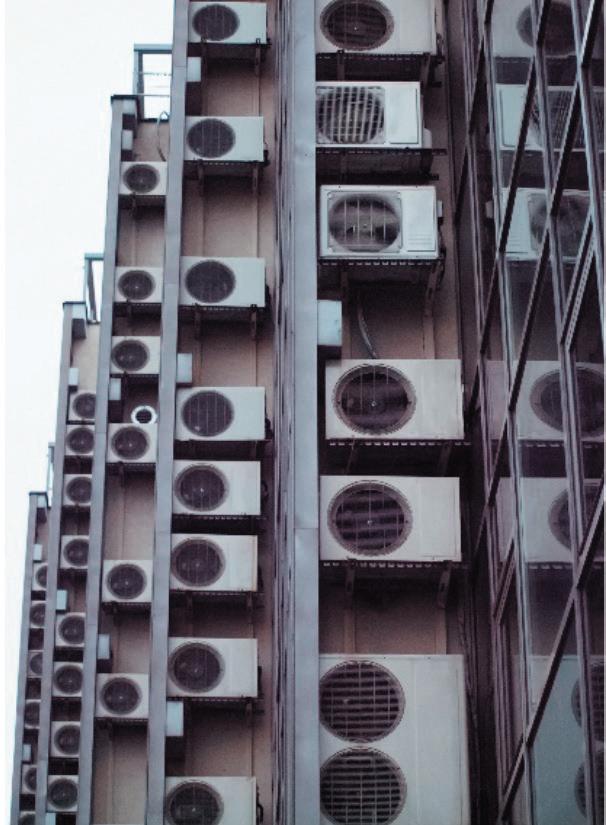
Environmental Investigation Agency (EIA)
Clare Perry
 Climate Campaign Leader
Environmental Investigation Agency (EIA)
Climate Campaign Leader
Environmental Investigation Agency (EIA)
The UN’s Intergovernmental Panel on Climate Change (IPCC) warns that the window of opportunity to avoid catastrophic impacts of climate change is rapidly closing. The need for clean cooling has never been more pressing and almost a decade after the EU agreed its hydrofluorocarbon (HFC) phase-down, energy-efficient cooling technologies relying on climate-friendly natural refrigerants are continually gaining market share. Yet current global measures to limit HFC use do not reflect the level of ambition needed to tackle the spiralling climate crisis. This paper analyses what we have learnt over the last decade through the EU’s pioneering F-Gas Regulation, including effective demand reduction strategies through equipment and product prohibitions and the need for robust policy measures and implementation to counteract illegal trade in HFCs. It examines the changes needed to deliver a revised EU F-Gas Regulation in line with the European Green Deal and considers how lessons learnt in Europe can inform a rapid global transition away from climate polluting HFCs.
Ten years after the European Union (EU) began negotiations to agree the world’s first mandatory phase down of hydrofluorocarbon (HFC) greenhouse gases, the world has changed significantly.
In February 2022 at the launch of the Working Group II report of the IPCC’s Sixth Assessment Report, UN Secretary General António Guterres said: “I have seen many scientific reports in my time, but nothing like this. Today’s IPCC report is an atlas of human suffering and a damning indictment of failed climate leadership.” But the looming climate crisis we face is still avoidable with rapid and deep emission reductions
across all sectors. Scientists agree that to avert dangerous impacts of climate change we must limit temperature change to 1.5°C above pre-industrial levels. This requires global greenhouse gas emissions to peak before 2025, reduce by 43% by 2030 and reach net-zero by 2050. Cooling is at the nexus of climate change, an essential adaptation tool for a warming world, yet a major source of emissions. About 30% of emissions from cooling come from the refrigerant, with the rest associated with energy used by equipment.
Avoiding the use of HFCs and other fluorinated gases can therefore have a rapid impact on reducing emissions from cooling. There is widespread availability of efficient natural refrigerant-based technologies across many sectors, but we need effective HFC demand reduction strategies to promote further innovation and ensure uptake of climate-friendly alternatives.
In 2016, Parties to the Montreal Protocol made history with the adoption of a global agreement to phase down HFCs. Under the Kigali Amendment, most developed countries began HFC reductions in 2019 while most developing countries will freeze their consumption in 2024 with reductions beginning in 2029. Prior to the Kigali Amendment, the EU had already capped HFC consumption in 2015 under the EU F-Gas Regulation. Supply of HFCs in carbon dioxide equivalence terms (CO2-eq) has been reduced by 47% from 2015-19.
The next reduction step takes place in 2024, when HFC supply is cut to 31% of the 2009-12 baseline. The EU is now reviewing the F-Gas Regulation with a view to more ambitious emission reductions, in line with the European Green Deal.
This review gives an opportunity to appraise which aspects of the EU F-Gas Regulation have been most successful and areas where improvements are needed. It is also a chance to reflect on policies within the Regulation that can offer learnings to other countries phasing down HFCs.
Although centred around a phasedown, bans on HFCs in new equipment are core demand reduction measures used by the F-Gas Regulation. These act as signposts for both equipment manufacturers and end users guiding them away from investment in soon to be obsolete technologies. The 2014 EU F-Gas Regulation missed the opportunity of adopting a broader range of bans across sectors, however its commercial refrigeration equipment ban has demonstrated the value of this approach. Although the ban only came into effect in 2022, eight years after the Regulation was adopted, it sent a clear signal to end users which has resulted in rapid uptake of alternatives such as CO2 transcritical systems.
Today the EU is a hub of innovation in the sector. As of March 2021, it was estimated that of the approximately 48,000 CO2 transcritical systems used in commercial refrigeration globally, 38,400 were in Europe, compared to 29,000 in March 2020. The number of transcritical systems is expected to double 2021 levels by 2025.
Likewise, the European Commission evaluation of the F-Gas Regulation identified that the major driver for an observed reduction of HFCs in stationary AC was the replacement of HFC-410A (GWP 2088) with HFC-32 (GWP 675 ) in new small split units, in advance of a 2025 new equipment ban with a GWP threshold of 750, and the replacement of HFC410A with propane (GWP<1) in new hermetically sealed moveable units, in line with the 2020 new equipment
ban with a GWP threshold of 150.
As we face a rapidly warming world the need for domestic airconditioning will grow. Representing over a quarter of global refrigeration and air conditioning sales, action to reduce HFC demand in this sector can support both international HFC phase-down commitments and sustainable development. Single-split systems dominate this sector, with around 100 million units produced annually. In the current F-Gas Regulation, new single-split air-conditioning systems containing less than 3kg of HFCs with a GWP of 750 or more are banned from 2025. This is credited with a massive increase in the number of HFC-32 units entering the market, with an estimated 80% share of the import market.
In proposed changes to the EU F-Gas Regulation the GWP threshold for split systems of less than 12kW will be further reduced to 150 in 2027. Given that technologies using propane are already available, the delay to 2027 is unnecessary.
A recent change to the international product safety standard IEC 603352-40 for household heat pumps, air-conditioners and dehumidifiers will enable propane to be used in many AC and heat-pump systems which were previously blocked. The development of policies aimed at incentivising the import and use of such equipment in developing countries is critical, to protect them from environmental dumping of inefficient refrigeration and airconditioning equipment using high-GWP refrigerants, which has been documented on the African continent.
Starting with the ‘worst first’ approach to HFCs can lead to cost-effective rapid emission reductions. HFC-404A (GWP 3922) is commonly used in commercial and transport refrigeration systems. Leakage rates in these sectors are high, compounding emissions and reducing efficiency. In fact, the Commission’s Evaluation report
has identified that higher leak rates are observed for R404A than other refrigerants. From 1 January 2020 the EU banned the use of HFCs with a GWP of 2500 or more in new stationary refrigeration equipment. It also banned their use for servicing refrigeration equipment with a charge size of 40 tonnes CO2e or more (e.g. more than 10 kg of HFC-404A), requiring supermarket operators to switch out their large HFC-404A or HFC-507A systems with lowerGWP HFCs. However, the provision exempts very low temperature systems, military use and reclaimed and recycled gases as well as small refrigeration systems.
Fuelled by high market prices and ongoing demand, a thriving black market in HFC-404A has developed. In 2020 almost one-third of HFC seizures in Europe were HFC-404A while 60% of a series of seizures in Spain during summer 2021 were HFC-404A.
Given the plethora of available natural refrigerant solutions as well as lower-GWP HFC drop-in alternatives, there is no need for the continued use and inevitable emissions of very high-GWP HFCs like HFC-404A. The sale and use of high-GWP HFCs should be completely prohibited, globally.
The illegal trade in ozone depleting substances (ODS) emerged in the 1990s. As chlorofluorocarbon (CFC) production was winding down in developed countries its use was rising in developing countries, notably China and India, due to their later phase-out schedule. A continued demand in developed countries for cheap CFCs to service the installed capacity created opportunities for a profitable black market.
In response, the Montreal Protocol was amended in 1997 to require a licensing system for ODS, which has helped to monitor and control the global ODS trade, however the illegal trade has continued to be the Achilles heel of an otherwise remarkably successful global agreement.
Figure 1: Ten tonnes of HFC-404A seized by Dutch customs in September 2020. Copyright Netherlands Human Environment and Transport Inspectorate (ILT).

As the first region in the world to cut the supply of HFCs, the EU has experienced first-hand the challenges of illegal HFC trade and has learned the hard way the vital importance of a robust HFC licensing system. HFC prices in the EU increased significantly from mid-2017 in anticipation of a major reduction step in 2018, peaking at levels 6 to 13 times higher than in 2015. The high prices stimulated a black-market trade, ably assisted by vast profits, low chance of detection or penalties and a lax licensing system wide open to abuse. EIA estimates that illegal trade of HFCs in 2019 amounted to as much as 20-30% of the legal trade, equivalent to potential emissions of 30 million tonnes CO2e and over €77million in lost VAT and customs duty revenues.
Fundamentally, the key challenge was the absence of a real-time per shipment licensing system which would allow customs officials to determine if an HFC import was covered by a quota. In contrast to the previous ODS licensing system, the F-Gas Regulation, which predated the Kigali Amendment, merely put in a place an electronic registry which required companies to register before being able to apply for quota and was used to manage the quota authorisations and annual posthoc reporting. Customs authorities could check if HFC importers were registered and had quota, but did not have access to information regarding the amount of quota or how much quota was left. Other measures that are essential
Copyright: PROZON Fundacja Ochrony Klimatuto support effective enforcement include:
• Licensing should include all HFCs, whether exempt from the phasedown or not (e.g. feedstocks) and include special customs procedures such as transit, temporary storage and import for re-export;
• Use of modern approaches such as QR codes or blockchain to monitor HFCs through the supply chain.
• Restricting import and export of HFCs to specific customs offices where authorities are fully trained with adequate equipment and resources to deal with HFCs;
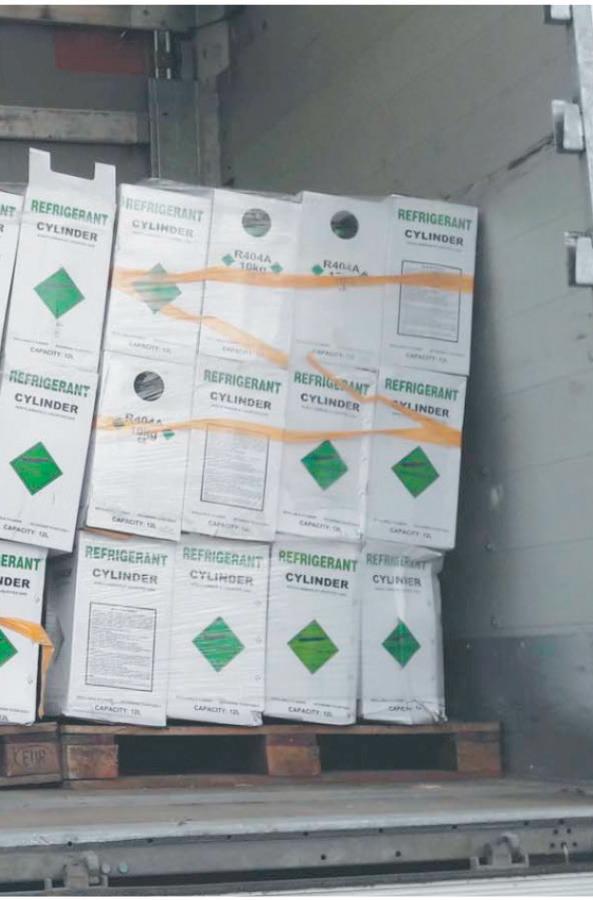

• Ensuring illegal HFCs are seized and destroyed;

• Establishing minimum penalties for illegal HFC trade that are proportionate to the profits involved;
• Banning the import, sale and possession of high-GWP HFCs and non-refillable cylinders;
• Restricting sales of HFCs to genuine traders through a process of mandatory certification and banning sales through online marketplaces.
Since the phase-out of ODS began more than 30 years ago, the key sectors relying on ODS have undergone several transitions – from CFCs to hydrochlorofluorocarbons (HCFCs) to HFCs. With the adoption of the Kigali Amendment, the world is poised to phase down HFCs, however some low-GWP HFC substitutes (i.e. hydrofluoro-
olefins, HFOs) and their degradation products belong to the group of per- and polyfluoroalkyl substances (PFAS). PFAS have toxic and persistent bioaccumulative effects and their production and use has resulted in severe contamination of soil, water and food as well as harmful exposure to humans. For example, HFC-1234yf, which is increasingly used in mobile air-conditioning and in HFC blends, breaks down into trifluoroacetic acid (TFA), which is harmful to aquatic life and also found in drinking water. PFAS are known as ‘forever chemicals’ since their lifetime is around 1,000 years before they degrade. As we face the triple planetary crisis of climate change, pollution and biodiversity loss, surely now is the time to jump off the chemical treadmill and incorporate environmentally sustainable and future proof clean cooling solutions into effective HFC demand reduction policies.
have access to additional resources by clicking or scanning here

While a great deal of progress has been made on the transition from HFC refrigerants to the nextgeneration, low-GWP alternatives, a considerable amount of work remains before we can declare global victory and begin to focus our attention elsewhere.
This paper will explore the current state of the HFC phase down In the United States, including the latest EPA initiatives, building code efforts in the states, lessons we’ve learned from others’ F-gas experiences, and efforts to educate technicians on safe handling of alternative refrigerants and strategies to curb releases of refrigerants into the atmosphere.
As I write this, the United States Senate is poised to consider the ratification of the Kigali Amendment to the Montreal Protocol, the global HFC phase down treaty already ratified by nearly 130 countries. While we are confident of ratification, it’s important to remember that such an action requires the assent of twothirds of those Senators present and voting (67 votes if all 100 Senators are present).
The United States Constitution deliberately makes treaty ratification challenging, and today, in an election year, with a Senate nearly equally divided between Democrats and Republicans, it is particularly difficult, and time is of the essence. Even so, Kigali ratification is strongly supported by industry and the environmental community alike, so we remain committed and confident.
So, how did we get here – standing on the brink of success? The journey was long and arduous, as any monumental, worthy path is likely to be. Planning, research, collaboration, and continuous communication were all key to the effort’s ultimate success.
It began with a well-thought-out plan, one that the HVACR industry has followed assiduously and doggedly for well over 10 years, bringing together disparate communities united in this case by a common goal.
The essential, global replacement of a class of refrigerants that, while hugely successful in terms of efficiency, affordability, and availability, have proven to be too environmentally detrimental to continue in widespread use. Even as the industry began meeting with Obama Administration officials and friends in the environmental community in the early 2010s, AHRI’s research arm – the Air-Conditioning, Heating, and Refrigeration Technology Institute – embarked on a major research project to identify the generation of refrigerants to take the place of HFCs. If the industry was going to transition from HFCs, it had to be certain the replacements would be suitable – efficient, affordable, and plentiful. We will discuss this further, below. Even though industry and the environmental community agreed

with respect to phasing down HFCs, convincing administration officials in the White House, the Department of Energy, the Environmental Protection Agency, and the Department of State that the United States needed to lead the charge on such an ambitious undertaking took considerable time and effort.
While we are sure this is not the case in Europe, aligning the needs, wants, and priorities of three federal agencies and their superiors in the White House can be akin to trying to line up rows of empty bottles on the deck of a ship during a storm.
But as nations, regions, and U.S. states accelerated their individual phase down plans, the disparate entities came together and what became known as the Kigali Amendment was formed and perfected, ultimately being approved by the Meeting of the Parties in October of 2016.





That inspiring and exciting day marked only the beginning of the process, however, for even though many other nations quickly ratified the agreement, the United States’ political situation was upended by the unexpected election of Donald Trump, who had campaigned on withdrawing his country from the Paris Agreement, putting the fate of Kigali in doubt.
Even though President Trump never publicly uttered a word one way or the other about the Kigali
Amendment, he also never sent it to the Senate.
What he did do, in the waning days of his administration, is sign legislation containing a national phase down structure mirroring that in the Kigali Amendment -- a very key accomplishment for our industry, particularly during a very heated election year.
That legislation – the American Innovation and Manufacturing (AIM) Act – gave the Environmental Protection Agency the authority to regulate high-GWP refrigerants.



As mentioned earlier, committed at the beginning of this process to the research necessary to identify the next generation of refrigerants to take the place of HFCs.
From testing to modeling to servicing to detection, the industry has spent more than US$7 million on more than 11 research projects to ensure continuity of the health, safety,
comfort and productivity provided by the products and equipment we make.
In addition to Kigali Amendment ratification – which is important to protect U.S. manufacturers in the global marketplace – significant challenges remain for our industry in the areas of building and fire code development and updates and education and training, both in the U.S. and around the world. That’s because the most promising refrigerants identified are classified by ASHRAE as A2L (low flammability). Our extensive research program provided the scientific basis to update safety standards for the use of new refrigerants. The new safety standards must be adopted into building codes across the United States. So, after the challenge of securing U.S. commitment and leadership for the Kigali Amendment and the challenge

of identifying suitable alternatives, the challenge for our industry now is to successfully update safety and building codes to enable the use of the alternative refrigerants identified by our decade-long research program.
A significant part of that challenge has been to convince the fire service of the relative safety of these new refrigerants – a process that has been underway for several years and has resulted in the first refrigerant training developed by firefighters for firefighters based on a demonstration project showing first responders how refrigerants behave in a fire.
And the success of that effort has led to numerous states now accepting the use of A2L refrigerants (shown in the map in dark green and light blue), in a process that is ongoing.
AHRI and its members have been unrelenting in our efforts to revise current building codes to allow A2L use and also to convince cities and state legislatures to allow their use. As you can see from the map, this effort is far from over, but considering that we began with grey states from sea-to-sea, we have met with considerable success thus far
As part of the standards updating process, ANSI/ASHRAE Standard 15.2 was recently approved and is expected to publish shortly as the USA’s first application standard specific to residential air conditioning.
This standard includes inputs from seven public reviews as well as findings from the latest industry research.
With the move to lower-global warming potential refrigerants, more rigorous application safety requirements were required for residential systems, which led to the creation of this new standard.
ASHRAE 15.2 was crafted with the building codes in mind and is designed so that it can be readily understood and applied by a wide range of stakeholders.
Efforts were also made, where possible, to harmonize requirements with the existing ANSI/ASHRAE 15 standard, as well as the UL 603352-40.
Once codes allow widespread A2L use, proper technician training is essential to enable a seamless transition for consumers.
AHRI has been working with its colleagues in the contractor and distributor community as well as with North American Technician Excellence – the technician certification authority – to ensure those who install and maintain equipment are trained in proper A2L handling techniques and protocols. In addition, all the research findings have been made available to the firefighting community and code officials.
These are very significant steps and victories on our refrigerant transition path, and it has taken the combined efforts of manufacturers, government agencies, laboratories, and others to accomplish them.

The AIM Act mandated that the EPA implement a national HFC phase down, a process that will be accomplished through the use of allocations, i.e., gradually tightening HFC supplies, as was the case in the transition from HCFCs to HFCs.
The next significant step-down is in 2024, when the U.S. and other developed (A2) nations will need to reduce HFC use 40 percent compared to the baseline – not a small feat.
That looming deadline makes it imperative that building codes and state laws be changed to allow the
use of A2Ls.

The EPA already has done its part on the national level, allowing the use of A2Ls in residential and light commercial air conditioning beginning in May 2021, subject to safety standards. Such refrigerants already were permitted for use in auto air conditioners (2011) and window units and PTACs (2015).
This process is tantalizingly close to completion with respect to the technical implementation details, and we are confident that at this point next year, we will be able to state that there’s little left but the rest of the phase down steps and ongoing technician training. It has been an admirable collective effort and one for which the industry can be very proud.
have access to additional resources by clicking or scanning here
In 2016, the Kigali Amendment to the Montreal Protocol treaty recognized the effect that high global warming potential (GWP) hydrofluorocarbon (HFC) refrigerants have on the environment, and hastened a shift to lower-GWP refrigerants.

American Society of Heating, Refrigerating & Air-Conditioning Engineers (ASHRAE)
Global Vice President, Environmental Sustainability - Emerson
This transition from legacy HFCs to emerging low-GWP refrigerants is causing component and system-level architecture changes in both comfort cooling/heating and commercial refrigeration applications (HVACR industry).
When large-scale changes in system architecture such as this occur, they also introduce changes to design, installation, the commissioning process and maintenance practices of these equipment.
This in turn leads to a requirement for retraining of the HVACR technician workforce. Although the shift from high-GWP HFCs to low-GWP alternatives yields many environmental benefits, it also presents new challenges and opportunities.
New refrigerant alternatives — including natural and/or synthetic options — have less direct impact on the environment due to their lower-GWP ratings. This is by far the most important benefit that the next generation of refrigerants can provide. A challenge that original equipment manufacturers (OEMs) and end users face is answering a key question about equipment longevity: how low does the GWP have to be to support the equipment throughout the full lifecycle? Keep in mind that for end users, they hope to keep their equipment operational from ten to twenty or even thirty years — such is the typical lifespan of HVACR equipment.
Figure 1 demonstrates how the HFC phase-down in Europe (shown as an example) will result in rapidly changing regional and local regulations in a relatively few years. For OEMs, this will introduce significant challenges, especially to avoid the potential for stranding any equipment in mid-design cycle. Additionally, the design of the HVACR system must account for several refrigerant-specific factors and characteristics, such as:


- CO2 (or R-744) has high pressures
- Propane (or the A3 R-290) has a higher flammability rating
- Synthetic A2L refrigerants (such as R-32) have a lower flammability rating and a degree of glide
The higher pressure and flammability factors have already reshaped equipment design strategies, requiring higher strength to handle pressures and less (or near-zero) leaks for flammable refrigerants. Leak detection and sensing technologies and associated control systems for safety management and
risk mitigation are examples of new system requirements.
OEMs also need to understand equipment energy consumption (both on an annual basis and peak load conditions), system first cost, long-term cost of maintenance, and the effects of refrigerant glide, especially in reversible systems like heat pumps.
Even with these new requirements and challenges, it is possible for the HVACR industry to overcome them and phase down the use of HFCs at a measured pace. Doing so will require stakeholders to use all available tools in the refrigeration toolbox.

While there are many tools available, some are more effective than others in their abilities to address emerging design challenges.
Transitioning to low-GWP refrigerants, especially those that are flammable, has led to a strategy of minimizing the refrigeration (or heating) load to the lowest possible value. Load reduction reduces the size of the system, and therefore the amount of refrigerant charge needed. At the same time, this lowload strategy has the added benefit of reducing the power and energy consumption, therefore contributing to lower greenhouse gas (GHG) emissions.
When refrigeration systems require a precise quantity of refrigerant (aka critically charged), their leaktightness becomes even more important. Even small leaks must be detected and risk mitigation measures taken to manage safety (see safety standards and codes section).
The associated benefits of load reduction are also applicable for existing systems. Thus, proper retrofitting of existing systems or the installed base offers another opportunity to improve performance and achieve environmental objectives.
For example, simply adding doors to refrigerated display cases can
Figure 2: OEMs need to leverage key enabling technologies and design strategies with new refrigerant alternatives2

reduce loads, power and energy by as much as two-thirds. In a comfort cooling or heating system, this could be something as fundamental as adding insulation to the building envelope (walls or attic). As the HFC phase-down proceeds and supplies decrease, we can expect it to become more difficult to service of existing and/or legacy HFC-based equipment. Thus, retrofitting to a lower-GWP replacement refrigerant is recommended whenever possible — in addition to making sure that the legacy equipment is maintained well and leak tight. While it is not permitted to retrofit a system currently charged with a non-flammable HFC refrigerant to a low-GWP flammable refrigerant replacement, one can usually find lower-GWP candidates of the same flammability class. Reclaiming and reusing legacy HFC refrigerants will also become a mandatory step as the regulatory phase-down and the rising price of refrigerants make it cost-prohibitive — and environmentally harmful — to vent HFC refrigerants into the atmosphere.
As previously mentioned, many of the low-GWP refrigerants to which the HVACR industry is transitioning are classified as A2L with a “lower flammability” rating. Because this A2L classification is relatively new, some safety standards are still in the process of being completed especially in commercial
refrigeration. Figure 3 lists the major applicable global safety standards, including IEC, ASHRAE and UL.
In many parts of the world, the standards are yet to be adopted into the state, regional or national codes or legal frameworks. Trade practitioners — such as engineers and technicians and inspectors — must familiarize themselves with a completely new approach to handling and using these flammable refrigerants. There are many resources that are being developed by AHRI4 and ASHRAE/UNEP5 to facilitate this education process. Embedded within these new safety standards are requirements for leak detection, risk mitigation and safety management techniques — all of which will be more important than most people realize in enabling the use of flammable refrigerants in these systems.
Leak detection and repairs aimed at safety also serve the purpose of preventing loss to the atmosphere and the negative direct global warming impact. Although detecting small quantities of refrigerant leak can be a challenge, many leak sensor and risk mitigation technologies are emerging in the commercial market well in advance of the low-GWP transition deadlines in the United States. It’s interesting to note that equipment owners are already evaluating and deploying these leak detection devices for their existing asset bank of high-GWP A1 HFC refrigerants — an early and unexpected side benefit of the transition to flammable refrigerants.
Figure 3: Engineers and technicians must follow globally available Standards and codes for equipment design and use with new low GWP refrigerants4


phase-down. Designing a system for minimum refrigeration load is the first step in this process. Minimizing load through design strategies (i.e., insulation, doors, heat recovery, etc.) needs to be followed by proper selection of equipment with a holistic focus on entire system performance — not just the individual components). In addition, installation best practices, proper commissioning and most importantly ongoing maintenance throughout the equipment lifecycle will be key to achieving required system energy efficiencies.
Figure 4: This illustration of the classic “duck curve” for energy consumption in California demonstrates the mismatch between power availability and need7
Although the direct global warming impact from refrigerant leaks is often at the center of environmental attention, the indirect impacts from the energy used by the equipment itself is nearly fifty times greater6 As figure 4 reveals, the demand for power in California is highest in the evening hours, and during the middle of the day, demand slows down considerably. Typically, “peaker” fossil fuel plants must be brought into operation to compensate for this evening shortfall. As regulatory focus shifts to GHG emissions reductions, renewable sources of power like solar and wind are growing in value and importance. All of this will only

lead to the effect of the “duck curve” being exaggerated as renewables like solar generate most of their energy during the middle of the day. This energy consumption pattern is important to consider within the context of low-GWP refrigerant transition: It can only succeed if the energy and the peak power do not further add to the resiliency issues that the electric grids already face throughout much of the world. Varying degrees of this duck curve phenomenon exist in all regions of the world; they will need to be understood and addressed to prevent brownouts and blackouts. Thus, the energy efficiency of the new generation of low-GWP refrigerants is a key part of the transition — which is also recognized as vital to the success of the HFC


The environmental benefits from the HFC phase down does not come without its cost and challenges. Yet, these challenges, when met and overcome, can potentially lead to great opportunities for the HVACR industry while bringing the benefits of comfort cooling and heating, hot and sanitized water, refrigerated food and pharmaceuticals to all regions of the world. The continued growth and evolution of refrigeration and cooling must be realized in a sustainable manner, beyond merely transitioning to low-GWP refrigerants. Over the course of the next decades, we will see innovations in the use of CO2, hydrocarbons, and even water and air as the refrigerant — not to mention the various other so called “not in kind” or non-vapor compression technologies. As an industry, we are at the beginning of a new phase of inventions that will make the past hundred years seem ordinary!
have access to additional resources by clicking or scanning here


To reduce greenhouse gas (GHG) emissions from around the world to net (virtually) zero, there is a strong need to develop heating, ventilation, air conditioning, and refrigeration (HVACR) equipment that can minimalize the environmental impact. They will be equipment and systems that use refrigerants with low global warming potential (GWP) to realize a sound material-cycle society. In addition, smooth development and market introduction of highefficient equipment using low GWP refrigerants, and establishment of refrigerant management systems for each county or region have been required.
For the purpose, it is necessary to rapidly develop safety and reliability (and practicality) equipment and systems. It is also required that the amount of refrigerant charged

is small, refrigerant leakage during operation is limited, and the refrigerant is completely recovered when the equipment / system is disposed even if the GWP of the refrigerant is low. However, research and development and practical application of new refrigerants that can meet the same performance requirements as existing refrigerants have just begun. In this paper, the development status of low GWP refrigerants in Japan and the mass balance charts of refrigerant production, import / export, recovery, regeneration (reclamation / reuse), and destruction in the EU, US, Australia, and Japan will be introduced. Furthermore, equipment and mechanisms and refrigerant management circle (RMC, Fig.1) will be proposed with an example to realize a sound material-cycle society.





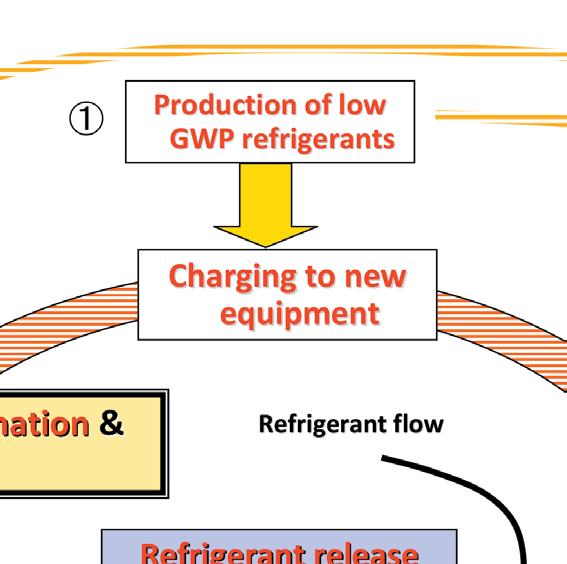

Figure 2: Mass balance of HFC refrigerant in EU, US, AU and JP Upper row: domestic production / import / reclamation (supply side), lower: reclamation /destruction / export / stocked in market

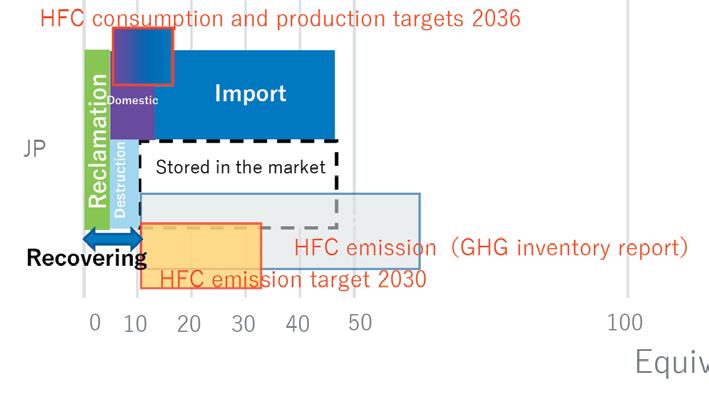




Low GWP refrigerants including HFOs have been developed for some products such as household air conditioners (room air conditioner – RAC), air conditioners for stores and offices (packaged air conditioner – PAC), automobile air conditioners, condensing units, stationary type refrigerators and refrigerating units, and centralized refrigeration equipment.
The typical GWP decreases between 1/1800 and one third. For example, the GWP of the refrigerants for RACs and small PACs have been reduced from 2090 (R 410A) to 675 (R 32), automobile air conditioners from 1430 (R 134a) to 1 or less (R 1234yf), centralized refrigeration equipment from 1810 (R 22) to 10 or less (R 717 NH3, R 744 CO2).
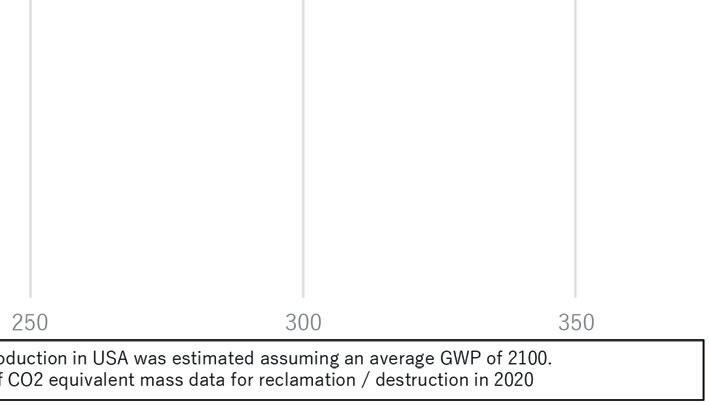

New refrigerants are under the development for some equipment products such as variable refrigerant flow (VRF) / variable refrigerant volume systems (VRV). Safety confirmation specified by safety code and available

regulations have several issues, including flammability, toxicity, and stability as a practical refrigerant. This is because most of the new refrigerants developed have mild (safety code: A2L, B2L) / weak (A2, B2) / strong flammability (A3, B3). Also, some candidate refrigerants are nonazeotropic mixture whose temperature glides along the isobars in the two-phase region. They may have some problems in the operability, maintainability, and storability, including heat transfer characteristics of heat exchanger due to their complex thermophysical properties.
To maintain of the strict Kigali amendment schedule, the Government of Japan has decided to include some VRF / VRV as a designated product with a target value of 750 GWP. In addition, there is a possibility that RACs and air conditioners for automobiles with a gross vehicle mass of 7500 kg or more will be designated with a GWP of 150 or less.
The above issues raise the bar for clearing more than ever but will be realized with new technologies and circumstances.
(1) RAC and PAC with R 32
There are small sprit air conditioners using R 32 for Split RACs and PACs. Approximately 10 million RACs sold in Japan use R 32 each year, and some PACs use R 32 under PAC safety standards. Less than or equal to 10 kW (cooling capacity) PAC satisfied the officially designated target of GWP 750 (product weighted average) in 2020.
(2) Centralized refrigeration equipment with R 717 and R 744 Refrigeration systems have semi-hermetic interior permanent magnet, IPM, motors driving ammonia (R 717) screw compressors. Each compressor has a double economizer. The IPM motor driven by a variable frequency driver achieves 5 to 10 % higher efficiency than conventional induction motors. Other technologies that include shell and plate type heat exchanger for both condenser and evaporator, minimization of ammonia charge, and safety indirect cooling method
Figure 3: Estimated refrigerant mass balance (FY2020) and ideal RMC* for automobile air conditioners. The numbers in figure are estimated from METI’data in 2020.
(second refrigerant) with R 744. As the result, the power reduction ratio of installed cold storage warehouses can achieve up to 20 to 40 %.
(3) Condensing unit and stationary type refrigerator with R 744 a. To improve the COP of CO2 (GWP=1) condensing unit, a cascade system was developed for convenience store, supermarket, cold room for food storage, and others. The unit can operate in middle temperature or/ and low temperature application (different evaporating temperature operation). All-aluminium microchannel gas cooler is applied. A direct expansion system is applied in each loop in the case of one evaporator system.
b A gas injection CO2 cycle to maintain the pressure between the connecting pipe and loading apparatus at an intermediate pressure was developed. New technologies are also applied, e.g., liquid injection from the gas injection pipe of the compressor to decrease the motor temperature, speed control of the gas cooler fan, and side by side gas cooler installation by a counter flow.
c. A two-stage compressor and refrigeration system with CO2 has been developed. The unique technologies are two-stage rotary compressor, mechanical
subcooling refrigeration cycle, socalled split cycle, etc.
(4) Hot water supply with R 744
Another pioneering development is household hot water heating units using CO2. Approximately 560 thousand units of CO2 household hot water heating units were sold in 2021, and 7.6 million units have been installed since 2001.
There are many developments with new low GWP refrigerants including natural refrigerants. Most of them require new technologies that increase the cost of COP (energy performance) improvement and maintenance under their legal or voluntary safety guidelines. There are many kinds of refrigerants including nonazeotropic mixtures / flammables, which have been developed for adequate use to satisfy all environmental requirements such as low carbon footprint and approach to SDGs. However, this will create new confusion in the HVACR field, which use a lot of different kinds of refrigerants.
As shown in the mass balance (mass equivalent to carbon dioxide emissions) of HFC refrigerants in 2020 (Fig. 2), the amount of refrigerant stored in the market being enclosed in equipment (partly leakage and emissions into the

atmosphere) is gradually decreasing due to each measure.
As the transition from CFC and HCFC refrigerants to HFC is progressing, HFC refrigerant emissions reported in the GHG inventory (grey bar in Fig. 2) are increasing.
On the other hand, Japan’s Home Appliance Recycling Law and Automobile Recycling Law are clearly effective in improving the amount and recovery rate of fluorocarbons including CFC and HCFC.

From this figure, the amount of reclaimed refrigerant distilled after recovery has increased, and that of destroyed refrigerant has decreased.

The amount of reclaimed refrigerant is increasing year by year, which is almost the same as in the EU and US, but the ratio to Japanese market input amount is slightly higher (Table 1).
GHG emissions in Japan in 2020 will decrease by 38 million t-CO2e from 2019 to 1.15 billion t-CO2e due to improvements in the energysaving technologies that have been energetically tackled since the oil crisis in the 1970s(2). Meanwhile, HFC refrigerant emissions (from all fields, but primarily from HAVCR, grey bar in Fig. 2) increased HVACR by 2.0 million t-CO2e from 2019 to 51.7 million t-CO2e (2). As shown in Fig. 2, the actual consumption value of HFC refrigerants (= domestic production + import) in 2020 was about 41.2 million t-CO2e, a decrease of about 8 million t-CO2e from 2019.
In order to further improve the effectiveness of measures against the refrigerant problems, HFC refrigerants were added to the regulatory target in 2018 under the “Ozone Layer Protection Law” that regulates CFC and HCFC refrigerants.
With the Kigali Amendment, several measures such as the production and consumption regulation of HFC refrigerants have been taken (the blue-purple bar graph in Fig. 2 is the target value for 2036). Since Japan’s Freon Emission Control Law was revised in 2020 and penalties were strengthened, so it is expected that the refrigerant recovery rate will improve significantly.
Table 1: Market input, emissions, reclamation, and destruction of HFC-based refrigerants (2020)





Even with the successful developments of some new low GWP refrigerants and their equipment unit, the RMC remains important (Fig. 1). Because low GWP refrigerants are fluorinated compounds, they are valuable resources and need to be recovered. Also, conventional refrigerants being still in use, must be recovered. The same applies to natural refrigerants but they are more careful and safer. To realize the refrigerant management circle, some task systems must be built as follows.
(1) Leakage reduction during equipment operation: it is necessary to investigate the cause. There is a high possibility of leakage from connectors and additional parts during installation, and there is leakage due to long-term operation or aging of compressors, heat exchangers, piping, etc.
(2) Emissions Reduction when disposing of equipment: It is effective in improving the recovery rate by reducing the emissions. Both the development of refrigerant recovery device and the design of HVACR equipment that can easily recover refrigerant are desired. For flammable refrigerants, proper and safe treatment, including recovery is required.
(3) Regeneration of recovered refrigerant: Reclamation (distillation, component adjustment for mixtures) and recycling (simple regeneration) of the recovered low GWP refrigerants should lead to reduction of the refrigerant production amount, reduction
of the refrigerant leakage, and improvement of the recovery rate. Refrigerant destruction and production energy is about 20 times that of refrigerant reclamation (low carbon footprint). Furthermore, the regeneration makes effective use of earth resources (low ecological footprint).
(
4) Destruction of unwanted refrigerants: Destruction, especially high GWP refrigerants, is effective.
To realize a sound material-cycle society, it is desirable to destroy the refrigerants and use decomposed materials to produce low GWP refrigerants or other products.
As an example of RMC, Fig. 3 shows the mass balance of HFC automobile air-conditioner refrigerants (R 134a) in Japan.
By using of the low GWP refrigerants (R 1234fy, R 744), the leakage during use can be reduced. For maintenance, e.g., accidents, and malfunctions, priority is given to the reclaimed / recycled refrigerant (R 134a, R 1234yf) recovered from scrapped vehicles.
Some of them can be used as composition of new low GWP refrigerant mixtures with HFO / natural refrigerants. Also the higher GWP refrigerants (R 12, R 134a) among the recovered ones must be systematically destroyed and would be chemically recycled.
For reducing the HFC emissions with the larger environmental impact among GHGs, as introduced in this paper, improving the recovery rate of the conventional fluorocarbon
refrigerants is an important issue. One measure to improve the recovery rate should be to apply economic methods. Currently, in Japan, there is nothing unique other than recycle tickets of automobile air conditioners and home appliances, and penalties for each law and regulation related to the Kigali amendment (HFC consumption and production restrictions) and the Paris agreement (HFC leakage reduction and emission ban). Of course, they are working well, but they won’t be enough in the future.
At that time, it is desirable to take measures to popularize reclaimed refrigerants and to establish comprehensive energy management and refrigerant circular economy (reduce / reuse / recycle) by RMC not only for conventional refrigerants but for new ones. It is friendly to both the environmental earth (material-cycle society) and users of the HVACR systems. Therefore, both RMC and low GWP refrigerant are elements to a carbon-neutral society by 2050.
have access to additional resources by clicking or scanning here
Australian Institute of Refrigeration Air Conditioning and Heating (AIRAH)

This article, written by Willow Aliento, first appeared in the February/March 2022 issue of HVAC&R News. To read this article online, and access other issues of the magazine, go to www.airah.org.au/hvacrnews
In January 2022 Australia passed another milestone in the phasing down of HFC refrigerants in line with the Kigali Amendment to the Montreal Protocol. As Australia’s peak body for professionals working in the HVAC&R sector, AIRAH felt the time was right to review the country’s progress and highlight the challenges we are facing. Although the HVAC&R sector might not attract mainstream media coverage for its environmental achievements, our contribution to protecting the Earth’s atmosphere is significant. The HFC phase-down is a case in point. It builds on the collective success of taking ozone-destroying substances out of the supply chain and will reduce greenhouse gas emissions. If successful across the world, it could avoid up to a 0.5°C increase in global temperatures by the end of the century. HFC (hydrofluorocarbon) refrigerants are being phased down globally due to their high global warming potential (GWP), with the Kigali Amendment to the Montreal Protocol specifying the targets and dates for achieving significant reductions. Australia co-chaired the international negotiations, which set a target of 85 per cent reduction in HFC use by 2036 for developed nations.
licensing and quota system. Since the HFC phase-down started in 2018, annual imports have been within the limits set in the legislation. Progress is monitored through sixmonthly reports by HFC importers. Aggregated import data is made publicly available at the federal government’s website. Australia reports its annual imports to the Ozone Secretariat in the United Nations Environment Program where aggregated data is publicly available. HFC import data feeds into the National Greenhouse Gas Inventory and greenhouse gas emissions projections. The Cold Hard Facts series of reports also provides detailed analysis of the bank and emissions of refrigerants. The phase-down is an important part of Australia’s emissions reduction commitment under the Paris Agreement, as well as the Montreal Protocol on Substances that Deplete the Ozone Layer.
have access to additional resources by clicking or scanning here
Australia started its phase-down on January 1, 2018. We have implemented it as a staged trajectory of reducing import quotas, which gave us a more rapid and consistent initial trajectory than some other signatory nations. Australia’s HFC import limit is set in law and is controlled through a
To read the government’s latest report on the HFC phase-down, go to bit.ly/DCEEW_OzonePublications. As part of its work to support industry, AIRAH organises conferences and forums focusing on specific areas of the HVAC&R sector. The Refrigeration Conference includes many presentations on refrigerants and the HFC phase-down. The keynote address from this year’s event is available online.
According to Patrick McInerney, Director Ozone and Climate Protection Section at the Department of Climate Change, Energy, the Environment and Water, the program has faced no significant challenges

to date. He notes that Australian industry is used to the gradual phase-out/down of these types of chemicals, and has demonstrated it can manage the reducing availability while transitioning to alternatives. Indeed, Australia had already begun to move away from high-GWP HFCs well before the phase-down started. For instance, domestic refrigerators in Australia have virtually stopped using HFCs, the vast majority of smaller split system air conditioners have moved away from R410a, and many supermarkets are transitioning their refrigeration systems away from high-GWP refrigerants. Another important feature of Australia’s HFC phase-down is the reduction path.
Refrigerants Australia Executive Director Dr Greg Picker points out that most other signatory nations to the Kigali Amendment have chosen three substantial tranches of reductions in high-GWP refrigerant use. Australia started with 80 per cent below the baseline as the initial target, and then every 10 years “tightens the tap” with an 8–10 per cent reduction.
Picker says that in other countries, the industry gets used to the status quo between phase-downs, then experiences significant disruption when the next step down is implemented. One of the key resources in Australia for monitoring the HVAC&R sector, especially the refrigerant bank, is the Cold Hard Facts series of reports, produced by The Expert Group for the Australian government. Peter Brodribb, M.AIRAH, is the Managing Director of the Expert Group, and says that while Australia is on track in its HFC phase-down, there could be a clash point when the Australian trajectory intersects with the Montreal Protocol trajectory in around 2029. By then Australia will be on an equal path with Montreal, which has a phase-down limit of 3,244 megatonnes of CO2 for Australia within the agreement, while our national settings should have us at 3,200MtCO2
While in many respects Australia’s phase-down is going well, some
challenges remain in specific practices and applications. Consumption of R404a remains stubbornly high, with more than 850 tonnes of consumption per annum. The Cold Hard Facts report shows the amount consumed within the industry, whereas the Montreal Protocol defines consumption based on import quantities. So, Australia may look on track by the protocol measure, but domestic supply and demand is holding the country back when it comes to R404A. This refrigerant is used primarily in the cold chain for food and commercial refrigeration applications, including coldrooms, food retail display cases and some supermarkets.
According to the Managing Director of the Expert Group, Peter Brodribb, M.AIRAH, the main driver for the continued use of R404A is price, as there is a significant part of the food retail and cold chain sector that is very cost-conscious. But the cost to the global atmosphere of R404A is significant. It has a GWP of 3,922, which is the highest of any refrigerant commonly used in the economy. It can be substituted with HFC/HFO blends R449A or R448A, which have GWPs of less than 1,400 - almost two thirds less – and most plant and technology currently in use can be retrofitted with these lower-GWP, class 1A refrigerants that are nontoxic, non-flammable and use the same oils. The difference is cost. Currently less than 5 per cent of this type of equipment is using the new lower-GWP blends, but most of it technically could be. As well as the HFC/HFO alternatives mentioned above, R404a can be swapped out for CO2, as large supermarket chains Woolworths and Coles have done. It is expensive initially, and it can be more challenging to get equipment serviced due to fewer technicians having the specialised training. Because CO2 is a high-pressure solution, there may also be more breakdowns. Another hurdle is that in high summer temperatures, CO2 equipment may not deliver an optimal level of energy efficiency, so some asset owners are using HFC/HFOs instead of the R404a in scenarios where high temperatures can be
expected and energy efficiency is a top priority. It is also worth noting that CO2 technology has advanced over the past years, leading to better solutions in high ambients. Other applications are further along in Australia. Small split systems are now making the transition to R32, and this constitutes the majority of equipment being imported. A further policy measure of imposing a ban on splits with higher GWPs could be helpful to prevent more R410A going into the refrigerant bank by stopping the tail end of products with that high-GWP refrigerant. Auto air conditioning is another a sector that is lagging compared to other industrialised economies. Based on 2020 analysis, about 85 per cent of new cars in Australia still use the high-GWP refrigerant R134a. Major auto manufacturers are now making moves to switch, so a rapid switch could occur in about 2025.
Future consumption is driven by the bank of product, so it is important to limit what goes into the bank. That could mean prohibitions on new cold chain equipment using R404A, the R134A used in auto air conditioning, and R410A in smaller stationary air conditioning. There are parts of the industry where the phase-down is going extremely well. For example, the growing use of natural refrigerants as opposed to synthetics, including the transition to hydrocarbons in small-scale units using less than 494g of refrigerant. As noted above, the transition to hydrocarbons in domestic refrigeration is now at around 99 per cent. Commercial refrigeration penetration such as drink fridges is at around 50 per cent low-GWP equipment. And in food retail applications, including independent supermarkets, the transfer to CO2 trans-critical technology is going well. Several factors play into the demand for high-GWP refrigerants. One is the pressure rating and flammability rating for some equipment is not suitable for retrofitting alternatives. Stakeholders have also underlined the need to ensure the amount of
high-GWP product still allowed in the market should be sufficient to continue to service the existing equipment that requires it for the rest of that plant’s working life. Another barrier for equipment that can have natural refrigerants retrofitted has been price, as naturals were initially significantly more expensive per kilo. However, price is going down as supply and demand goes up. Other experts have suggested that the blanket approach of the current phase-down may need to become more targeted. Some self-contained applications and small to medium refrigeration applications are seen to be lagging on innovation and initiative. According to Kirby National Sales and Marketing Manager Brett Hedge, M.AIRAH, there needs to be more contractor awareness around the different sectors and what those sectors could do. He nots that although larger and smaller applications are both tracking well with the phase-down, challenges remain in the middle. Small equipment is benefiting from changes at the manufacturer end in Europe and Asia, where standards have driven a switch to low-GWP products. The larger applications, such as the big supermarket chains, have shown leadership in transitioning to natural refrigerants. For the middle of the market, one of the push factors that is missing is the life-cycle cost appraisal and cost-benefit analysis over 15 years or more. Many businesses in this part of the market do not look or plan that far ahead, so they are not calculating the life-cycle picture or requesting that information. Another background issue is a lack of training options available in recent times for trades and technicians. This is particularly in relation to the safety practices required for the use of the natural refrigerants. Cost and safety are over-riding factors around natural refrigerant usage, but a full transition to natural refrigerants is still seen as possible.
The past two years have caused disruption due to the quota-based
approach of Australia’s HFC phase-down. There were two main problems. First, the quota system has a “use it or lose it” approach, so whatever quantity of high-GWP refrigerants are imported in any calendar year then becomes the maximum amount allowed the following year.
Because of global supply-chain disruptions and demand-side issues in Australia during the pandemic, the amount that physically arrived in the country was not a true reflection of demand or current need.
For many businesses, cashflow issues associated with lockdown restrictions and other impacts also meant they could not afford to import additional refrigerant and stockpile until the economy revived again.
The government has put in place a provision that if a business imported between 76–100 per cent of its allocated quota, it would be counted as the full 100 per cent.
It also allowed capacity for a small number of overages not to be considered in the 2020 calendar year. Going forward, between 95–100 per cent will also be counted as full quota. Another issue relates to the disruption to global shipping – which has seen cargo delayed due to congestion in the North Asia trade nodes – equipment shortages, blank sailings (cancelled transport trips), and disruptions to supplychain transport links. Goods ordered in expectation they would arrive in 2021 often did not arrive until 2022.
A new regulation allows for those who in “good faith” ordered in 2021 and had every reason to believe it would arrive before December 31, can count them in the 2021 quota, even if they arrive in January 2022. In these cases, there will be no penalty for being over quota.
Industry stakeholders have highlighted the need to incentivise new equipment that has low-GWP refrigerants. In selected areas, the government could put in place GWP limits. This includes small split systems still using R410A instead of the low-GWP R32, and car air
conditioning. There is also a need to raise awareness among technicians and trades about making refrigerant choices based on GWP, so they can effectively advise their clients. Many are not thinking about the future availability of specific products when they are giving product advice based on what is available today.
Clients are seen to go with the path of least resistance with refrigerants, and high-GWP product is still available in abundance.
Raising consumer awareness would also be helpful so a client like a café owner starts asking questions about what a refrigerant will cost in 10 or 12 years’ time.
As the supply of high-GWP refrigerants continues to shrink, the cost of them is likely to increase. Good policy leadership could also help. Another issue highlighted by stakeholders is the lack of government funding for innovation and downstream awareness. Policy certainty and support for innovation could encourage some of the large, landmark assets to shift to lowGWP refrigerants. Currently, many of Australia’s iconic buildings have not done so, making it appear all but impossible to smaller businesses. Making refrigerants part of sustainable and low-carbon building design standards would also act as a lever. Australia has strong ratings systems such as NABERS and Green Star that can recognise lowGWP refrigerants within their rating credits and standards.
Training and education is seen as a major underlying issue. Improving the quality and quantity of the available HVAC&R workforce means getting the message across that the sector offers well-paying jobs and is a highly skilled profession.
Stakeholders are unanimous that more investment in training and education is required, though there is less agreement about who should fund it.
Some have suggested that there is scope for a creative government to launch a huge “trades for the future” package across renewables, trades and building, and also to find ways to better support people already working in the sector.

Tunisia continues its efforts for the phase-out of Hydrochlorofluorocarbons (HCFCs) through the HCFC Phaseout Management Plan (HPMP) project, and is preparing for the implementation of the requirements under the Kigali Amendment related to the phase-down of Hydrofluorocarbons (HFCs), substances that do not have ozone depleting potential (ODP), but are powerful greenhouse gases (GHG).
The reduction in the consumption of HCFCs reached 41.68% at the end of 2021. However, at the same time Tunisia recorded a significant increase in the demand for HFCs substances, in particular HFC410A and HFC-404A, used in the individual air conditioning (AC) sector and in the commercial refrigeration sector.
This imposes a big challenge for the Tunisian Government in its efforts to find adequate solutions to protect the environment from the emission of substances into the atmosphere and also to preserve economic interests.
In this context, and in close collaboration with UNIDO and UNEP, Tunisia has carried out an action plan from 2021 aimed at accelerating the reduction of HCFCs and HFCs through investment
projects and non-investment projects (such as building national capacities for refrigeration and airconditioning (RAC) technicians, customs officers, etc.).
Two (02) conversion projects for industrial units in the rigid polyurethane foam sector with an aim to eliminate 68 MT of HCFC141b premixed in the polyol, i.e. equivalent to 49,300 TCO2eq.
The company Grand Atelier du Nord (GAN) operating in the manufacture of domestic refrigerators converted in 2021 by switching from HCFC141b to the use of pentane as a blowing agent for the polyurethane foam production line.


This project is being implemented at the company “Société Le Panneau” for the elimination of 14.5 MT of HCFC-141b with an aim to replace it with HFO-1233zd as a blowing agent for the injection of polyurethane sandwich panels.
The non-investment projects carried out in 2021 and 2022 mainly concern the establishment of a national system for the recovery, recycling and reclaiming (RRR) of HCFCs and HFCs type refrigerants, the training of Tunisian customs trainers and the training of technicians operating in the RAC sector on good management and handling practices for fluorinated refrigerants.
As part of preparing for the reduction in the consumption of HFCs following the ratification of the Kigali amendment (August 2021), Tunisia started in 2021 the project to establish a national system for recovery, recycling and reclaiming (RRR) of refrigerants.

Two (02) centers are planned to be established, one center in Tunis, and one center in Sfax (southern Tunisia). In this context, the technical-economic model for the
management of this field as well as the regulatory framework have been prepared and were presented to the actors in the RAC sector during the workshops carried out in June, September and October 2021.
A training session for Tunisian customs trainers was carried out in May 2021.
At this training participated thirteen (13) trainers representing the different regions of Tunisia. This training session aimed to further
strengthen the technical skills of customs officers with regard to the control of imports and exports of substances regulated by the Montreal Protocol, in particular fluorinated refrigerants (HCFCs, HFCs).
Theoretical training modules have been developed by the National Ozone Unit of Tunisia, and the training has touched the theoretical and practical aspect, such as using identifiers / analyzers of refrigerants.




In total, eighteen (18) training sessions for technicians operating in the RAC sector were carried out in 2021, held in six (06) training centers provided by certified trainers with the assistance of CSG (CENTRO STUDI GALILEO, Italy), allowing to train 135 technicians in good management and handling practices for fluorinated refrigerants
(leak detection, brazing, refrigerant recovery, refrigerant analysis, etc.). The distribution of technicians trained by training center is represented in the following graph:



The National Ozone Unit of Tunisia organized in collaboration with the Tunisian Association of Refrigeration


and Air Conditioning (ATRC), four (04) regional training and awareness days on the requirements of the Kigali amendment for the reduction HFCs in the RAC sector
The Executive Committee of the Multilateral Fund of the Montreal Protocol, approved at its 88th

meeting (November 2021) the financing of the preparation of the Tunisian strategy for the reduction of HFCs. Preparatory activities have started (selection of consultants, workshop…) in the beginning of 2022, with a view to preparing the sector studies necessary to develop this strategy.
have access to additional resources by clicking or scanning here

have access to additional resources by clicking or scanning here

When the Kingdom of Bahrain ratified the Vienna Convention for the protection of the Ozone Layer and the Montreal Protocol on Substances that Deplete the Ozone Layer in the early 1990s, as well as the adoption of the HCFCs PhaseOut Management Plan (HPMP) in 2015, several advanced steps were taken to achieve the intended requirements successfully. Bahrain worked on the legal aspect by updating its national legislations and creating a comprehensive bylaw that included 4 main goals: registration of refrigerants, refrigeration and airconditioning (RAC) units, release of refrigerants in the atmosphere prevention, refrigerants containers management and technicians and operators working in the refrigeration and air-conditioning sectors training and licensing. While on the practical aspect, Bahrain has established a National Refrigerant Reclamation Center that reclaims and refills refrigerants, developed a local certification scheme for technicians working in this sector, organize inspection campaigns on service companies to enhance the control and monitoring on refrigerant registration and movement. Such activities will ensure that only licensed companies can trade and use refrigerants, large RAC systems are well maintained and monitored, adoption of recovery, reclamation and reusage (RRR) practices by training and licensing technicians and mitigation of the global rise in refrigerant prices.
The Kingdom of Bahrain - being an Article5 - was the first country in the Gulf region to ratify the Vienna
Convention and the Montreal Protocol in early 90s. Since then, it has been implementing projects and activities to reduce the consumption of the Ozone Depleting Substances (ODS) successfully and in conjunction with strategic national plans. The Montreal Protocol program in Bahrain, being supported by the Multilateral Fund (MLF) of the Montreal Protocol, is led by the Supreme Council for Environment of Bahrain (SCE) in cooperation with the UN Environment Programme (UNEP) and UN Industrial Development Organization (UNIDO) as lead and cooperating implementing agencies.
With the Kigali Amendment, the consumption of the HFCs had to be controlled and reduced since it was found that such technologies have high Global Warming Potential (GWP) despite having zero Ozone Depleting Potential (ODP). This was a real struggle to the Kingdom of Bahrain as the alternative technologies since HFCs are widely relied as an alternative for HCFCs and their consumption is rapidly growing along with the national economic and population growth.
Since Bahrain depends on imported refrigerants, spare parts and technologies for its manufacturing and service sectors, the consumption of HCFCs successfully reduced by 40% in 2020 as part of the HCFC phase-out management plan (HPMP), supported by MLF, However, with the introduction and enforcement of the Minimum Energy Performance Standard (MEPS), technologies using HFCs were rapidly phasing-in the country replacing those using HCFCs. Regrettably, it was found that many technicians that install and maintain RAC units have been
adopting inappropriate and nonenvironmentally friendly practices when handling refrigerants during servicing, such as venting refrigerants into the atmosphere, failing to detect or properly fix leakages, including for large RAC systems, and avoiding recovery and recycling practices. This of course lead to unneccssary additional consumption of tons of refrigerants the country needs to import, not mentioning compliance consequences.

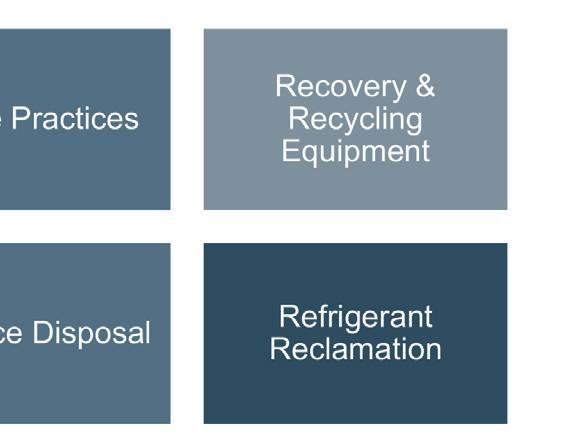
The Bahrain’s HCFCs PhaseOut Management Plan (HPMP) contains several activities and initiatives to accomplish phasing-out HCFCs in the intended timelines. One of these activities is updating national regulations to better control and monitor Ozone Depleting Substances. Thinking outside the box, Bahrain decided to broaden the scope of control and create a comprehensive bylaw and a model to better achieve the Montreal Protocol requirements and accomplishing multiple goals in one big inclusive project. The goals of the regulation were to address 4 key elements, as in figure A, in addition to the existing licensing/quota system of the controlled substances.
The preparations and work on the bylaw started in 2017, inspired by comprehensiveness of the F-Gas regulation of Europe and use the model to build a national one that can operational and feasible for local conditions.
A thorough consultation process was followed, over a period of 3 years, and included several levels of governmental, public, and private sectors consultation. As a result, the Ministerial Decree No. 1/2020 with respect to Management of Refrigerants, Refrigeration and Air-
Conditioning units was issued. The Decree regulates the process of managing refrigerants, refrigeration and air-conditioning units which included registering refrigerants, refrigeration and air-conditioning units, preventing the release of refrigerants in the atmosphere, managing refrigerants containers and training and licensing technicians and license companies and operators working in the refrigeration and air-conditioning sectors. When the bylaw came into effect in 2020, NOU made sure there was proper media coverage whether in newspapers, television, social media as part of spreading the awareness to companies and public. Below figure B presents the scope of coverage of the local regulation.
The first aspect was implemented utilizing the E-licensing system and in cooperation with the customs officers such that no RAC equipment is imported without obtaining the necessary environmental approval where technical specifications are sent to the NOU for approval. The importers must also provide manufacturer company name and country of importation.
On the other hand, the customs officers were continuously trained on the updated regulations for the vital role they play in enhancing the control on controlled substances
and equipment. In addition, refrigerant importers are obligated to submit quarterly reports detailing the previous year quantities, current year consumption and remaining quantities in store including number of disposable cylinders remaining. On top of that, multiple inspection campaigns were conducted on the services companies to ensure that they are licensed to buy refrigerants from local market as well as obtain the minimum tools and equipment required for maintaining RAC units which enhanced our control over the refrigerants’ movement. A total of 1282 companies were visited in a span of nearly 4-5 months where those who were found lacking were issued a warning violation with deadline to register and obtain the necessary licenses.
The second aspect was implemented by creating a registration form for RAC units for the purpose of creating a database of all large units installed and maintained in Bahrain. From there, all locations have been included in this year’s inspection campaign to ensure full compliance with the bylaws requirements such as fitting leak detection systems to prevent refrigerant leakage.
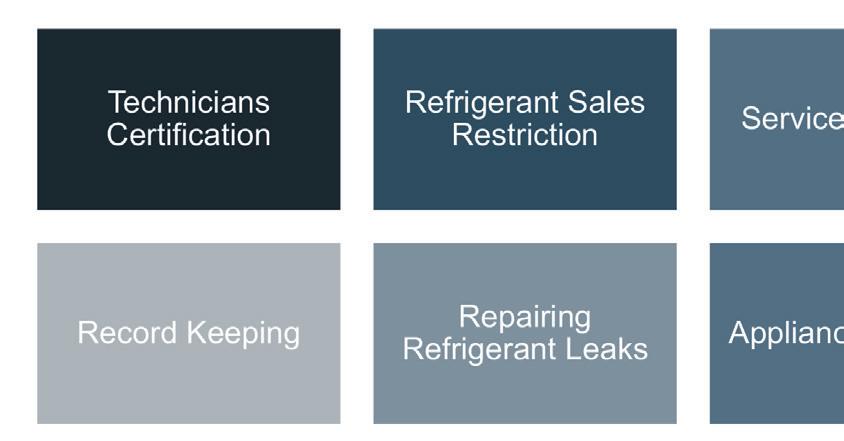

The third aspect on refillable cylinders was achieved by adopting new specifications for such cylinders and specifying deadlines to stop importing refrigerants in disposable cylinders.
The reason for this ban was because there was no proper facility to dispose of such waste. While conducting a study back in 2016-2017, it was found that Bahrain has nearly 200 tons/year of wasted refrigerants due to non-refillable containers and big portion of that quantity is from Bahrain’s HCFC Quota that needs to be preserved now more than
ever, especially with the reduced consumption obligation. Therefore, the ban timeline was decided to be gradual, to first include banning the non-refillable cylinders for HCFCs in 2021 while the other refrigerant cylinders in 2022.
When the bylaw was being prepared and finalized between 2017-2020, all of the refrigerant importers were invited to the annual Environmental Forum for the protection of Ozone Layer in Bahrain, held in celebration of the National Ozone Day as part of the awareness campaigns for all stakeholders to inform them of this ban timeline, explain the reason behind this ban and the bigger picture, so that they can take measures from that time to study the market, look for suppliers and revise the sales plan. Simultaneously, the National Ozone Unit (NOU), in cooperation UN Environment Programme (UNEP) and the UN Industrial Development Organization (UNIDO), established a National Refrigerant Reclamation Facility operated by Aztec Services through a bidding process.
The purpose of this center is to create a refrigerant network, collect the used refrigerants in market to reclaim them for reusing, thus preserving the refrigerants stock in Bahrain, create new job opportunities for specialists as well as assist in improving the practices adopted during maintenance.
The center has also expanded its line of business and got accredited as a refrigerant refilling center in the year 2020, which will help the market greatly once the nonrefillable cylinders are banned.
When the bylaw was implemented in 2020, all of the HCFC importers were gathered in September of the same year to firmly present a wellstudied plan to import their quota in 2021, when the HCFC disposable cylinders was going to be banned, and indicate how will they import their quota; in refillable cylinders or tonners, will it be filled or empty, will they refill it locally or send it back to the supplier as well as an approximate timeframe of when will they be importing their quota in the year.
As of today, Bahrain has about
4 refrigerant refilling centers and NOU is working on establishing a laboratory specialized for refrigerant analysis, as well as continuing training and licensing technicians working in the RAC sector.
The inspection campaigns will ensure that refrigerant trade is controlled and managed by licensed companies only while the reclamation and using refillable cylinders will ensure adoption of RRR practices, as well mitigate the global rise in refrigerant prices, production shortage and complying with phase-out timelines.

As for the fourth aspect, the first thing that needed to be accomplished was a training curriculum; therefore, NOU in cooperation with UNEP, the Italian Association of Technicians (ATF) and Centro Studio Galileo as well as other international experts, developed a local certification scheme for technicians benefiting from the European F-Gas Certificate but modified it to suits local market and operating conditions in Bahrain without compromising minimum required competencies and skills.
A program to build a pool of local certified trainers was the beginning along with identifying local training center under the Ministry of Education and equip it with the necessary support aids, tools and stations to deliver the training program. Once that completed successfully, the registration was opened for a small batch of technicians from selected service companies.
This was an important step to test the quality of the training and certification with the built-in capacities. Sample of the mandatory license for field
technical and engineers is shown in figure D.
In addition to that, NOU cooperated with Tamkeen, which is a semiautonomous government agency, to support Bahraini technicians, engineers and specialists working in the RAC field by sponsoring their training and certification as a step to encourage all governmental authorities and private sector to train and license their Bahraini technicians.
The training program also extended to include graduates and undergraduates studying in this field, so they are properly qualified and skilled.
The comprehensive licensing scheme for the RAC sector is the backbone of this regulation where, through rigorous implementation, it ensures compliance of all stakeholders, hence secure smooth compliance, and control of RAC servicing sector. Figure C shows the key licensing elements of the regulation.


If you want to guarantee a success to the implementation of the Kigali Implementation Plans (KIPs), you shall start from building a strong multifaceted partnership on the national and international levels.
Liana Ghahramanyan
National Ozone Focal Point
Legal Advisor to the Ministry of Environment, Republic of Armenia

This postulate has been proved by many years of my experience of working with the Montreal Protocol on Substances that Deplete the Ozone Layer.
It is extremely important to share the same vision and mission with all the partners, and one of the key messages that has to be delivered is that we need each other to accomplish the task – the recovery of the ozone layer through the implementation of the Montreal Protocol and its Kigali Amendment. This is how the Republic of Armenia started its journey towards the development of the KIP having ratified the Kigali Amendment in 2019.
been given from identifying the right stakeholders, and to this end the invitations to various government bodies and other institutions were sent out inviting them to attend the launching event which took place on 22 February 2022.
Representatives of the Ministry of Environment, Ministry of Foreign Affairs, Ministry of Territorial Administration and Infrastructure, Ministry of Economy, State Revenue Committee, Police, Yerevan Municipality, and Refrigeration Association of Armenia attended the meeting where an agreement was reached to ensure cooperation with the representatives of the departments in order to properly fulfill the commitments undertaken by the country.
have access to additional resources by clicking or scanning here
UNEP OzonAction is the leading implementing agency supporting Armenia on its way to developing the HFC phase-down plan through providing its expertise, hiring the team of international and national experts, and ensuring a seamless transition to this new climate and ozone-friendly world with minimal disruptions.

The start on the local level has
It was decided to apply various data collection techniques including official and non-official correspondence, extended and non-extended working meetingdiscussions between the partners upon need.

The National Ozone Unit of the Ministry of Environment, with the support of the Deputy Prime Minister’s Office, launched a series of activities on March 17, 2022, in Hrazdan, Kotayk province, aimed at
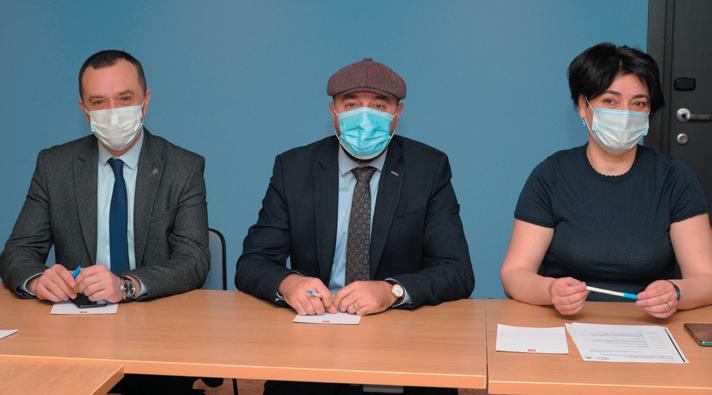
data collection on HFCs and HFCbased equipment. The process was launched to meet the commitments undertaken by Armenia, particularly the establishment of the baseline of hydrofluorocarbons consumption based on the assessment of Armenia’s economic needs in this area. The events were held in 10 regions of Armenia and in Yerevan throughout the next 3 months, with the participation of representatives of relevant subdivisions of municipalities, responsible environmental representatives, representatives of communities, NOU experts, and RAC specialists. The expert group, accompanied by HVAC&R specialists-members of RAC Association, visited coldstorage facilities, and companies with refrigeration installations and air conditioning systems.
International support
2019 marked the inauguration of Regional Center for Continuing Education and Certification officially opened at Anania Shirakatsi Lyceum in Yerevan for training and certification of engineering and technical staff in refrigeration and air conditioning.





The establishment of the center, supported by UNIDO, marked a new era in upbringing the qualification of RAC technicians and engineers to a new level.
The center has been equipped with unique training simulators and accredited under the Real Alternatives for Life initiative having trained 46 specialists as of 2022. Mandatory certification of RAC specialists has been planned under the Kigali Implementation Plan, as a legal measure undertaken for
professional advantage.
Phasing down HFCs under the KIPs will lead to increased adoption of alternative refrigerants many of which hold toxic and flammable properties or operate at high pressures. Specialist may not be familiar with these hence the installation, servicing, repair and dismantling of RAC equipment operating with such refrigerants require training and certification.
The National Ozone Unit marked the UN International Youth Day on 12 August by organizing the round table discussion “Montreal Protocol in the Context of the UN Sustainable Development Agenda 2030” at the UN House in Armenia for students of the faculty “Refrigeration Economy” of three regional colleges. Young people as well-educated future professionals in the refrigeration and air-conditioning sector becoming a part of the
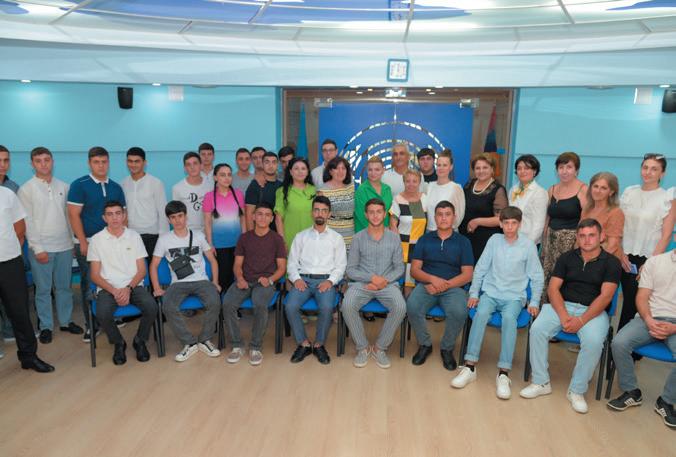

professional community will be contributing to meeting the commitments undertaken by the Republic of Armenia to phase-down HFCs under the Kigali Amendment. Developing countries are currently facing the issue of developing KIPs to get the amounts of HFCs reduced in the upcoming future and young people’s participation in these processes can become a guarantee for avoiding the need of having “KIPs” in future.
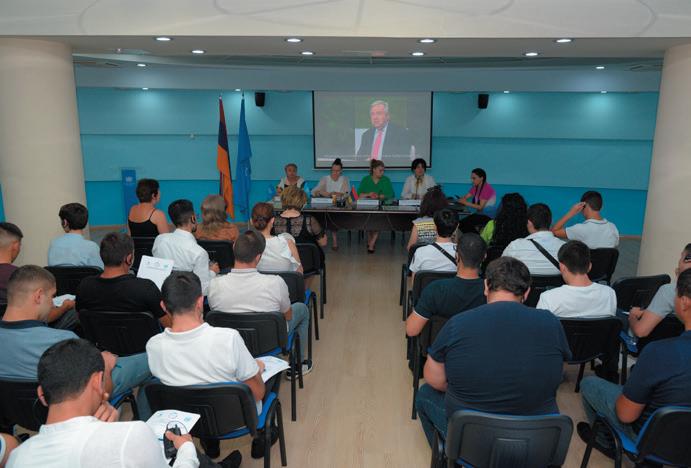
Suely Machado

Carvalho a
a Senior Adviser
Kigali Project, Instituto Clima e Sociedade (ICS)
b Coordinator
Kigali Project, Instituto Clima e Sociedade (ICS)
c Executive Director

International Energy Initiative, Brazil (IEI)


This paper explains how Brazil in the air conditioning (AC) sector has responded to the 2016 Kigali Amendment to the Montreal Protocol on Substances that Deplete the Ozone Layer (Montreal Protocol) in a project funded by The Kigali Cooling Efficiency Programme (K-CEP) implemented by the Instituto Clima e Sociedade (ICS). When the project began in 2017, most ACs sold in Brazil were low energy efficiency fixed-speed based on ozonedepleting greenhouse gas (GHG) R-22 with increasing numbers of ACs using ozone-safe high-global warming potential (GWP) R-410A coming into the market. The Project focused on strengthening Minimum Energy Performance Standards (MEPS) and consumer product Labelling; developing and implementing new testing methodology; and increasing accessibility to low GWP refrigerants to enable Brazil to speed ratification of the Kigali Amendment of the Montreal Protocol. The paper explains in detail how the project organized technical support in partnership with Lawrence Berkeley National Laboratory (LBNL)4 and the Collaborative Labelling and Appliance Standards Program, (CLASP)5 to urgently update MEPS and labelling in Brazil.
incorporating energy efficiency and refrigerant fluid criteria. The work in partnership with so many partners from industry associations, academia, NGOs and Government earned ICS the “K-CEP Strongest Collaborators Award” in 2021.
As related to the residential air conditioning market in Brazil, the majority of Brazilian RAC in the local market in 2017, were low-efficiency fixed-speed using hydrochlorofluorocarbon (HCFC22) as the refrigerant. In addition, when questioned why more efficient equipment was not in the market, especially with both HCFC-22 phaseout schedule and the Kigali Amendment to phasedown hydrofluorocarbons (HFCs), manufacturers of AC in Brazil named several barriers, such as: a) the metrics used by the government institution testing ACs needed revision, as more efficient inverters were tested as if they had inefficient fixed speed compressors. Introduction of new metrics with seasonal parameters, which were more appropriate for a country with the size of Brazil, was called for;
have access to additional resources by clicking or scanning here
The strong technical and media support allowed the execution of consumer awareness campaigns and the submission of evidencebased contributions to public hearings by civil society and the participation of a diversified number of NGOs. MEPs were reviewed in 2018 and again on 29 April 2022. Mandatory and voluntary labelling were also revised and in 2021 a voluntary Gold-label was introduced,
b) revision of the regulatory framework (MEPS), which had not been updated since 2011 and the needed revision of the Labelling programme, last updated in 2013; c) criterium for establishing MEPS was not robust and a new assessment was needed; d) economic considerations needed to be looked at to enable market penetration of more efficient ACs; e) lack of consideration of the refrigerant fluid, in terms of its potential for CO2 equivalent emissions, in the labelling
programme;
f) consumer awareness programs required attention especially in times of high energy tariffs and hydric crises, with environmentally unfriendly and expensive energy from thermoelectric plants having to cover for the energy demand from the hydroelectric ones.
g) low or absence of civil society participation on public hearings and public consultations on policy changes in energy efficiency performance indicators, and in the Kigali Amendment ratification process.
Without addressing those barriers, the AC market would continue to be flooded with a mix of efficient and inefficient units, all labelled as “top of the class A”, with loss of environmental and economic benefits for not properly labelling the products, and not properly informing consumers.
In addition, the lack of ratification of Kigali Amendment by the government of Brazil, old MEPs, and other barriers, caused concern of potential “dumping” of inefficient air conditioners in Brazil. This was detailed in a publication6 in partnership with the Institute for Governance & Sustainable Development (IGSD)7, which formed the basis for the design of an action plan to address those barriers and the work described in this paper.
In order to tackle those barriers in preparation for the implementation of the Kigali Amendment8 to the Montreal Protocol9 while maintaining and/or enhancing the energy efficiency, the K-CEP10 funded a project in the residential air conditioning sector in Brazil named Kigali Project, which was implemented by ICS11 This happened one year after the Kigali Amendment was approved in 2016 in Kigali (Rwanda).
The Kigali Project focused on supporting regulatory as well as introduce consumer-directed actions. It included enhancing
Energy Efficiency (EE) level of existing Standards and Labelling programmes; equipment energy performance testing methodology changes to consider variablespeed compressors (inverters) and seasonal variances; market driven actions to increase accessibility to low and medium GWP refrigerant fluids; and actions to enable Brazil to speed up the ratification of the Kigali Amendment of the Montreal Protocol.
The creation of a network of a diversified number of nongovernmental institutions to support actions, named Kigali Network (in Portuguese, Rede Kigali), and project financial support from K-CEP were key for the success of several actions by the network, which was coordinated by ICS.
Brazil’s Energy Efficiency Law, number 10295 (17 October 2001), provides for the National Policy for the Conservation and Rational Use of Energy, attributing the execution to the federal government (Minister of Energy) and giving it the power to establish maximum levels of energy consumption or minimum energy performance levels of machines and appliances manufactured or sold in Brazil. Decree number 4059 (19 December 2001), regulated by Law 10295, created the Energy Efficiency Indicators Management Committee-CGIEE.
The committee guarantees that: a) minimum level of energy efficiency is established according to specific regulations, b) the process is based on impact assessment and prioritization, conformity assessment criteria and supported by accredited laboratories for tests and trials, and c) mandatory public hearings are held. Brazilian government implements another key policy for appliances’ energy efficiency – the Brazilian Labelling Program (PBE), coordinated by INMETRO12. Most part of cooling appliances must hold an energy efficiency
mandatory label that aims to provide key information for consumers’ best decision, such as: energy consumption and energy efficiency rating (varying mostly from E, the worst efficient, to A, the most efficient).
As a complementary policy, Brazil also provides an endorsement voluntary label, called Selo PROCEL13, which informs consumers which are the top of the class energy efficient appliances available in the market.
Selo PROCEL is coordinated by Eletrobras, a government owned energy company.
Revisions of the MEPS and Labelling were long due and the majority of residential AC commercially available in Brazil were in the “A” category.
The equipment falling in this performance category had low efficiency when compared to the same model in the rest of the world.
The support provided by the Kigali Project and based on a study of impact of the MEPS revision and costs14 associated to manufacturers and consumers, done in partnership with LBNL, and CLASP15 , confirmed the urgency to update MEPS and labelling in Brazil.
In addition to mandatory labels, the PROCEL Label (voluntary) is managed by the Brazilian National Electricity Conservation Program (PROCEL) and was originally launched in 1995, with specific policies for window air conditioners in 1996 and for split-type air conditioners in 2004.
The label is well-recognized and substantially influences consumer behaviour; 91% of consumer recognize the label and 68.3% say that they would pay 10% more for a product bearing the PROCEL Label.16 Until recently, the criteria for the PROCEL Label was aligned with the criteria for the top labelling class on the comparative label managed by the mandatory PBE, coordinated by INMETRO.
The Kigali Project team also provided technical assistance, when requested, to the governmental institutions in charge of Standards and Labelling programmes
and worked in partnership with them throughout the project and supporting the revision of MEPs and Labelling in Brazil. The last MEPS revision was made in April 202217

According to national regulation, the government had to establish a public hearing before taking the decision to update the MEPS. Public hearings are an important vehicle to hear from stakeholders, including civil society organizations. However, these civil society groups were generally left unheard, mostly for lack of initiative, due to gaps in information and technical knowledge regarding the Montreal Protocol and its Kigali Amendment, the links to energy efficiency and its benefits, and the opportunities for low carbon dioxide (CO2) emissions and energy conservation in the refrigeration and air conditioning sector.
Kigali Project team, coordinated by ICS, recognized an opportunity to tackle public awareness and bring the voice of civil society into the public debate. This was accomplished by supporting and strengthening a network of NGOs which were considered able to pressure for improved MEPS and labelling revision, as well as, for the ratification of the Kigali Amendment by the National Congress, as required by law.
The creation of the Kigali Network (Rede Kigali) was the way to bring key civil society organizations/institutions to understand and discuss matters related to both Energy Efficiency, Kigali Amendment ratification and related actions to enable access to energy efficient and ozone and climate friendly technologies and use media and market driven mechanisms to increase access to low carbon emission technologies in the residential AC sector. The following organizations were part of the Kigali Network: ICS (coordinator18); International Energy Initiative (IEI-Brazil)19; Instituto Brasileiro de Defesa do Consumidor (IDEC)20, a consumer protection
NGO; Engajamundo21, a youth climate leaders NGO; and Healthy Hospitals Project22, an organization that promotes sustainability in the health sector.
Mitsidi Projetos23, a consultancy company focused on technical assistance on energy efficiency, provided technical support to the network, and communication specialists, from Pulso Público,24 supported the network to successfully reach media channels, such as TV and newspapers. The strong technical and media support allowed the execution of consumer awareness campaigns to happen (such as Black Friday, to reduce selection of HCFC-22 low efficiency air conditioners), increase technical credibility of the project team with government officials and industry, facilitated reaching out to industry associations supporting energy efficiency improvements, the submission of evidence-based contributions to public hearings by civil society and bringing to congressmen the needed awareness of the need to speed up Kigali Amendment ratification process. The progress and results can be seen in figure1. Although the Kigali Network itself cannot claim being the sole responsible for the rapid and positive evolvement of Brazilian regulatory framework for residential air conditioning sector, with improvements in energy performance indicators and labelling, including the integration of the
transition to lower global warming potential refrigerants, and the Kigali Amendment ratification process, it had an important role in:
• Pressuring for more transparency and the use of technical evidence/ assessment studies in the revision processes and pushing for studies that reflect local circumstances, and strengthening capacities at national universities (Melo et al. 2022)25.

• Bringing data that allowed the comparison between Brazilian AC market and other key markets, and, thus, reinforcing the need to a more rigorous revision of energy efficiency domestic regulation;
• Pointing out the inter-relation between energy efficiency and the Kigali Amendment implementation;

• Bringing awareness of the need to speed up ratification of the Kigali Amendment to Brazilian Congress. The work in partnership brought to ICS the “K-CEP Strongest Collaborators Award” awarded by the Kigali Cooling Efficiency Programme in 2021 26
The Kigali Network continues its work focusing on achieving Kigali ratification in 2022 and working to support the continuous enhancement of energy efficiency standards and labels programmes (mandatory and voluntary) in order to bring to consumers the appliances in Refrigeration and Air-Conditioning sectors that can save energy and are climate friendly, and at a price they can afford.
a Senior Research Fellow

London South Bank University (LSBU)
President - IIR Working Group on Careers in Refrigeration (CaRe)
b Deputy Director General International Institute of Refrigeration (IIF-IIR)

Secretary - IIR Working Group on Careers in Refrigeration (CaRe)
c Programme Management Officer OzonAction, United Nations Environment Programme (UNEP)

have access to additional resources by clicking or scanning here
Refrigeration, Air-Conditioning, and Heat-pumps (RACHP) are crucial for our health, nutrition, comfort, and well-being. It is one of the sectors that crosscuts many of the UN sustainable development goals and can contribute significantly to safeguard the environment, advance welfare of humanity and support the growth of employment and economics worldwide. Over 15 million people are employed worldwide in the refrigeration industry, which means that almost 5 workers out of 1000 have a job linked to the design, manufacturing, installation, maintenance and servicing of all type of refrigeration equipment. Women engagement in this sector is either under-represented or un-recognized around the globe despite of the high potential that can be unleashed by encouraging women to pursue education and job opportunities in RACHP.
The RACHP sector is fast expanding: there is a need for more and more equipment and applications, and thus more people adequately qualified all over the world. Because of environmental constraints, innovations are necessary. There is a remarkable opportunity to develop interesting and numerous jobs for woman in the context.
The International Institute of Refrigeration (IIR) and the OzonAction of UN Environment Programme (UNEP) in cooperation with several partners, undertook a global survey to better understand the background, motivation, challenges, and opportunities faced by women working in the in refrigeration, airconditioning and heat pumps sector. In total 810 women from all continents responded to the survey, which
was available in seven languages (English, French, Spanish, Portuguese, Russian, Arabic and Chinese). Overall, 59% of the respondents were under 40 years old and half had a postgraduate degree, indicating likely limitations in reaching women working in the field as technicians.

The current job roles are illustrated in Figure 1 and survey results indicate a high retention rate in the industry with 47% of women working in the RACHP sector for more than 10 years.
The top five challenges identified were (1) difficulties in managing a healthy work-life balance, (2) lack of career advancement opportunities, (3) stereotypes or prejudice about women from clients or customers, (4) no other female colleagues in their organisation and (5) limited training opportunities to further develop their skills. Challenge (1) can be potentially overcome if companies adapt their HR policies, for instance by allowing flexible working hours and remote working where possible as well as fair pregnancy and maternity leave policies.
The limited training and career development opportunities in the sector is a wider issue that will require national organisations and industry to work together on a solution. Women are mostly motivated by the environmental impact of a career in RACHP, the feeling of carrying out work that is useful to society, the fact that is an interesting subject area, the diversity of roles available and the job security associated with the sector. Figure 2 shows the most proud career achievements of women working in the sector. Role models are paramount to highlight the career opportunities in RACHP and inspire the next generation of engineers. Sharing
similarities (such as ethnic background, disability, sexual orientation, educational background or hometown/country) can help role models and younger people more easily relate and connect with each other. Nearly half of the women that responded to the survey had no role model, and the ones that had belonged to one of the following categories: someone working on the RACHP sector, teacher or family member.
Mentoring schemes are also key to promote both personal and professional development for both the mentee and the mentor as well as increasing productivity, inclusivity and retention rate for organisations. The survey indicated that 52% of women had a mentor in their current job.
Overall, the survey results show that there is clear scope to increase the visibility of women working in the sector by promoting role models and mentorship programs that benefit both individuals and organisations. Increasing awareness of women in RACHP will also help break stereotypes and prejudice against women and empower women and girls to pursue a career in this sector.


Worldwide there are over 300 national, regional, and international associations, organisations, and institutions in the RACHP sector. A small minority of these organisations have women steering groups, which engage and empower women
through networking, mentoring, nomination for awards and industry judging panels. These steering groups normally have a strong social media presence, thus shining a spotlight on role models and carry outreach to schools, promoting careers in STEM to young people. Available data suggests that when national organisations have dedicated women steering groups, their female membership increases considerably and women became actively involved in committees, thus increasing women equality in decision-making.
UN Environment Programme (UNEP) OzonAction, in cooperation with many international RACHP partners, has been highlighting the issue of importance of gender mainstreaming as well as promoting women’s active and equal engagement in the Montreal protocol work for many years. Many activities in this area focus on the RACHP sector because this sector is an inseparable part of the Montreal Protocol HFCF phase-out and future HFC phase down projects.
The first attempt to highlight success stories of women in RACHP sector was a publication “Women in the Refrigeration and Air-conditioning Industry - Personal Experiences and Achievements”.
This booklet compiles 107 stories from 50 countries and provides important information and experiences that bring insight into
the lives of women working in the refrigeration and air-conditioning sector around the world.

In the summer of 2020, the UNEP OzonAction team in Panama developed a series of interactive webinars on the Montreal Protocol on Substances that Deplete the Ozone Layer and gender mainstreaming. National Ozone Units in Latin America, Europe and Central Asia, West Asia and Anglophone Africa heard personal stories from women RACHP professionals in their regions and discussed relevant issues such as importance of awareness-raising for female technicians and capacitybuilding activities.
As part of World Refrigeration Day campaign in 2021, OzonAction and the partners organised the webinar “Inspiring Women to Pursue Careers in Refrigeration and Air-Conditioning & Heat-pumps (RACHP)”. This
session shed light on how women can be further inspired and supported to have larger stake in the RACHP industry and the related professions. The session addressed the topic from three aspects: the educational aspect, the field operation aspect, and the technical societies aspect More recently, in July 2022, UN Environment Programme (UNEP) OzonAction organized a side event on “Women in Cooling – Challenges and Opportunities” during the forty-fourth meeting of the Openended Working Group of the Parties to the Montreal Protocol. The meeting was attended by 93 participants (55 females / 38 males) and included presentations on context and challenges, as well as on opportunities to increase involvement of women in this field. The presentations were followed by panel discussions of National Ozone Officers from different regions (Asia, the Caribbean and Africa).

The panel discussion highlighted the same main challenges identified by the global survey: ‘She studied refrigeration and AC and works at RAC company but only does admin
work. Women are given easy jobs while men are doing the technician work’, ‘there is only one female in the team’, ‘in some countries, according to local culture, it is not a ladies job’, ‘many female technicians had to quit work after having children’.
At the same time, it is perceived that social media platforms can help spread the word for the next generation, who are so open to a different life (compared to their parents). After COVID, many females are seeing RACHP as a viable job opportunity.

The International Network of Women in Cooling (INWIC) is a networking, educational and mentoring platform to promote the role of women in the refrigeration, air-conditioning and heat pump industry. This recently launched initiative will connect women currently working in the sector, empowering them to progress in their career and to become visible role models,
changing outdated perceptions and influencing the next generation of women engineers.
World Refrigeration Day (WRD) and the UNEP OzonAction lead the INWIC initiative in cooperation with founding partners’ i.e. national RACHP associations from all world regions.

By bringing together women from all continents, INWIC enables the sharing of experiences, successful local policies and career opportunities, which would not be available otherwise. It provides an opportunity to learn from each other, understand how to bring positive change in each cultural context and promote the environmental aspect of the RACHP profession.
Figure 5 summarises the INWIC proposed eight work streams for the next two years.
The first stage of INWIC initiatives includes connecting existing women’s groups/sections of national, and international RACHP associations/ organisations/institutions to create a network that shares information and experiences. INWIC will pull together data from founding partners to raise awareness and motivation and to promote role models and outreach activities underway.

A mentorship program will be developed for women already working in RACHP and for young women pursuing RACHP education.
On a later stage, INWIC will establish an internship programme with focus on opportunities in developing countries and will carry out international, regional and national events. It is envisaged that the network will accelerate gender equality in RACHP, allowing women to be agents of change for a more sustainable and resilient future.




This paper describes how the Ghana Energy Commission and the Environmental Protection Agency’s National Ozone Unit have joined forces in a comprehensive strategy to access and implement low-global warming potential (GWP) and energy-efficient cooling technologies that protect the Earth’s climate and stratospheric ozone layer. This strategy, in line with the objectives of the Montreal Protocol on Substances that Deplete the Ozone Layer (Montreal Protocol): 1) integrates upgraded energy efficiency labels with refrigerant metrics; 2) strengthens minimum energy performance standards (MEPS); 3) prohibits the dumping of used cooling appliances; 4) uses the OzonAction informal Prior Informed Consent (iPIC) mechanism to facilitate communications among national authorities on the import and sale of appliances containing or using obsolete refrigerants scheduled for phase out or phase down under the Montreal Protocol; and 6) asks Parties to the Montreal Protocol to enact and enforce regulations that help stop the dumping of used and new cooling equipment in exportmarket countries wanting to leapfrog obsolete appliances that waste energy and force climate change.


5 (A5) (mostly developing-country) Parties.
The lower MLF cost and higher benefits would be the result of consumer electricity savings spent locally on quality of life, less air pollution, and health care costs from cleaner power.
Ultimately, this would result in increased local jobs and profits from recycling the materials of retired cooling equipment.
It would also result in destroying the ozone-depleting and greenhouse gas refrigerants in local cement kilns while earning carbon credits.
The strategy developed in Ghana can be promptly implemented in any of the Montreal Protocol A5 Parties that are not manufacturing cooling equipment and in some of the A5 Parties manufacturing or assembling cooling equipment.
Leapfrogging
high-GWP hydrofluorocarbon refrigerants and accelerating the hydrofluorocarbon (HFC) phase down can be accomplished at lower Montreal Protocol Multilateral Fund (MLF) investment cost and higher benefits to citizens in Ghana and other Article
Experts worldwide agree that: 1) any added cost of super-efficient cooling appliances marketed at fair and equitable prices is rapidly paid back in savings in electricity use; 2) cooling equipment energy efficiency has social benefits including fewer blackouts, cleaner air, better health and longer lives, and protection against climate change; 3) money saved on electricity and health care is spent locally where it circulates in the local economy increasing prosperity and quality of life; and 4) phase down of obsolete HFC greenhouse gas refrigerants as required under the Kigali Amendment to the Montreal Protocol avoids additional climate forcing and reduces the likelihood that we pass tipping points and lose control of the climate system in the near term.

Despite the obvious benefits of next-generation cooling appliances, market penetration of high-efficiency cooling appliances using climatefriendly refrigerants has been low, particularly in developing countries in regions such as Africa.
The inability of individual customers and their governments to act in self and national interest, respectively, is called a “market failure” and is usually caused by too much focus on first cost of appliance purchase and not enough concern for the future costs of powering the appliances. Ghana successfully demonstrated removal of the first-cost purchase barrier by introducing a rebate scheme in 2012 which transformed the refrigeration appliance market. That rebate scheme could be strengthened to take into account refrigerant climate forcing for accelerated Kigali compliance and climate benefits.
To resolve this market failure, countries should adopt energy efficiency labels (EE Labels) to help buyers choose the appliance with lowest life-cycle ownership costs. Countries should also implement minimum energy performance standards (MEPS) to prevent marketing of appliances that punish unsuspecting buyers with unaffordable energy costs. Such appliances have other attributes, such as using high-GWP refrigerants, that are contrary to the national interests of clean air, treaty obligation fulfillment, and affordable and reliable power.
Others in this journal and elsewhere explain that increasing electrification, urbanization, and wealth, as well as global warming and urban heat islands, are drastically increasing the demand for cooling even as citizens struggle to stop greenhouse gas emissions before the Earth’s climate experiences tipping points beyond which there may be no recovery within human time dimensions. Drastic 2022 fossil fuel price increases from supply chain disruption make
energy efficiency more economic. Energy Efficiency also helps protect against unbalanced trade accounts and domestic inflation.
For example, the Government of Ghana projects that temperatures are likely to increase nationwide in Ghana by at least 3°C by 2080. In response to forecasts and climate warnings, the Ghana Energy Commission is striving for higher cooling appliance energy efficiency. At the same time, the Ghana Environmental Protection Agency’s National Ozone Unit is working to phase out the ozone-depleting hydrochlorofluorocarbon (HCFC) refrigerants and preparing to leapfrog and phase down obsolete, climate-forcing HFC refrigerants. Furthermore, the Ghana Energy Commission and Environmental Protection Agency are coordinating to integrate refrigerant transition with energy efficiency, including plans to ask the United Nations Development Programme (UNDP), which is an implementing agency for the Montreal Protocol Multilateral Fund (MLF), to request funding from the MLF to demonstrate accelerated phaseout and phasedown, yielding savings for both individuals and society.
Subsidies on super-efficient cooling appliances with lowerGWP refrigerants while prohibiting inefficient appliances with obsolete refrigerants including R-22 and R-410A plus economic and technical assistance to promote local assembly that will make efficient
products available and affordable. Ghana is proposing to strengthen its EE Label with disclosure of refrigerant and global warming potential (GWP) along with a warning that high-GWP HFC refrigerants will be become scarce and expensive as the Montreal Protocol phases them down.


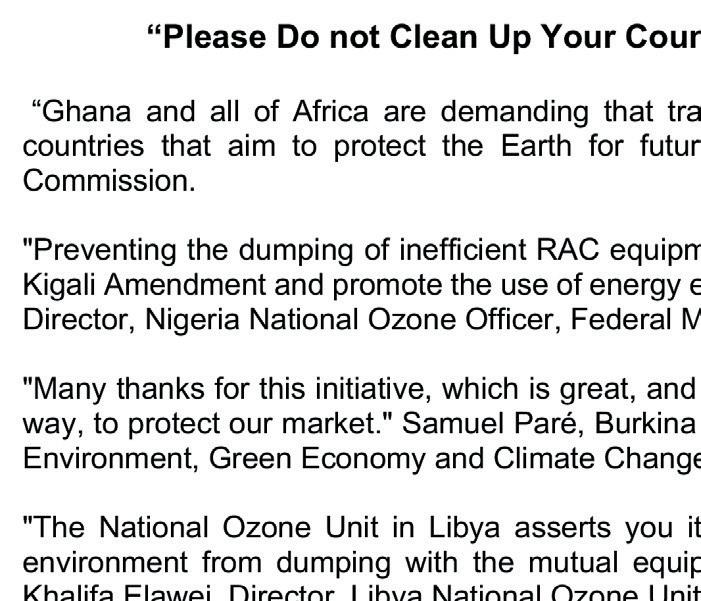
Environmental dumping is defined as “the practice of exporting products to another country or territory that: 1) contain hazardous substances, 2) have environmental performance lower than is in the interest of consumers or that is contrary to the interests of the local and global commons, or 3) can undermine the ability of the importing country to fulfil international environmental treaty commitments.”
Essentially, from the perspective of recipient countries, environmental dumping involves “obsolete” products. “Obsolete” in this context is defined as appliances with no value in use, even if still in working order, taking into consideration self and public interest.
Appliance obsolescence occurs when a next-generation product can be purchased and operated for lower annual costs and/or when the operation of the old product exposes owners and the global community to unacceptable environmental and safety risks.
Ghana long ago determined that dumping of used cooling appliances from foreign sources, when considering the already significant resources needed for domestic inspection and enforcement, overwhelms local authority capacities. It also punishes buyers with unaffordable electricity costs and worn-out equipment without replacement parts. Worse still, it is expensive and a diversion of needed financial resources for communities to properly dispose of the obsolete equipment containing toxic materials now prohibited from manufacture. The perverse truth is that developed countries do not intervene to prevent the dumping of used appliances in African and other developing countries because such interventions require that the developing countries internalize the cost of proper disposal and manufacturing-country/ company profits from sales. The availability of used appliances at low prices exacerbates the temptation of buyers to consider only first cost and ignore high operating costs. The winners are wealthy citizens in developed countries who avoid the cost of proper disposal and the unprincipled merchants who export obsolete appliances for sale to unsuspecting buyers in developing countries. The losers are the buyers in developing countries tricked into low first-cost obsolete appliance purchases and everyone else that may be grievously harmed by toxic pollutants in air, water, and soil. Such buyers, and the communities they live in are also put at increased risk from the added climate burdens
vulnerable, during appliance use and after the appliance is discarded. In 2021, Ghana on behalf of all of Africa submitted a Conference Room Paper (CRP) to the Parties to the Montreal Protocol, asking the Parties to support specific actions to stop the harmful dumping of new and used, inefficient refrigeration and air conditioning appliances using obsolete ODS and HFC refrigerants. Recommended actions in the CRP include:
• Participating in the OzonAction iPIC mechanism. OzonAction, as part of the UNEP’s Law Division, administers the iPIC platform. Using this platform, countries can communicate securely and confidentially, and ascertain the nature of shipments with their trading partners before any consignments of ODS and HFC or related mixtures, or appliances and components that contain or use such substances, are shipped into their territories in order to avoid illicit or unwanted shipments.
• Supporting a Montreal Protocol Technology and Economic Assessment Panel (TEAP) investigation into why it is profitable to dump appliances that have unaffordable life-cycle ownership costs in A5 Parties.
• Requesting that Parties support OzonAction engagement in and strengthening of its involvement in UNEP’s Green Customs Initiative to discourage dumping of ODS and HFC equipment.
• The Green Customs Initiative develops tools and training for customs officers and border control

covered by trade-related Multilateral Environmental Agreements such as the Montreal Protocol. Re-engagement and strengthening of this partnership can provide useful tools for Parties grappling with the surges in dumped cooling appliances.
In addition to stopping appliance dumping, Ghana will gain access to next-generation technology at affordable prices through a three-part strategy: 1) supporting bulk procurement and buyers clubs to aggregate demand for new applications coupled with campaigns to replace older cooling equipment that was inefficient when purchased and then poorly installed and serviced for sustainable energy efficiency; 2) training cooling equipment technicians for efficient equipment installation, servicing, and retrofitting with incentives for new installations and replacements outside of the cooling seasons in support of year-round employment; 3) and partnering with the Bank of Africa and other regional institutions for financing paid back in the cooling season based on savings guaranteed by the equipment manufacturers. The ultimate goals of this strategy include ensuring that cooling appliances are designed for African climates, that these appliances are manufactured by African workers, and that these appliances are solid in African markets resulting in profits to African owners and partners.
have access to additional resources by clicking or scanning here


Vikram Murthy Presidential Member Indian Society of Heating, Refrigerating & Air-Conditioning Engineers (ISHRAE)

Past President Mumbai Chapter, American Society of Heating, Refrigerating & Air-Conditioning Engineers (ASHRAE)
Director - Univac Environment Systems Pvt Ltd
As we continue to rapidly expand the footprint of the built environment in Urban and semi urban landscapes, the energy to drive mechanical systems increases exponentially, India avowed at the UN Climate Change Conference - COP 26, at Glasgow to become Carbon Neutral in less than 50 years and raise renewable energy from 130 GW to 500 GW in 10 years. The Built Environment MUST drastically reduce consumption of Building Energy per unit area by adopting multiple strategies to get these goals achieved. Decarbonising Buildings must address several contributions including, but not restricted to lighting, vertical transportation, pumping, water and space heating, security systems and plug loads. This article is restricted to strategies to reduce Carbon emissions caused by Cooling Buildings and the Cold Chain. The Indian Ministry of Environment’s India Cooling Action Plan, ICAP, released in March 2019 carefully charts the many paths to achieve set National goals as projected Cooling Energy demand is set to grow 6 fold. Decarbonising the built environment is achieved primarily by eliminating the direct and onsite use of fossil
fuel (for example fossil fuel used to heat water in boilers) , by reduction in the multiple facets of the use of building energy – that is usually generated by fossil fuel – as well as reducing Global Warming caused by the release of high GWP Refrigerants. Thermal stress affects a majority of India’s population. Even if conventional methods of providing cooling are applied the challenge lies in intermittent availability and rising cost of electricity, and the growing cost in meeting energy and environment regulations. With an emerging economy and about 18% of the Global population, India has the double challenge of providing comfort to over 800 million of its thermally stressed citizens, while managing rapidly growing energy demand and the pledge to de carbonise and thus reduce Global Warming. Simultaneously the pandemic and worsening urban air quality has made life unsafe inside built environments that are not engineered to protect their occupants. This brings up a third challenge – and that is to create safe and healthy environments that have a low energy demand.
ICAP projects the growth in Annual Energy Demand due to Space Cooling (and the reductions that can be achieved by interventions)

Apart from high efficiency conventional air conditioning systems, a number of other available and emerging strategies and technologies shall need application across a wide spectrum of Cooling needs to accelerate the process of Decarbonising of the Built Environment.
Cooling by convection – use of Ceiling and Table Fans
Over 60% of Indians stay cool with a Fan in Summer. They offer good comfort inside shaded spaces and their use must be encouraged instead of Air conditionng when temperatures are below 33 Degrees and humidity is below 70% . By a national mandated regulation to switch to Brushless DC Motors the energy consumption of air circulating Fans can be reduced by 65%.
Large parts of India’s hinterland have a composite climate of hot and dry summers and cool winters. Evaporative cooling offers a low energy cooling solution and simultaneous ventilation for most home and commercial applications in the hot dry summers. Well engineered evaporative coolers have controls that control temperature and humidity within a permissible range of comfort. Two stage evaporative coolers can further reduce temperatures below the prevailing wet bulb for further comfort and smaller air flows.
Cooling by Radiation is the most efficient way an occupant can feel comfortable by rapidly losing body heat to large cooled surfaces of a room like the walls, floor and ceiling – that are cooled with chilled water circulated in pipes. The rate of cooling by radiation is proportional to the product of the cool surface area and 4th power of its temperature difference with the mean radiant temperature or in the case of an occupant – body surface temperature.

Transferring daily daytime summer heat to the river, the large base of the Taj Mahal gradually gets cooled by the same river through the long cold winter nights – keeping the Monument cool, throughout the Summer. Similarly modern building structures can be cooled by embedded water pipes transferring daytime extracted heat to the cool night sky by radiation and by high emissivity building envelope surfaces.
Cooling by Adsorption Chillers
Warm Water In 36 Deg C; Cool Water Out 7 Deg C. Solar Thermal systems or available industrial waste heat can create Warm Water at 36 Deg C.
An adsorption Chiller has an evaporator, two Adsorption
Chambers, and a Condenser. Warm vapour condenses to a liquid without using any moving parts. The silica gel desiccant lowers the humidity inside the evaporator, which allows the water refrigerant to evaporate at a low temperature.
TES is a technology that stocks thermal energy by heating or cooling a storage medium so that the stored energy can be used at a later time for heating and cooling applications. TES systems are particularly used particularly in buildings, in the cold chain and in industrial processes. Sensible heat storage technologies, include water tank, underground, and packed-bed storage methods. Phase Change Materials for Thermal storage are based Categories of Melting point – and these Materials are chosen based on application Using Eutectic salt globules inside an insulated tank, water can be cooled to very low temperatures at nights when cooling load are very low or absent - and the stored energy in thermally insulated tanks with eutectic – can be used during daytime high energy peak load periods.
Combined with high efficency Chillers, such thermal storage systems can be well combined with district Cooling applications too –where the diversity of cooling load (due to the patterns of building use ) allows the shaving of the calculated total peak Cooling Load.
District Cooling Energy Systems save over 50% of conventional Building Cooling Energy Loads.

Figure 1

A detailed presentation of their engineered system components is not covered in this article. Cooling Energy as a Utility Service (like Electricity and Water Supply) can reduce commercial and residential cooling loads significantly as well as monitor and regulate over cooling of buildings.
Passive Building Technologies
Building to take advantage of the local Climate Local Climates can determine many passive building design strategies that use high thermal mass, natural and installed insulation construction materials, windows on shaded facades, the use of awnings, surrounding trees, cool roofs, high emissivity reflecting surfaces, natural wind ventilation and evaporating water bodies and fountains surrounding the building.
Increasing adoption of inverter ACs Inverter-type ACs reduce energy consumption by about 30% and are not as expensive to install compared to central air conditioning units, for which their adoption is increasing. They are incorporated with a variable speed compressor that switches off upon attaining the desired temperature and switches on when the temperature changes. In comparison to window air conditioners, they are cheaper to run by 30%-50% and occupy less space. The fastest growing equipment segment is inverter based air conditioners, which are growing at 40% per annum. This segment currently comprises 12% of the total market. Almost all the industry
players have introduced models in this segment. The Global Cooling Prize awarded recently will bring Air conditioners to market with just 700 W energy consumed by a 1.5 TR room air conditioner with 20% of the GWP of existing models.
Smart thermostats have witnessed increased popularity in both residential and commercial markets. These thermostats allow the monitoring of temperatures at home and in commercial spaces from mobile devices and PCs. The thermostats monitor humidity and temperature and alter cooling cycles, resulting in energy- and money-saving opportunities. These thermostats are further advancing in terms of technology and IOT will enable district supervised monitoring of energy consumption.

HVAC controls and building systems have become more integrated, driving demand among end-users who seek the benefits of streamlined systems such as lighting and access controls. This allows higher energy efficiency in managing building systems as it allows control from one interface. These systems facilitate the elimination of redundancy in systems and provide better occupant comfort, owing to better management. For instance, access controls integrated with HVAC controls allows the use of a single platform to monitor cooling and alter the cooling based on the number of people in the air conditioned
environment. These systems have already gained popularity in commercial offices, and they are also gaining popularity in hotels, healthcare facilities, schools, and commercial spaces.

60% of our working population are Agricultural Producers. The transformation to a beneficial Cold Chain shall have impactful Social Transformation. Refrigeration and the Cold Chain preserves agriculture, enhances Health care and contributes to the National GDP and well being of Humanity. Segment-wise distribution of the end use of cold storages are depicted in the pie chart Figure 1. Technology must drive the innovation of efficient Refrigeration systems that are powered reliably by a hybrid of Grid and Renewable Energy, while zero GWP natural refrigerants (Ammonia and Carbon dioxide) must replace those that cause Global Warming. Transport refrigeration systems must increasingly use zero mechanical energy phase change materials for intermediate and last mile transportation and non fail cooling systems on board. Mechanical systems can be combined with efficient on board batteries to power 24 hour refrigeration, EV transport, Scroll Based Refrigeration Systems – are contributing to enhance the reliability and efficiency of the heart of the Cold Chain the Refrigeration System.

have access to additional resources by clicking or scanning here

Leading Author, Mobile Air-Conditioning Chapter Refrigeration, Air-Conditioning and Heat Pumps Technical Options Committee (RTOC)
Head of Enlarged Europe CO2 Emissions Reduction Strategies Dept. - Stellantis


The Mobile Air Conditioning (MAC) contributes with its direct and indirect emissions to the greenhouse effect. The direct effect due the release in the atmosphere of high GWP refrigerant is reducing thanks to the progressive use of low GWP fluids mainly driven by regulations in place in several regions of the world. The indirect effect, i.e., the CO2 emissions due to the MAC energy demand, is on the other hand not currently submitted to any specific regulations. The paper gives some data and an assessment of the overall impact of the MAC energy efficiency on CO2 emissions and of the main technologies that are under deployment or that could be deployed to improve it.
have access to additional resources by clicking or scanning here
Road transports are responsible of about the 21% [Khalili, 2019] of global energy demand and account for more than 1.2 billion of circulating vehicles, 950 million of which are passenger cars [OICA, 2022]. The global population is travelling further and more frequently leading to further increase the number up to 2 billion of vehicles on the roads [WEF, 2016]. The energy spent by these vehicles relates not only to motion power (e.g., acceleration, aerodynamics, friction, tires rolling resistance, …), but the energy is also demanded for ensuring comfort and driver safety (de-misting/ de-fogging) and for guaranteeing the operation of all the on-board electronics. In this context, the Mobile Air Conditioning (MAC) represents by far the most energy demanding function. The average energy demand of a European passenger car travelling at 45 km/h ca. is of about 20 kWh/100km [Pavlovic 2016] leading
to an average power demand of approximately 8 kW. The MAC average energy demand ranges from 1 kW to 3 kW for cooling and from 2 kW to 8 kW for heating as a function of the ambient conditions. This means that the MAC system represents an additional yearly energy demand ranging from 5% up to 10% if also heating is considered as a function of the ambient conditions. The MAC penetration is close to 100% in advanced economies, while in emerging countries is around 60%, rapidly increasing with the fleet renewal. So, the current global MAC penetration can be estimated, as conservative value, in 80%. The road transport scenario is rapidly moving towards the full electrification. In Europe there are already very stringent regulations setting the full transport decarbonization in 2050, while other world Regions as North America and China are fast following this path. The electrification of vehicles means that the lack of waste heat form thermal engine needs a replacement for ensuring safety above all (demisting, de-fogging) and comfort. So, a new generation of thermal systems is under deployment, based on a combination of electric heating and conventional MAC or, preferably, enhancing the MAC functionality with heat pump capability. In any case the thermal system efficiency will be of outmost relevance having it a relevant impact of overall vehicle energy balance and at last on the vehicle effective electric range.
Among the several studies on MAC energy demand available in the recent literature, two have been selected to support the creation of a simplified model for the MAC energy
Fig. 1: – Model of average MAC energy demand function of the ambient temperature in heating conditions [Doyle, 2018] and cooling conditions [Monforte, 2013]. The model is simplified because it does not include the effect of transient energy demand (passenger compartment warm up and cool down) and of solar load and only partly include the effect of relative humidity [Monforte, 2013].
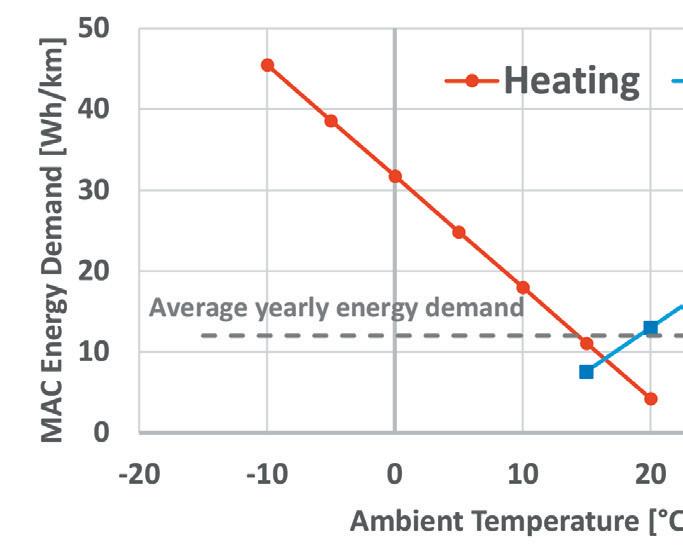
demand in heating and cooling conditions. The following analysis will focus on Light Duty Vehicles (LDV, passenger cars and vans) that represent by far the largest number of circulating vehicles.
Considering that:
• the average LDV energy demand (WLTP testing cycle) is of about 200 Wh/km [Pavlovic 2016],

• the yearly energy demand of a modern MAC is about 6% of the vehicle energy demand (i.e., 12 Wh/km) for cooling [Bloomberg, 2019],
• as simplified assumption, an additional 6% should be considered for ensuring heating [Bellocchi, 2018] in case of electric car due to the lack of waste thermal heat from the engine, • the yearly average travelled distance is of 20’000 km [EUCOM, 2018], [US DoE, 2020].
A single MAC will demand approximately 480 kWh (50% for cooling and 50% for heating) per year for ensuring the thermal comfort and the other related functions comfort under the above listed conditions. Then, using the Willans factors average [EUCOM, 2018], 0.25 l/kWh to convert the energy in liter of fuel for thermal engine-powered vehicles, a MAC needs 60 l of fossil fuel (i.e. petrol, diesel, natural gas, LPG, …), whose combustion produces (2550 gCO2/l) 150 kgCO2, per year. In case of a pure electric vehicle and using the world electric energy CO2 equivalent
Indirect emissions
Fig. 2: – Example of heat pump schematics with use of an intermediate fluid (coolant)

Vehicle with Thermal engine
Electric Vehicle
Direct emission
Function kgCO2/year
Cooling 150
Heating
Cooling
Heating
Table 1 : Synthesis of yearly CO2eq direct and indirect of a typical MAC system
[IEA, 2019] of 475 gCO2/kWh the MAC energy demand for cooling is of about 114 kgCO2/year. This value almost doubles i.e., 228 kgCO2/year, adding the need of heat power to compensate the lack of waste heat from the thermal engine and under the above listed assumptions. So, the indirect CO2 eq emissions are larger than the effect of direct emission (refrigerant leak during manufacturing, use and end of life) in case of use of R-134a (GWP 1430), see Table 1. The direct emissions of a R-134a-based system have been estimated to be 500 kgCO2e for the whole lifetime [Bloomberg, 2019], assumed to be 15 years. Consequently, the direct average direct emissions per year are of about 33 kgCO2e/year. Considering that there are approximately 1’000’000 of Light Duty Vehicles circulating and assuming a worldwide penetration, the overall CO2eq emission due to the MAC use are of about 15 million of TonCO2eq in case all vehicles are equipped with a thermal combustion engine or 23 million of TonCO2eq in case all vehicles are full electric. These figures highlight the relevance of the MAC efficiency and even more point out that the MAC efficiency is
even more important for fully electric vehicles where the lack of waste heat from thermal engine.
The MAC energy efficiency can be improved combining the effect of several possible actions:
• Electrical (fan, blower,…) and mechanical (compressor, heat exchangers) components efficiency enhancement
• System architecture: direct expansion vs indirect expansion, water cooled condenser, internal heat exchanger, heat pump vs electric heater
• Improving the vehicle characteristics to reduce the thermal load: improved insulation, window coatings and reflective paints.
These combined energy efficiency improvements could reduce the energy consumed by MAC up to 65% [IEA, 2019b]. The following chapter will focus on two specific issues: the effect of the use of an heat pump architecture for ensuring the winter heating in battery electric vehicles and the effect of refrigerants on MAC efficiency.
The electric vehicle (BEV – Battery Electric Vehicles) or the hybrid vehicle with relevant electric range capability (PHEV - Plug in Hybrid Vehicle) requires specific measures to ensure comfort and safety function (de-misting and de-fogging) in mild and cold weather conditions due to the lack of waste high temperature heat that is usually available on the conventional thermal enginepowered vehicles (ICEV – Internal Combustion Engine vehicles).
The simpler solution is an electric (PTC – Positive Thermal Coefficient) heater.
A purely dissipative device transforming the electric energy stored in the battery in heat that is transferred directly or indirectly (heatto-liquid and then with a conventional liquid to hear heat exchanger) the passenger compartment. Typically, a PTC heater as an average power of about 6 kW, ranging from 3 kW up to 10 kW, as a function of the vehicle characteristics. The heat pump (HP) is a configuration of a MAC system, that usually transfers heat form the passenger compartment to the ambient, enabling to transfer of heat from the ambient to the passenger compartment.
This function can be performed with a conventional direct expansion system, reversing the thermodynamic cycle [Kowsky, 2012] or by-means of a dual loop cooling system [Optemus, 2019, Ferraris, 2020]. In this case the thermodynamic cycle remains unchanged, and the reverse function is actuated by reversing the coolant flow. The heat pump allows to reduce the energy demand for ensuring heating in a very relevant way. In heating mode, a typical heat pump system used in place of PTC heater enables an energy saving ranging from 17% up to 52%, depending on the geographical context and on the employment of an ERV-equipped system [Bellocchi, 2018].
Today, nearly all LDVs in Europe, Japan, North America and in some
other countries use ozonesafe hydrofluoroolefin (HFO)-1234yf with GWP = 4 as refrigerant. In 2020, four European brands introduced R-744 heat pumps in some of their highvolume electric vehicle models, and SAE International’s Interior Climate Control Committee updated its standards to allow the R-152a use in secondary loop MACs (SL-MACs). The refrigerant itself slightly affects the MAC efficiency, while the system requirement associated to a given refrigerant could have a relevant impact on final energy demand. To achieve the same performance levels in case of the use of HFO-1234yf, manufacturers either apply an IHx (Internal Heat Exchanger) or a larger degree of sub-cooling while, for R-744, an appropriate system design (always including the IHx) and specific controls are required [Malvicino, 2009; Zilio, 2009; Strupp, 2011; Koehler, 2018; Westerloh, 2019].
The requirements to reduce the MAC indirect GHG emission are now global via the Kigali Amendment, while the policies addressing the MAC efficiency, generally giving credits to more efficient MAC, are currently implemented in some regions.
In the next future is foreseeable that the number of countries enforcing measures to promote the MAC efficiency will increase, because the CO2 emission reduction has become a global priority, as well as the need to reduce the energy demand. In this framework, a crucial element is to set-up a reliable, reproducible, and possibly low effort demanding standard testing procedure, either as part of the overall vehicle energy test or for the MAC system alone. U.S. standards rely on credits to incentivize MAC efficiency improvements and load. The EPA recently introduced the AC171 cycle, which is required to verify credit applicability for MAC systems and thermal technologies. Canada LDV GHG standards are aligned with US and Mexico is going to implement a credit mechanism specific for
MAC systems. The European Commission’s standard (EU 631/2019) will allow to account as “eco-innovations” the improvements to MAC systems from 2025.
A simple and conservative approach has been used to assess the impact of the MAC (cooling and heating functions) on vehicle energy balance and overall CO2 emissions.
The MAC system requires at least 6% of vehicle energy demand (i.e.12 Wh/km) for ICEV; this approximately doubles in case of BEVs for ensuring the heating function due to the lack of waste heat form thermal engine generating from 15 TonCO2 eq to 25 TonCO2 eq per vehicle per year, considering the average world energy mix for electricity. The vehicle global fleet will grow from 1.2 to 2 billion vehicles in 2040 and the MAC system penetration will very likely reach 100%, being already at this level in the most developed regions of the globe and rapidly increasing from the around 60% current level in the rest of the world.
So the MAC system is responsible of 18-27 millions of Ton CO2 eq, that could become around 45 Millions of Ton CO2 eq in 2040 without the deployment of any improvement.
The MAC energy efficiency, when operating in cooling mode, can be improved combining the effect of several possible actions up to 65%, while the use of efficient heat pump can reduce the need of energy in heating mode up to 52%. Even if only a part of the possible improvement will be deployed, there will be the possibility to at least contain the energy demand increase offsetting the effect of fleet increase. The industry, partly driven by the need of reducing the vehicle CO2 emission and to save the nominal range of an electric vehicle, and partly to follow the indication from the different regulatory framework, is progressively improving the efficiency of MAC system. The followed path is the deployment of the here listed technologies and the progressive use of HP system for BEVs.
As a result of the greening of the economy, many existing occupations will have to adapt their skills (Bowen et al. 2018) to align their operations to new markets and business models.
According to the World Economic Forum, companies estimate that by 2024 around 40% of workers will require reskilling to ensure the continuation of their business.
Karin Monaco

Project Administrator
Skills Development and Fair Production Unit
Division of Fair Production, Sustainability Standards and Trade United Nations Industrial Development Organization (UNIDO)
Furthermore, a greater privatepublic collaboration on upskilling and reskilling initiatives could boost global GDP by $6.5 trillion and lead to the creation of 5.3 million net new jobs by 2030. Appropriate and new skills (i.e. green skills) are required to create and apply green technologies in diverse industries to enable and assist this process.
A UNIDO’s flagship program on skills development include reskilling and upskilling initiatives in the refrigeration and air conditioning (RAC) sector. Likewise in all other industrial sectors, skilled

employees generates increases in the productivity of labour forces and make investment in industry more attractive. This contributes to sustained employment, higher wages and decent jobs. More specifically in the RAC sector, skills and expertise are also a matter of safety. Technicians do not only need to be able to install, operate and maintain cooling solutions running on alternative and more sustainable refrigerants, but they also need to understand what materials they are working with and master tools, technologies and techniques to keep themselves, other people, and the planet safe.
Training and upskilling are therefore crucial components in the refrigeration industry: they not only help to develop the scientific knowledge, the technical skills and create jobs, but they are also a fundamental step in phasing out HCFCs and phasing down HFCs by

 Franziska Menten
Franziska Menten
Project Coordinator
Montreal Protocol Unit
Division of Circular Economy and Environmental Protection United Nations Industrial Development Organization (UNIDO)
replacing them with environmentally natural alternatives, such as CO2, hydrocarbons and ammonia. Service technicians play an important role in keeping cooling systems running in our houses, particularly smaller units in low-income households. Therefore, the need for qualified and upskilled technicians in the servicing industry that are trained by qualified professionals is more urgent than ever. Providing upskilling not only gives technicians the skills to improve their services, but it also improves their job opportunities.
One of the major aspects of decarbonisation-related employment implications is the type of occupations that would be affected. According to Chateau et al. (2018), low-skilled occupations account for the majority of job creation and destruction at the global level, whereas highand medium-skilled labor, such as technicians in heating, ventilation and air conditioning (HVAC), accounted for the majority of net job growth.


According to the ILO (2019), new (green) occupations tend to emerge at higher skill levels (especially challenging for developing countries facing skills shortages at this level), requiring re-skilling, whereas lowerskilled occupations may only require simple adaptations (i.e. upskilling) and increased environmental awareness.
The figure 2 depicts the changes in skills levels as a result of the green transition. Because of the major changes that will be necessary in terms of technical skills and knowledge, occupations such as technicians in HVAC will undergo a shift in skills as a result of the green transition.



Vidican Auktor et al. (2020) found substantial variation in green technology diffusion rates in developing and emerging countries.

The figure 3 depicts the expected trends in market development for selected green technologies in emerging economies. In general, all green technologies are expected to expand moderately to rapidly in emerging economies. It is important to note that markets for HVAC systems and renewable energy technologies are expected to grow significantly in developing countries in the coming decade and therefore the need to invest in a skilled workforce that is able to safely operate and maintain these technologies will be significant.
To support the green transformation, it is crucial that workers have the appropriate skills to meet such industrial demand. According to the recent UNIDO’s Learning and Knowledge Development Facility (LKDF) study, the process of greening the economy is expected to have important effects on labour markets worldwide. As the pace and diversity of green technology dissemination will grow in the coming decades, new markets will emerge and ultimately the demand for green jobs and related skills will increase (Auktor, 2020).
Reskilling and upskilling the workforce through skills development programs is key for a successful green transformation. However, policy-makers face several challenges to effectively address what skills are needed for greening the economy. Not only is the future unknown regarding how these global trends will develop and reinforce each other; the transition to a green economy is itself unique given its cross sectoral effects, deficit of precedent, and therefore lack of best practices to draw upon. Thus, learning, experimentation, and foresight in policy design and implementation are crucial. UNIDO’s LKDF offered a set of guidelines for increasing the effectiveness of green skills development programs that could, for example, increase the number of trained and certified technicians
on natural alternative refrigerants and positively contribute to the cause against global warming. Such guidelines are relevant not only for the public sector developing strategies and specific policy interventions, but equally important for the private sector playing a central role in the green skills development process, development cooperation actors, trade unions and civil society. These are:
- Policy coherence between green skills development programs and other policy goals through a systematic process of stakeholder consultations: through a systematic process of stakeholder consultations, policy coherence between green skills development initiatives and other policy goals may be achieved. However, it is even more critical to ensure policy coherence among ministries, industry associations and firms, training and education institutions, civil society, and other stakeholders, in order to ensure that policies implemented contribute to green jobs and enhance skills in green occupations, as well as being aligned with market needs.
A structured process of stakeholder discussions is crucial to this objective. Green skills development initiatives are seldom integrated into national (or sectoral) development efforts, and most choices are made in silos (either in the public or private sector).
Such consultation processes would also ensure that the private sector receives more guidance and support (financial, in the form of subsidies for training and re-skilling or favourable loans for investing in jobs-creating sustainable businesses, and sometimes technical) in identifying cost-effective greening options and aligning their actions with national greening strategies.
- Solid empirical base for green jobs and green skills: a strong empirical foundation is required for well-informed policy. Policymakers should collaborate with the private sector and prioritize the creation of comprehensive labour market information systems,
agree on definitions, and use systematic mechanisms to identify where green jobs are (which sectors and types of occupations) and what skills are currently required.
- Systematic mechanisms for green skills forecasting: Anticipating future skills development demands necessitates significant capacities in forecasting green technology markets at the global and national levels, as well as commenting on such trends in light of existing local capabilities. As ILO (2011: 162) argues, skill-shortages for green jobs stem from several factors, such as an underestimation of growth in certain green sectors or a general lack of scientists and engineering or of teachers and trainers in fast-growing sectors. The public and private sectors must work together to develop capacity for conducting needs assessments and to financially support such initiatives.
Coordination of goals and interventions across sectors and stakeholders: without comprehensive coordination and consultation across ministries and with private sector actors (i.e. industry associations), trade unions, workers, education and training institutions, and societal groups, none of the above objectives (policy coherence, accurate measurement, identification and anticipation of green skills) would be accomplished. Given the cross-sector nature of green jobs, conversation and cooperation are even more vital in this setting than in more typical skill development initiatives.
More particular, cross-stakeholder cooperation demonstrates that countries with well-established labor and environmental legislation, strong TVET institutions, and close involvement with the private sector have reacted to the increasing need for green skills significantly faster (van der Ree 2019).
Increasing awareness on sustainability issues related to production and consumption of goods: Such activities are critical at all levels of education because they help to change behavior
and generate demand for green technology and procedures.


- Monitoring and evaluation:

Monitoring of inputs into skills development programs is just as crucial as monitoring of outputs. Because the labor market is always changing, not only due to economic fluctuations, but also due to rapid changes in technological development and dissemination, policy actions must be regularly monitored and calibrated/adapted.
One of the most remarkable examples in the RAC sector is the partnership between UNIDO and Midea, the Chinese giant manufacturer of air conditioning appliances.
China is the world’s largest producer of air conditioning appliances, producing around 70% of all room air conditioners, and with the fastest growing domestic market. This means that every HFC-based air conditioner sold has an environmental cost, posing a serious threat to our ecosystem. During the last 10 years, UNIDO has worked together with Midea to search for environmentally sustainable solutions for residential air conditioning and to make a contribution to global environmental protection together, sharing a vision to protect the environment. Midea was the first manufacturer to partner with UNIDO and transition from HCFC-22, a powerful greenhouse gas, to R-290 (propane), a natural refrigerant with negligible GWP. Midea has invested more than 10 years in R&D and over 7 million
USD for its product line. UNIDO supported Midea in redesigning their products and production lines with specific characteristics, especially in regards to the refrigerant’s flammability.

Also the technicians that service these air conditioners had to be trained on how to safely install and maintain the new systems. In China, both Midea and the Chinese government provided the necessary training for this technology and UNIDO also supported highlevel training of engineers and management to build confidence of the industry in this new technology. This project has phased out 13.2 tons of ozone-depleting potential and reduced 967,490 tons of CO2 equivalent emission per year, according to data from UNIDO. This resulted in the recent introduction of this innovative product into the EU market. But this process is not as simple as it seems. R-290 (propane) is a flammable refrigerant that requires qualified technicians to be able to safely install, service and maintain these air conditioners. If we want to bring environmentally friendly air conditioners to the EU market and increase their uptake worldwide, we need to have trained engineers and technicians at local and global level and invest in their reskilling and upskilling.
In the case of the EU, the number of trained and certified technicians on natural alternative refrigerants is very low (only between 3.5% and 7%).
Already back in 2012, AREA (Air conditioning and Refrigeration European Association) alerted on the risk of shortage of trained technicians. Today, after 10 years, AREA is calling for mandatory certification, as the situation has not improved with a low number of trained technicians and a high demand for alternative refrigerant solutions. If we want to increase the uptake of this product worldwide, there is a need to develop and harmonize safety standards and to train technicians (reskill, upskill and set up new curricula) in the EU and worldwide on natural refrigerants and flammables to be able to safely
handle this technology. This technology by itself could make a significant contribution to the fight against global warming by reducing it by 0.3 degree Celsius.
UNIDO and major manufacturers, including Midea, are working to increase the uptake of propanebased air conditioners and advocating for technicians to be upskilled on alternative refrigerants and flammables, both at the national and global level, to truly achieve economies of scale. There is still work to be done, but the journey thus far is proof that industry leaders have a key role to play in pioneering technologies for a sustainable future.
Greening the economy will inevitably change the skills required and the tasks involved in many of the existing occupations, including the ones in the RAC sector.
Developing skills, knowledge, and competencies is therefore an important part of the transition to a low-carbon economy. Such skills enable the private sector and individual consumers to embrace and employ resourceefficient, sustainable processes and technologies (Cedefop and OECD 2015).
The key to unleashing the potential of each individual in our global community is education and continuous upskilling. Skilled people increase labor productivity and make industrial investment more appealing. This helps to ensure longterm employment, greater earnings, and quality jobs.
have access to additional resources by clicking or scanning here

Skills and Training Committee, Air Conditioning and Refrigeration
Industry Board (ACRIB)
Training Director - Business Edge
We are now at midpoint of the continuing “phase down” on the use of HFC refrigerants as detailed within the F Gas regulations. HFC availability has reduced to 45% of that in 2015 and many products placed on the market are now required to utilise refrigerants with GWP’s < 150. This has resulted in an increase in the use of low GWP refrigerants such as Hydrocarbons, Hydrofluoro-Olefins and CO2
Key to table:
PL Practical Limit
LFL Lower Flammability Limit
UFL Upper Flammability Limit
MIE Minimum Ignition Energy
These refrigerants are being used in a wide range of applications:
• Domestic heat pump
install, service and decommission systems designed to work on low GWP refrigerants and the hazards that they bring.
Many projects across Europe have shown that if all interested parties including, the refrigerant manufactures and their distributors, consultants, architects, and facilities management companies, amongst others, work together, these refrigerants can be used without too much difficulty.
Refrigerant
to additional
• Small split air conditioning
• Small multi-split air conditioning
• Commercial fridges and freezers
• Temporary air conditioning
• Air handling units
• Supermarket refrigeration systems
For many decades the refrigeration, air conditioning and heat pump industries have been used to dealing with non-toxic, non-flammable refrigerants. We now need to upskill to enable us to safely design, select,
If these systems are designed correctly, the risk of either fire or explosion can be mitigated. The service technician, however, who may be the least qualified has to undertake the higher risk tasks, sometimes with very little experience and or no training. Having worked within the training and education sector of our industry for over thirty years, one thing I have learnt is that voluntary training and assessment is only undertaken by the minority.
It is therefore imperative that the ongoing review of the F Gas regulations within Europe as well as the regulation being created within the UK ensures that mandatory training of natural persons involved in the handling of flammable or high
UFL (kg/m³)

R600a A3 0.011 0.043 0.203 0.25 0.0196
R290 A3 0.008 0.038 0.192 0.25 0.0168
R1270
R170
R152a
0.008 0.046 0.253 0.28 0.0213
0.0086 0.038 0.253 0.24 0.0168
0.027 0.130 0.563 0.38 0.0781
R32 A2L 0.061 0.307 0.680 30-100 0.2285
R1234yf A2L 0.058 0.289 0.573 5-10k 0.2119
R1234ze A2L 0.061 0.303 0.443 61-64k 0.2248
R454A A2L 0.056 0.278 0.522 300-1k 0.2019
R454C A2L 0.059 0.293 0.569 300-1k 0.2156
R454B A2L 0.039 0.303 0.569 100-300 0.2248
R452B A2L 0.062 0.310 0.609 100-300 0.2313
R717 B2L 0.00035 0.116 680 0.0677
R744 A1 0.1
N/A N/A N/A
pressure refrigerants is included. The recent document issued by Air Conditioning and Refrigeration Association (AREA) suggested three new areas of competency assessment (theory and practical):
• Flammable large systems
• Flammable small systems
• Systems using high pressure refrigerants
This seems a sensible suggestion. We have certification schemes in the UK that currently comply with most of the criteria contained within the skills matrix suggested by AREA. It would therefore be a simple task to upgrade them to meet the criteria suggested by AREA.
It is very important that practical competencies are included within the proposed AREA skills matrix. In the UK it is thought that because a technician holds a valid category 1 F-Gas qualification that there is no requirement to reassess their practical competencies when it comes to handling flammable or high-pressure refrigerants. This is potentially very dangerous, especially as we in the UK have one awarding body that has no expiry date on their qualification. This means that someone could have gained their F Gas qualification in 2009, attend a short awareness course and be deemed competent to work with flammable or high pressure refrigerants. Even though there is no proof that they have continued working practically within the industry for the last 13 years! When the technician is carrying out the installation, repair, or decommissioning of refrigeration, air conditioning and heat pump systems that utilises either flammable or high pressure refrigerants, is when the risk to health and safety increases. The technician needs to be trained in the following activities and tasks, over and above those required to meet the minimum competencies within EU 2015/2067. These include:
Understanding requirements of
with regard to Access categories
Understanding requirements of
EN378 with regard to location of refrigerating systems
• Understanding requirements of EN378 with regard to maximum allowable refrigerant charge calculations (Annex C)
• Understanding requirements of EN378 with regard to alternative for risk management of refrigerating systems in occupied spaces (Annex C)
• Understanding requirements of EN378 with regard to maximum refrigerant charge calculations
• Understanding requirements of EN378 with regard to Safety classification about refrigerants (Annex E)
• Carry out site specific risk assessments
• Have an understanding of Dangerous Substances and Explosive Atmospheres regulations, ATEX Regulations and EN 60079-10-1:2021
• Ensuring a safe working environment
• Ensuring adequate ventilation
• Correct selection of tools and equipment to be used with a flammable refrigerant
• Preparing a system to safely undertake “hot works” on a system previously charged with a flammable refrigerant
• How CO2 systems differ from standard refrigerating systems
• Jointing of K65 Refrigeration Pipework
• Correct selection of tools and equipment to be used with a high pressure refrigerant
• Pressure testing of high pressure systems
• Evacuation and Dehydration
• Charging of CO 2 in both liquid and vapour state
• Safe venting of R744
The following is an example of a calculation that a technician would need to complete to show an understanding of some of the theoretical bullet points listed above. It shows the simple formula used
to determine the maximum charge allowed in accordance with EN 378 (This example is based upon the installation of a small air conditioning system to be fitted in a hotel bedroom designed to use R32.
• Step 1: Access: a. Location class: II. Room volume: 100m³. Height of room 2.2m.
• Step 2: A2L (R32) LFL = 0.307kg/ m³.
• Step 3: Human comfort, ceiling mounted indoor unit:
• Using equation and not more than the greater of m2a × 1.5 (26 × 0.307 × 1.5 =11.973) or C.3. See below.
Note: If the occupied space is greater than 250m², then use Table C.3. (This has a minimum height for a room of 2.2m. Thus, for R32, if any of the space is below ground level, then room area (250m²) x height (2.2m) = 550m³ x RCL (0.061kg/m³) =33.55kg. Or, if all of the space is above ground level, then room volume (550m³) x QLMV(0.063kg/m³) = 34.65kg and not more than m3b x 1.5= 59.865kg.
• This amount can be exceeded if the appropriate measures are ta ken in accordance with BS EN 3781 C.3.2.2 or C.3.2.3
A well-publicised fire that occurred in London has resulted in a complete review of the minimum skill required for persons involved within the construction industry. There is an even greater emphasis on “competency”. To be competent you need to have the skills knowledge and wherewithal to carry out the task. Qualifications go some way to prove competency. It is therefore important to ensure the qualifications available to technicians are suitable and sufficient. As mentioned previously transference of refrigerant, into or out of the systems has the greatest potential for harm to the technician. To safely recover a flammable
Example of a label for a flammable refrigerant system
refrigerant from a system, it is important to ensure that you have a safe working environment. This is achieved by ensuring that:

• Work is conducted in a wellventilated area (either natural or forced)
• Adequate safe workspace (dry, no tripping hazards and tidy)
• Adequate lighting
• No source of ignition within the flammable zone (minimum 3m)
• Flammable gas leak detector, position dependant on characteristics of refrigerant (density greater than or less than the air in the space where the refrigerant leaks)
• Recovery machine that is safely compatible with the refrigerant safety class
• Gauge set or manifold fitted with isolating hoses
• Recovery cylinder(s) with adequate space for the total refrigerant charge within the system
• Recently calibrated refrigerant cylinder weighing platform
BS EN 378 4:2016 states that the system pressure should be reduced to 0.3bara (absolute). This enables any remaining liquid refrigerant to evaporate and then be drawn out. If you believe the system has a
leak it is essential that the recovery process is not reduced below atmospheric pressure, to ensure a flammable mixture does not occur within the system as air containing oxygen is drawn in.
Note: Flammable refrigerant recovery and charging cylinders have left-handed threads, therefore bottle adapters must be fitted. Left-handed thread connections have a chamfered grove to identify them.
Whenever hot works are to be undertaken, a suitable and sufficient ATEX or DSEAR risk assessment shall be undertaken, and temporary zoning applied. When carrying out hot works on a system that has been previously charged with a flammable refrigerant, the following process should be completed prior to commencing work:

• Purge with OFN
• Evacuate system (0.3baraAbsolute)
• Agitate oil where there are large deposits, if possible, or energise the compressor crankcase heater for at least 4 hours.
• OFN purge. Use a flammable gas leak detector close to the point of purge gas escape to ascertain if the procedure is to be repeated
• Repeat as necessary
Once the technician has completed the installation or remedial works it is important to ensure that the equipment is correctly labelled to
Flammable refrigerant warning triangle to be placed near or on the compressor or condenser

be sure that anyone working on the system in the future is fully aware of the risk associated with the refrigerant within. The label should be attached to the compressor or condenser, or both, citing suitable information. See below for an example. A flammable warning triangle should be attached to or close to the label or close to the service valves or ports.

Over the last 5 years since the launch of various types of refrigerating equipment working with low GWP refrigerants, our training centre has carried out successful training and assessment of over 1600 technicians under the F Gas scheme. Whereas, approximately 650 have completed flammable training and only 225 have completed CO2 training. I would expect this ratio to be true of most assessment centres across Europe. Therefore, left to their own devices the typical technician has not reskilled to ensure competency when handling low GWP refrigerants. The only way this will happen is if legislation demands it.












Most people only think about cooling when they enjoy an ice cream on a hot afternoon or sit in air-conditioned comfort.

 W. Stephen Comstock Head of Special Projects World Refrigeration Day (WRD)
W. Stephen Comstock Head of Special Projects World Refrigeration Day (WRD)
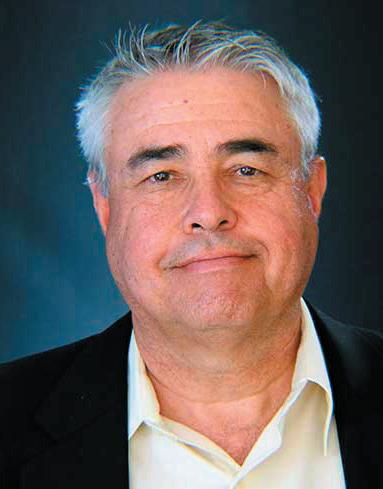
access to additional resources by clicking or scanning here

But we depend upon air conditioning and refrigeration every day for preserving the food in our diets, health care, internet and cellular access, and through applications which enable manufacturing of products we use daily. These under-appreciated technologies have a significant impact on the environment, first through direct emissions related to the eventual refrigerant leakages of refrigerants characterized by global warming potential and, second, indirectly through the emissions generated by nonrenewable energy consumption generated in power plants where fossil fuels are still primarily used. As the use of cooling expands because of a global population increase, global economic development, and the explosion of the cooled spaces needed for artificial intelligence, it is essential that we control cooling’s degree of environmental impact. New technologies provide us with the
opportunity. Industry has long struggled with how to make the public aware of all the benefits that cooling delivers to modern day life; how to make the public knowledgeable that their cooling purchasing decisions impact the environment; and how to encourage advocacy for governmental action that supports advanced cooling technologies which do not harm the ozone layer while having lower global warming potential. Public awareness of advanced technology solutions can help to transform the market to increase availability of more energy efficient and less environmentally harmful products. Achieving successful public outreach, however, has been elusive for the cooling industry.








To change this dynamic, United Nations Environment Programme (UNEP) OzonAction and Global Food Cold Chain Council (GFCCC) have partnered with Chefs4thePlanet to give leading chefs a public platform to describe the benefits of cooling and how it is essential for our health and for the well-being of human life on the planet. The outcome is Cooling Keeps Food Fresh (www. coolingfood.com), a global campaign that launched on World Refrigeration Day, June 26, the birthdate of Scottish scientist William Thomson. Known as Lord Kelvin, Thomson was the formulator of the first and second laws of thermodynamics. Twenty-six technical and industry associations and intergovernmental agencies support the campaign. Chefs4thePlanet is a network of chefs, producers, influencers and all those who love food and who

care for our planet and our health. It is dedicated to climate action, the protection of biodiversity and the environment, and the fight against food waste. The organization’s activities build on chefs’ ability to be agents for change, integrating the values of sustainable gastronomy into their menus by developing creative techniques and recipes as well as different means of production. The campaign joins Chefs4thePlanet with the public and private sectors through World Refrigeration Day which develops public platforms that raise awareness of cooling’s benefits and inspires development and adoption of innovative and sustainable cooling solutions by the public, governments, industry, and practitioners for the wellbeing of future generations. World Refrigeration Day is not country, group, nor organization specific, and World Refrigeration Day is technology neutral.


Cooling – air conditioning and refrigeration – is at the nexus of two of the great challenges facing humanity: feeding a growing population and battling climate change. No other single technology has as great an impact on modern life.


Inset: “Cold storage is essential because it allows me to keep my ingredients longer and above all... avoid the risk of food poisoning! Increased temperatures cause and accelerate microbial growth and reduce product shelf life. I maintain my ingredient quality thanks to the cold.”
Denny Imbroisi, Chef at IDA, Italian Cuisine with Transalpine Roots and Mediterranean Generosity
After steadily declining for a decade, world hunger is on the rise, affecting nearly 10% of people globally. The UN’s State of Food Security and Nutrition report for July 2022 shows the world is moving backwards in efforts to eliminate hunger and malnutrition. From 2019 to 2022, the number of undernourished people grew by as many as 150

million, a crisis driven largely by conflict, climate change, and the COVID-19 pandemic. In all, the number of people affected by hunger globally rose to as many as 828 million in 2021.1 One solution to the food security challenge is wider application of the cold chain. Of course, the varied diets people enjoy every day in developed countries depend on refrigeration, but in developing countries reducing food spoilage through increased use of cooled storage and transport and refrigeration in retail and domestic applications can be a matter of life or death, enabling millions of more people to be fed and providing the undernourished with nutritious diets. But environmental impacts need to be considered.

Inset: “To fight food waste, we work with products close to their expiry date – therefore impossible to sell – but that are still perfectly healthy. This requires quick preparation and careful collection. Mastering cold extends the life of certain ingredients and lets us offer fresh and healthy meals that we deliver to charities that fight food insecurity and the economic and ecological impacts that food waste generates. This also allows us to offer local and seasonal products throughout the year on our restaurant’s menu without importing products from the other side of the world.”

Elliott Van de Velde, Chef at
As with air conditioning, forwardthinking energy use policies and technology choices based on sustainability considerations are required because of cooling’s potential impact on the environment. The trend is unescapable. The world will have more cooling. The increasing frequency of heat waves along with an expanding middle class in developing countries are driving the growing use of air conditioners in homes and offices around the world.
According to the International Energy Agency, global energy demand from air conditioners is expected to triple by 2050, requiring new electricity capacity the equivalent to the combined electricity capacity of the United States, the European Union and Japan today.
The global stock of air conditioners in buildings is predicted to grow to 5.6 billion by 2050, up from 1.6 billion in 2018 – which amounts to 10 new ACs sold every second for the next 30 years. While in countries such as the United States and Japan, more than 90% of households have air conditioning, just 8% of the 2.8 billion people living in the hottest parts of the world have air conditioning in their homes. We depend upon cooling. And we depend upon the public’s awareness of sustainable cooling technology availability to generate market transformation.
Technology has profoundly shaped society, the economy and the environment. While technology has caused many environmental and social concerns, it is also key to addressing environmental degradation, climate change, food scarcity, waste management, and other pressing global challenges. How fast human society meets these and other challenges depends in large part on the pace and scale at which good technology displaces inferior technology in different global contexts.
The pace and scale are dependent upon public awareness and support. The technology that gives us an ice cream cone and indoor comfort during the summer also enables the Internet and telecommunications industry’s data centers, quick freezing equipment for frozen food, refrigerated transportation networks, refrigerated display cabinets, and our home fridges.3
Inset: “Cold is important to maintain the temperature of ingredients and give the best products to our customers. The cold declines in several temperatures. Fish require a temperature between 0 and -2 C, meat between 0 and +4 C. And when you want to have fun and make pastries, we need a cooling cell with ingredients at -40 degrees, for example, for nitrogen with which I make minute sorbets.”
Alan Geaam, One Star Michelin Chef at Alan Geaam, Combining France’s rich culinary heritage with a touch of Lebanon
Chefs connect with the public in a way which engineers and scientists seldom do. Cooling technology is hidden inside a box or within the walls of a building. Food is at the center of life’s different occasions as well as having a role in our daily routines. It provides the nourishment we require for survival, and it connects us to each other, to our past, to our culture, and to the world. We follow our distinct traditions
around food, and we explore through food. Web searches for cooking trends, such as recipes, have doubled over the last two years.4
Four out of five Americans watch television shows on cooking with 15 percent watching very often.5
Inset: “The cold warms me up. The emotion provided by an ice cream abandoning itself in melting and fresh texture on the tip of the tongue. I like this cold feeling. To quote well-known French writer Victor Hugo, I would say that the cold is, like the form, the bottom that rises to the surface.
The cold warms my heart and soul up!” Bruno Verjus, Two stars
Michelin Chef at Restaurant Table, French Loire Inspired Cuisine
At a time when each day we increasingly exceed our planetary boundaries, and our intensive agriculture and food practices produce about one third of global greenhouse emissions, feeding ten billion people in 2050 requires the systemic transformation of our food system.
Chefs as role models and influencers have a key role to play. Alternative proteins, seasonal, local and plantbased ingredients as well as fighting food waste are becoming more and more important in gastronomy, and cooling will continue to be essential as an ingredient in this transformation.
The Cooling Keeps Food Fresh campaign is built around four key messages.
One is Cooling Keeps Food Safe. The objective is to educate the public about how to efficiently and correctly use cooling technology.
Inset: “Cold is essential in the kitchen to keep food fresh, make it last longer and avoid food waste. Cold contributes to food safety.” Dina Nikolaou, Chef at Evi Evane, Greek Inspired Cuisine Cooling slows bacteria growth. Keep the fridge and freezer in a safe temperature range. Bacteria grow most rapidly between 4.4 and 60°C, some doubling in as little as 20 minutes.
The second message is that cooling supports varied, nutritious diets. In some countries, access to the cold chain can be the difference between health and malnutrition.
Inset: “What causes malnutrition is lack of accessibility. The cold chain is a vital element for food safety. Each stage is intertwined with another, from collection to storage, packaging, warehousing, transport to point of sale, and storage at point of consumption. The cold chain protects against the proliferation of bacteria.”
Mercedes Ahumada, Chef of Traditional Mexican Cuisine
A one-hour cooling delay after picking reduces shelf life of fresh produce by one day or more. Quick freezing fruits and vegetables enables them to picked at peak ripeness. Freezing processes do not require adding chemical preservatives, and frozen seafood retains peak flavor and nutritional value.
Inset: “Morocco is hot. We depend on cooling to preserve food and food preparations such as meats, drinks and sometimes vegetables. My recipe for Tiramisu, Honey and Orange Flowers and “Cornes de Gazelle’ (a Moroccan biscuit) needs hours of cooling.”
Mohammed Baya, Chef at Restaurant La Table Clandestine, Belgian-Moroccan Inspired Cuisine
Of all food produced annually, it is estimated that 46% should be refrigerated. Only 21% actually is, and 13% of all food produced spoils or is otherwise lost. Whereas in developed countries 60% of food that should be refrigerated is, in developing countries, that figure drops to 20%.
It is estimated that 54% of food that should be refrigerated is lost and never consumed in developing countries. On a global scale, 950 million people could be fed annually from food loss due to lack of refrigeration.6
Regular maintenance of cooling equipment should be carried out by certified technicians to eliminate refrigerants emissions and to keep the unit performing at a high level. Inset: “Cooling extends the shelf life of foods without altering taste, appearance nor nutrient value. Many families do not have time to cook every day. This is why I defend the practice of Batch Cooking. We cook several dishes at once for the whole week. With this technique, we eat homemade food every night. Cold is our ally provided you know how to use it. Some preparations should be kept high in the fridge, others lower, and yet others in the freezer. Some will be better in the fridge’s airtight box and others with damp paper. But all need cold. Cold is life!”
Justine Piluso, Chef at justinepiluso. com, Participant of Top Chef France 2020, French Cuisine Inspired by the Mediterranean Sea
An energy saving checklist for refrigerators that every consumer should follow includes matching size with family needs; looking for an energy use label when purchasing a fridge; keeping coils free of dust; cleaning and checking the door gasket; changing filters in ice makers and water dispensers; closing the door as quickly as possible after opening it; keeping the unit level; leaving at least 2.5 cm (1 in.) around the unit for airflow; and placing it away from heating sources.
The fourth message concerns environmental protection. To have minimal impact on climate and the environment, match the appropriate cooling equipment to the application and select equipment that use ozone and climate-friendly refrigerants and have high energy efficiency ratings. Inset: “With the fridge, we have food that can be kept longer with the same freshness. We can transport food from one place to another without risk of deterioration. In
the past ice cubes were used to keep fish fresh. Nowadays, there is good technology to keep food fresher with less impact on the environment.”
Gregory Cohen, Chef of French Inspired Cuisine
Sustainable cooling reduces one of the largest contributors to climate change. Greenhouse gas emissions from food production amount to 26% of greenhouse gas emissions from all sources. Of that, 24% is from uneaten food: 63% of which is loss in the supply chain and 37% is consumer waste.7 Eliminating food waste can be an important contributor to climate stability.
Inset: “Thanks to our fridges and our cooling systems, we have fresh products everyday like our fish and vegetables. Cooling takes good care of our products.”
Henrik Andersson, Chef at Le Fumoir, Swedish Inspired Cuisine
If you are a cold chain professional:
• Consider most efficient and lower-GWP technologies when purchasing or replacing equipment or components.
• Ensure that operation and servicing of equipment is professionally conducted and logged.
• Monitor temperatures of storage, transport, and retail equipment.
Cooling’s significance is sometimes taken for granted by governments, end-users, and the public. It makes many important contributions to our society, with direct connections to lives, livelihoods, health, nutrition and environmental protection. Besides its main purpose of keeping food fresh and safe to eat, the refrigerator can also be an agent of change to help solve environmental challenges such as preserving Earth’s ozone layer, fighting climate change, and promoting energy efficiency. The refrigerator-freezer in your house or favorite restaurant, the cooling equipment in your food stores and in distribution warehouses, and refrigerated ships, trucks, and delivery vehicles have a huge impact far beyond the kitchen.
Inset: “Cooling, whether refrigerated
or frozen, allows us to maintain the optimum quality of products from harvest to final use in the kitchen.”
Laurent Pichaureaux, Chef at Esens’ALL, French Inspired Cuisine
Industry can facilitate the reduction of food loss and waste and its negative environmental impact by promoting greater access to food preservation technology and promoting the development and utilization of costeffective, energy- efficient equipment with reduced environmental impact. A sustainable cold food cold chain will be an economic, social and environmental net-positive.
The Cooling Keeps Food Fresh Campaign invites the engagement of the cooling industry, food producers, food retailers, and other groups and individuals that support sustainable cooling. The chefs’ cool recipes that rely on the refrigerator for preparation and on refrigerated ingredients are posted at www.coolingfood.com, where they also deliver cooling messages in video clips. In addition, a campaign brochure with facts and figures about cooling is available for download in multiple languages. If you are a professional chef or want to engage a chef, the website has a “Get Engaged” section where chefs can join the campaign and submit recipes. Bon appétit to apply sustainable technology so Cooling Keeps Food Fresh.
In 2019 Stephen Gill, Founder of the World Refrigeration Day, in occasion of the last in-person MOP within FAO’s premises in Rome. It was a great success with many events and the presentation of the Rome Declaration for the cold chain, to prevent food waste.

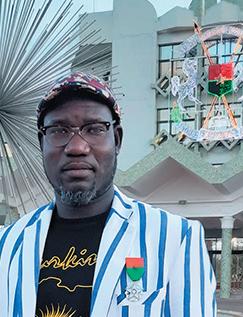
Union of Associations of African Actors in Refrigeration and Air-Conditioning (U-3ARC)
Expert Trainer - Centro Studi Galileo
General Manager - New Cold System
Africa is a continent with great potential, including in terms of refrigeration. However, sub-Saharan Africa, similar to other areas with great development potential, faces serious difficulties. Here, 82% of workers depend on the agricultural sector, including both farming and fishing. It must also be considered that here over half of the subSaharan population - 600 million people - does not have access to electricity.
There is a need to grow, and the market potential is interesting. However, it is necessary to team up, create the conditions to share good practices and create “critical mass”.
It is precisely for this reason that the U-3ARC association (Union of Associations of African Actors in Refrigeration and air Conditioning) was born. Officially founded on September 24, 2020; it is made up
of 30 national associations from 29 countries representing 18,000 companies employing 200,000 people.
We began to lay the foundations for the birth of U-3ARC back in 2019. Personally, I decided to connect the various African national associations because I believe in the potential development of refrigeration and air conditioning in Africa to overcome lot of issues. Refrigeration, particularly, has crucial importance for the continent; where the great majority of the population lives in rural areas, where the main activities are agriculture, breeding, and fishing. All products coming from these areas of activity need the refrigeration sector to be sustainable. In this sense, it is possible to use clean energy such as photovoltaics to create solar refrigeration, powering the systems and cold rooms. I am aware that the refrigeration sector in Africa is facing various problems, especially in the sub-Saharan area, and even today it does not occupy the space it deserves. And therefore, it is necessary to work together to create the conditions to allow the potential growth of the refrigeration sector that it deserves.
The Union works precisely to bring the actors together. From the first meeting that took place in Burkina Faso, where the headquarters was established with a common agreement, the foundation of U-3ARC was carried out. From the initial 28 countries, today all 54 countries in Africa have joined (Figure n°1).

To achieve this important result, we worked to meet the other representatives of the various countries (out of the total of African countries, 38 have an association), to create the conditions suitable for participating in our association. In

this sense, we are helping those in need to create the ideal conditions for an associative life, bringing the right ideas and stimuli, as well as inspirations from neighboring countries, to create virtuous examples.
In terms of training, U-3ARC has also launched ad hoc proposals, organizing specific webinars (Photo n°1). In addition, it has launched a survey / census to gather basic information on its members and on Africa - a useful initiative to understand the situation even better, open to all countries that have joined. U-3ARC has decided to organize an annual General Assembly in September, establishing that the host site will be, every two years, a country other than Burkina Faso, precisely intended to involve every country.
Some African countries have already developed RAC curricula for training centers and institutes.

The most significant example is Algeria. It has nearly 300 training centers in the refrigeration sector. Furthermore, Morocco and several others in North Africa have advanced or are making important progress: in particular, Tunisia has made enormous progress in terms of simplification and training, to ensure safe and quality refrigeration. I had the privilege of conducting certified training to trainers on the F-GAS topic and regulations through Centro Studi Galileo. This country is almost ready to count on a national certification law on alternative refrigerant gases (HFOs and HCs). Another very important nation is South Africa, also at the regulatory level.
In Burkina Faso, thanks to the work done with U-3ARC, the Ministry of Energy has created an ad hoc department for refrigeration, the first ever in Africa. It was the minister himself, Dr. Ismael Bachir Ouédraogo who announced it, during U-3ARC General Assembly held in from September 24 to 262021 in Ouagadougou (Burkina Faso), highlighting the importance of refrigeration (See Photo 2 & 3). Africa has enormous untapped potential. First, it is not a saturated
Figure n°1: All the continent has now joined U3-ARC
market, moreover, conditions are being created for technological development and more. There is a great demand for refrigeration and air conditioning and in terms of investments, there is only the embarrassment of choice. But first of all, it is necessary to raise awareness of the importance of refrigeration, often hampered by high taxation. Only in sub-Saharan Africa does taxation rise from 40% to 65% depending on the country, as refrigeration equipment are considered luxury goods. There is a great need of cold chain, especially in the agri-food sector. So, there are many conditions for investing in refrigeration in Africa, but there are many elements to grow. An example: there is no cheese factory in all of Burkina Faso, yet there is a lot of milk that can be processed and transformed into cheeses. The same for cured meat factories. Refrigeration in Africa is the key to a sustainable development. Due to the lack of an appropriate cold
chain in Africa, tons of food are wasted daily; therefore, refrigeration is crucial for African countries. As previously stated, around the 80% of the African population is living in rural areas, where the main activities are agriculture, fishery, and rearing; the production coming from these activities needs refrigeration to feed the population safely and sustainably – a proper cold chain is understandably fundamental in this sense. The development of the agrifood sector is not only a matter of providing fresh food to the population, but also of giving them the chance to grow strong and independent economically, creating employment and developing a welfare system, all the while being climate friendly. The future of the world depends on the future of the refrigeration. Within this context, U-3ARC and UNITED NATIONS INSTITUTIONS (UNEP, UNIDO, UNDP, …) can and should join forces on the African level to achieve these goals involving all African public bodies, such as
the African Union by applying the following suggested actions, as efficient cold chain can drive to the achievement of 17 UNSDGs:
I. Give pride of place to the HVAC-R sector by integrating its promotion in policy documents and development strategies (establishment of a favorable legal framework for the development of refrigeration, construction of refrigerated infrastructures at the zone of production and consumption, promotion of youth entrepreneurship, application of community guidelines on crafts, framework for the promotion of the cold chain etc.)
II. Involve professional organizations and associations in the field of refrigeration and air conditioning in the development and implementation of policies and strategies and in activities related to refrigeration and air conditioning.

III. Accompany and develop vocational training centers while ensuring their proper functioning, their equipment in appropriate teaching materials and facilitating accessibility (e.g. offer of scholarships).
IV. Engage in reflection on zero-rating and/or exemption of refrigeration equipment and equipment, which is not a luxury but a necessity for ensuring the socio-economic development of the country.
V. Initiate the creation of an authority in charge of refrigeration which is attached to the Prime Minister’s office to take charge of the promotion of refrigeration with regard to its importance in sustainable development, its stake for food self-sufficiency and its transversal character (for example: energy, agriculture-breedingfishery sector, environment, health, industry, trade,…).
VI. Establish a legal framework for

Production
Table n°1: Sub-saharans countries perishable foodstuffs production statistics
In Africa 70% of the crop is wasted because of inadequate cold-chain. Source UNIDO 2015
better consideration of refrigeration in public development policies.
VII. Include the cold chain in priority sectors through the promotion of public-private partnerships in this area.

VIII. Instruct the implementation of exemption measures on cooling and air conditioning equipment to promote their accessibility to the public and to producers in the agriculture, breeding, and fishery fields.
IX. Strengthen the dynamics of installing cold rooms in the different regions for the conservation of agricultural, breeding and fishery products.
X. Promote women in the refrigeration and air conditioning professions.
XI. Adopt regulatory texts to consider energy efficiency in connection with refrigeration and air conditioning during the design, construction and operation

phases of buildings and structures according to Kigali amendment on Montreal protocol.
XII. Adopt regulatory texts to control the import of certain types of refrigeration and air conditioning equipment using regulated refrigerants.
XIII. Develop a public administration benchmark for projects to acquire refrigeration equipment and for maintenance operations of said equipment.
XIV. Support activities promoted by national associations through U-3ARC in the refrigeration sector.
XV. Avoiding dumping of inefficient and environmental harmful equipment in Africa.
have access to additional resources by clicking or scanning here

A cold chain is a continuous process of logistical and productive operations that allow the production, transport, storage, and distribution of food; medicines, and other products that need to maintain their properties at controlled temperatures.
products, technological progress, and conservation of products that occurred during the COVID 19 pandemic.
Odete de AlmeidaPast President
Federación de Asociaciones
Iberoamericanas de Aire
Acondicionado y Refrigeración (FAIAR)
Portuguese Association of Industrial Cold and Air-Conditioning Engineers

Professor - Polytechnic of Porto
For the Food and Agriculture Organization of the United Nations (FAO), a cold chain comprises the stages of pre-cooling, storage, transport, distribution, retail and domestic refrigeration.
According to Mordor Intelligence, an advisor company, the Latin American Cold Chain Logistics market was valued at $3,077.15 million in 2020 and is expected to exhibit a CAGR of over 12% during the forecast period (2021-2026). Latin American countries export various products across the world. Many of these products reach the final consumer under natural conditions and with quality, depending on the cold chain, such as meat, fish, fruits, vegetables, dairy products, and processed foods.
The increase in demand for medicines with the respective logistical process of distribution and storage at low temperatures down to -70℃, as is the case with the COVID-19 vaccine from the Pfizer/ Biontech consortium, has led to the cold chain sector to develop technologically and expand in different Latin American countries.
However, in this area too, the shortage of labor and the lack of infrastructure, makes it urgent to join the efforts of the various countries at a political and social level, along with a large financial investment.
A study carried out by the Cold Chain working group of the Ibero-American Federation of Air Conditioning and Refrigeration (FAIAR) shows that most Latin American countries are on the right track in producing legislation and regulations to guarantee the food safety of refrigerated and frozen products.
have access to additional resources by clicking or scanning here
The recipient countries for these products are North America, Europe, and Latin America itself. However, there are other products, especially pharmaceuticals, as happened with vaccines against Covid-19, in which the final countries were those of the African continent and South America.
The Latin American cold chain market is being affected by the current energy crisis. This crisis has direct consequences on transport prices and the price of electricity, which is so necessary for the production and storage of products.
This negative effect of the energy crisis contradicts the growth of international trade in perishable
However, there are some countries where food standards are not mandatory and, therefore, it is not possible to guarantee the food safety of all products, as can be seen in Figure 1.
Lately, COVID-19 has boosted demand for cold chain logistics. The vaccine trade across the Latin American region has played a vital role in driving the market forward, alongside increased sales of frozen foods and milk products.
Four countries lead the market in Latin America, Brazil is the first, followed by Mexico, Argentina, and Colombia.
According to Mordor Intelligence, Colombia is the fastest growing market, as the adoption of better
and modern cold chain technologies causes the export of exotic fruits had increased by 6% between January and November 2019, when compared to the same period of 2018.
The country estimates that the sales of the processed food industry will increase significantly until 2025, generating a great development opportunity for companies in the cold chain logistics and warehousing market.
Another country that will join the four largest in the cold chain market is Peru. Peru is expected to record a growth rate of 15.16% during the forecast period (2020-2026).
Figure 2 shows the Latin American Cold Chain Logistics Market.
The cold chain market in Latin America is adopting legislation and simultaneously emerging technologies, such as the internet of things to manage the entire logistical process of storage, transport, and exchange of information from the beginning of the chain to the end consumer.
Companies are the driving force of development in the sector in Latin America, however, they have
to prepare themselves for the hard task that is, management of
uncertainty in supply and demand, energy savings, and cost reduction.
Fig. 1 - Comparative study of the regulation of the cold chain in Latin America Countries. FAIAR´s Cold Chain Task Force (www.faiar.net)

Fig. 2 – Latin America Cold Chain Logistics Market: growth rate by country, 2021. (Source: www.mordorintelligence.com)

development of the concept of sustainability. Sustainability has more and more become a ‘magic’ word, businesses are putting it in their mission statements, corporate social responsibility aspects refer to sustainability, i.e., extended producer responsibility (EPR) schemes, more and more products are sustainable. However, the question is how all these sustainability aspects and a ‘sustainable behavior’ overall can be qualified.
The best would be to have a regenerative society, where humans participate as nature-at best the realization of this society will cost decades since it will imply many changes in current political and economic systems, also to be able to sustain it.
At present, some policy-making has already gone a step further than ‘sustainable’, where it considers the target of a restorative society, where humans are assisting nature in its evolution. However, pathways and action plans to reach this society need to be conceptualized, in order to accept more holistic concepts in future.
The main issue is that CO2 and CH4 (and some other greenhouse gas) emissions have continuously increased resulting in ever rising atmospheric concentrations and higher global temperatures. The measure that is currently being considered to counter this trend is the decarbonization of society, in order to reach carbon neutrality (which is not ‘zero carbon’). The current terminology used for this is ‘net zero’, or the establishment of a ‘net zero society’. The definition for net zero has actually been (re-) introduced by the IPCC (2018), see section 2.
A net zero society is supposed to implement renewable energy (electricity) at a large scale (both solar, wind, geothermal etc.), implying a large growth in comparison to the current renewable capacity (several countries are of the opinion that nuclear energy has to play an important role in decarbonization). This is an important requirement to be fulfilled, dependent on country situations (capacity, legislation, etc.),
investment possibilities etc. Together with this development, there will have to be a large number of other (so called offsetting) mechanisms in place to accomplish a rapid reduction in CO2 emissions – which are still being worked out on global level.
Sustainability and a net zero development are not necessarily compatible. Where the sustainability concept is often considered as guiding, net zero developments can (only) be considered as ways towards achieving the whole of net zero carbon emissions, based on both technological and societal considerations. Since the RACHP sector will be part of this whole development, section 2 will first elaborate on how the net zero issue has been quantified in (IPCC, 2018) and how the global temperature rise has been considered in this and other IPCC reports. Section 3 will dive into multiple issues that currently play a role in ‘net zero’, which will also be fairly important for the RACHP sector. As of section 4, all RACHP sector issues will be dealt with in detail.
The Paris Agreement concluded in 2015 says: the long-term temperature goal is to keep the rise in global average temperature to well below 2 °C above pre-industrial levels; and to pursue efforts to limit the increase to 1.5 °C, recognizing that this would substantially reduce the risks and impacts of climate change. This should be done by reducing emissions as soon as possible, in order to “achieve a balance between anthropogenic emissions by sources and removals by sinks of greenhouse gases in the second half of the 21st century”. This should be done by the development of voluntary Nationally Determined Contributions (NDCs), where the sum of all contributions will determine where the global society would be heading for in 2050 or in 2100, temperature-wise. In 2018, the IPCC published its Special Report on 1.5 °C (IPCC,
2018). The IPCC report defines net emissions as “anthropogenic emissions reduced by anthropogenic removals”.
It also states that (1) reductions in net emissions can be achieved through consistent portfolios of mitigation measures, and that (2) the cumulative emissions of CO2 and non-CO2 radiative forcing gases determine the probability of limiting warming to 1.5 °C.
The report also mentions “The good news is that some of the kinds of actions that would be needed to limit global warming to 1.5 °C are already underway around the world, but they would need to accelerate” (IPCC, 2018). The report finds that limiting global warming to 1.5 °C would require “rapid and far-reaching” transitions in land, energy, industry, buildings, transport, and cities.
Total global net human-caused greenhouse gas emissions (expressed in CO2-eq.) would need to fall by about 45 percent from 2010 levels by 2030, reaching ‘net zero’ around 2050.
Fossil CO2 emissions are the largest source of global GHG emissions, with a share of about 72%, followed by CH4 (19%), N2O (6%) and F-gases (3%), expressed in CO2 eq. F-gas emissions (not including ODSs) increased by a factor of five during 1990-2018, also due to the replacement of CFCs (the larger part of which is still in the atmosphere) (Olivier and Peters, 2020).
Background scenarios calculated in the IPCC (2018) report (plus the integrated emissions estimated from all NDCs submitted, with an uncertainty for 2030) are schematically given below, for 20102060 (Figure 1, (UNFCCC, 2021a)). The 1.5 °C IPCC report was the input to the 2019 COP-25. It is the main reason that the world started to focus on a net zero target by 2050 via combined actions to be derived from all NDCs submitted (and outstanding).
In 2021, an informal preliminary version of the IPCC AR6 Working Group II report leaked to the press (IPCC, 2021a). It made a number of strong, stark statements: “Life on Earth can recover from a
drastic climate shift by evolving into new species and creating new ecosystems, but humans cannot” “We need transformational change operating on processes and behaviors at all levels: individual, communities, business, institutions and governments”. “We must redefine our way of life and consumption.” (IPCC, 2021a) What needs to be emphasized, the main goal is to achieve climate change mitigation via all means nationally possible, where separate countries are not able to estimate how their plans would contribute to a global target. With no agreement where it concerns the format, governments, industries, cities, etc., are all coming up with their net zero plans.
The official publication of the IPCC AR6 Working Group I report (IPCC, 2021b) was the next, more or less final ‘wake-up’ call before the UNFCCC (climate) COP-26 in November 2021. Its main conclusion: the scale of recent changes is unprecedented over many centuries to many thousands of years; unless there are deep reductions in CO2 and other GHG emissions in the coming decades, 1.5 °C and 2 °C will be exceeded during the 21st century. The IPCC AR6 Working Group III report (IPCC, 2022) was published on 4 April.
“It’s now or never, if we want to limit global warming to 1.5 °C” said WGIII vice-chair Skea (2022), “Without immediate and deep emissions reductions across all sectors, it will be impossible.” Under “Halve measures will not halve emissions”, Andersen (UNEP, 2022) said: “This report from the IPCC during the current assessment cycle, completes the full picture of the climate crisis facing humanity. And it is not a pretty picture. We are not doing enough”. The IPCC WGIII report also raised the issue of ‘sufficiency’. Sufficiency is not just about individual behaviour change: it will require systemic change in technologies, institutions, policies, product design, land use, and even (or especially) in the world of marketing and advertising. The optimistic scenario in the IPCC AR6 says that average warming
will increase to between 1.5 °C and 1.6 °C by 2040, a sharp rise from today’s threshold of nearly 1.1 °C.
The scenarios show a “very likely” range of 1.2 to 1.9 °C, depending on how quickly emissions of carbon dioxide, methane, nitrous oxide, and other atmospheric pollutants will be phased out.
To repeat, even in the most optimistic scenario, warming stays just above 1.5 °C through at least 2080, before dialing back to 1.4 °C by 2100 (by the way, the worst IPCC 2100 temperature scenario is thought to lead to a 5.7 °C temperature increase).
Going to the NDCs with their commitments (see also Fig 1), and additional pledges, the following can be mentioned:
- NDCs submitted and expected in July 2021 would result in 2.5-2.7 °C. - All pledges, commitments, updated NDCs delivered at COP26, (2021) would ideally result in 1.8-1.9 °C.
- Given the uncertainties in pledges and commitments and in updated NDCs, most publications assume that one is still heading for 1.9-2.5 °C. - WMO (9 May 2022): there is a 43% chance that the 1.5 °C temperature mark will already be hit by 2027 … - In conclusion, more ambition will be needed up to COP-27 in 2022 (and after).
Hence, net zero targets for 2050 are seen as more than urgent and ‘must’
deliver at short term.
The net zero principle is based on four minimum criteria: a. pledge something fair by 2050; b. plan how to meet that pledge; c. proceed with the plan; and d. publish results.
As mentioned in UN statements: “credible detailed plans to meet net zero are needed because long-term targets are near-pointless without interim plans and goals”.
Within this whole framework of policy, pledges, real, virtual and non-realizable offsets, one obvious observation is that NDCs (which will, in fact, include all industry, transport, building, cooling and heating sectors etc.) need to present the total picture how countries are planning (their) ways to net zero in 2050. It will be clear that RACHP is just an (important) part of this and will be subject to what is being ‘planned globally’.
Before going to the specifics of the RACHP sector, many important net zero developments are given below.
Where the development of net zero (and its consequences) as outlined in IPCC reports is important, it is thought to be necessary to give more details on the following:
- The current status of net zero developments, since the RACHP sector will be part of this spectrum.
Fig. 1 Comparison of global emissions under scenarios assessed in the Intergovernmental Panel on Climate Change Special Report on Global Warming of 1.5 °C with total global emissions according to the integrated NDCs (UNFCCC, 2021a). More details are given in the UNEP Emissions Gap report (UNEP, 2021)

- Offsetting technologies because they could have an impact (if realized during 2020-2050) in relation to the capacity that will need to be converted to renewables.
- The challenges that are still perceived as major, impacting short term developments of net zero plans.
- Recent statements and reports summarizing what can generally be expected on net zero developments.
As an overall observation upfront, one can state that there are two ways to approach the net zero challenge: (1) the application of existing technologies together with a rapid development of many new (GHG mitigation) technologies, so that all current (consumption) trends can simply be continued, or (2) a mix of existing and new technologies, combined with the consideration of a circular economy with limited use of all global resources combined with a number of behavior patterns. At this moment, it is quite difficult to conclude which ‘direction’ net zero ‘will go’. Where it concerns the RACHP sector, one may say that any further developments following way (2) seem the most logical, since it concerns an existing technology to be optimized, together with adequate refrigerant choices – with proper considerations of renewables and a circularity approach toward production and consumption patterns allowing for the circular economy to become the main/ stream-lined/ dominant way. a. Decarbonization (or net zero) is actually related to a (total) reduction of CO2 and CH4 emissions (and is often also considered for carbonbased gases, e.g., PFCs, HFCs), however, it cannot be defined as a zero carbon (related emissions) society (since it would still involve burning ‘carbon’, such as biomass and wood, to be possibly balanced by planting new trees).
Net zero in this respect means that any further carbon (CO2 and CH4 emission) activities can be offset by activities that capture possible CO2 (possibly also methane) that continues to be emitted, be it by nature or by technology-based
processes.
b. Ambition (as a definition) is used for the development of good plans that lead to the net zero carbon society, which is supposed to halt further emissions that contribute to climate change by 2050, leading to a maximum global temperature increase by 2100 of 1.5 °C. In a first instance, it concerns a large energy production via renewable sources, but that is not all.
At this moment, one therefore sees plans that are a mix of direct emissions reductions, plus a continuation of emissions offsets by technological carbon capture plans to be developed, and the important offsets by balancing continuing emission e.g., by growing trees and biological mechanisms in the oceans to absorb carbon dioxide.
a. In principle one cannot decarbonize society, where in fact virtually all processes that take place in nature are using carbonbased molecules. “A ‘zero carbon future’ does not bode well, either for us humans, or for the planet”. “net zero has become a target within itself rather than enabling to achieve the real target which is climate change mitigation and/ or adaptation. [..] If you cannot measure it; if you cannot manage it!” (Arbon, 2021). “Before it was coopted, the term “Net Zero” was used to describe balanced scenarios, not building up greenhouse gases, not a company or country, the whole planet.” (Foley, 2021a; 2021b; 2021c).
b. Following an analysis, the design of the Paris Agreement (and the net zero efforts) led the participants (i.e., governments) to agree on a higher collective goal, and to make (more) ambitious individual pledges (via NDCs).
The outcome of that analysis illustrates a problem inherent to climate change measures: Success or failure is only determined by whether the collective goal is
achieved, regardless of how much any single country contributes.

So, while countries are all but assured of a bad outcome if they don’t take action, they could be even worse off if they limit their own emissions sharply but others would not. “What they want is some kind of assurance that others will contribute”. (InsCliNews, 2021).
One of the key shortcomings of ‘Paris’ is that it fails to address the ‘free-rider problem’, which stems from the fact that countries would enjoy benefits of global efforts to limit emissions regardless of their contributions, a very important aspect.
c
. It means that the Paris Agreement, which depends on collective action, does not include the kinds of incentives and penalties that would ensure that countries do their part as e.g., the Montreal Protocol does, via compliance. It would be an issue to be addressed urgently, also much related to the net zero approach.
d. “The best offset is no offset at all. Instead, reduce emissionsespecially in the big energy and agriculture sectors.
Offsets should be used sparingly. Offsets that avoid or reduce emissions today are best, followed by those that use nature to remove carbon later.
Offsets that rely on nascent carbon removal technology are the riskiest of all.
They may be useful someday. But not today.” (Foley, 2021a).
Read the full article and have access to additional resources by clicking or scanning here



























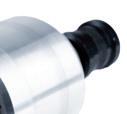






































MIRAI INTEX contributes to environmental protection by introducing innovative and advanced engineering technologies. Revolutionary refrigeration machines MIRAI Colduse only AIR as a refrigerant for any temperature from -40°C to -130°C, while leaving no ecological footprint.





• 63 mil. (8.9%) people are undernourished.

• Around 931 million tonnes (17%) of food goes to waste each year.
• Emition of CO2e is around 50 billion tonnes each year.

• Food loss and waste costs the global economy $936 billion a year.

• From 1880 to 2012, global temperature rose by 0.85°C.
• Oceans have warmed, the amounts of snow and ice have diminished and sea level has risen.
• Long term food storage at Low temperatures.
• Safe and reliable solution for long term Perishable products storage and transportation.
• Highly energy efficient refrigeration systems.




















• Applied in organic solvent and gas recovery from various manufacturing processes.

• No environment effects

• Zero F-Gas emission
• Air as refrigerant (GWP = 0)







































• High energy efficiency
• Oil free
MIRAI INTEX s.r.o. Turanka 98A, 627 00 Brno, CZECH REPUBLIC
MIRAI INTEX s.r.o. Turanka 98A, 627 00 Brno, CZECH REPUBLIC
Phone: +420 530 513 661, Email: sales@mirai-intex.com www.mirai-intex.com
Phone: +420 530 513 661, Email: sales@mirai-intex.com www.mirai-intex.com
There's much more below the surface. All Arneg Group products are also characterised by imagination, courage, ethics, common sense and respect for people and nature. That is why, with our 21 production plants and 20 international offices, the Arneg Group is global leader in commercial refrigeration and excellent furnishing solutions for small, medium and large stores.














brand is only the tip of the iceberg































































































































































































































































We are leader in the evolution of control and humidification technologies for the air conditioning and refrigeration sectors.
We’ve got a new idea of future and we want to contribute to fulfilling it with real action, to meet a demand for sustainable development that can wait no longer.























































































































































